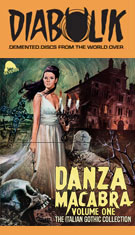
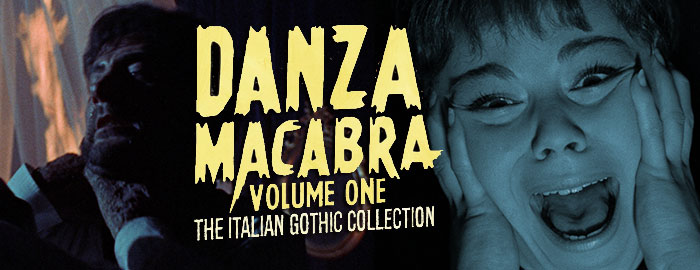
THE MONSTER OF THE OPERA
B&W, 1964, 84 mins 19 secs.
Directed by Renato Polselli
Starring Marco Mariani, Giuseppe Addobbati, Barbara Hawrads, Milena Vukotic
Severin Films (Blu-ray) (US RA HD), Artus (DVD) (France R2 PAL) / WS (1.66:1) (16:9)
THE SEVENTH GRAVE
B&W, 1965, 77 mins. 29 secs.
Directed by Garibaldi Serra Caracciolo
Starring Antonio Casale, Ferruccio Viotti, Gianni Dei
Severin Films (Blu-ray) (US R0 HD) / WS (1.66:1) (16:9)
SCREAM OF THE DEMON LOVER
Color, 1970, 98 mins. 19 secs.
Directed by José Luis Merino
Starring Erna Schurer, Carlos Quiney, Agostina Belli, Cristiana Galloni
Severin Films (Blu-ray) (US RA HD) / WS (1.85:1), Retromedia (DVD) (US R0 NTSC) / WS (1.78:1)
LADY FRANKENSTEIN
Color, 1971, 99 mins. 7 secs. / 83 mins. 38 secs..
Directed by Mel Welles
Starring Joseph Cotten, Rosalba Neri, Paul Muller, Mickey Hargitay, Paul Whiteman
Severin Films (Blu-ray) (US R0 HD), Nucleus Films (Blu-ray) (UK RB HD), Le Chat Qui Fume (Blu-ray) (France R0 HD), Shout Factory (DVD) (US R1 NTSC) / WS (1.78:1) (16:9)
The parade of Italian genre 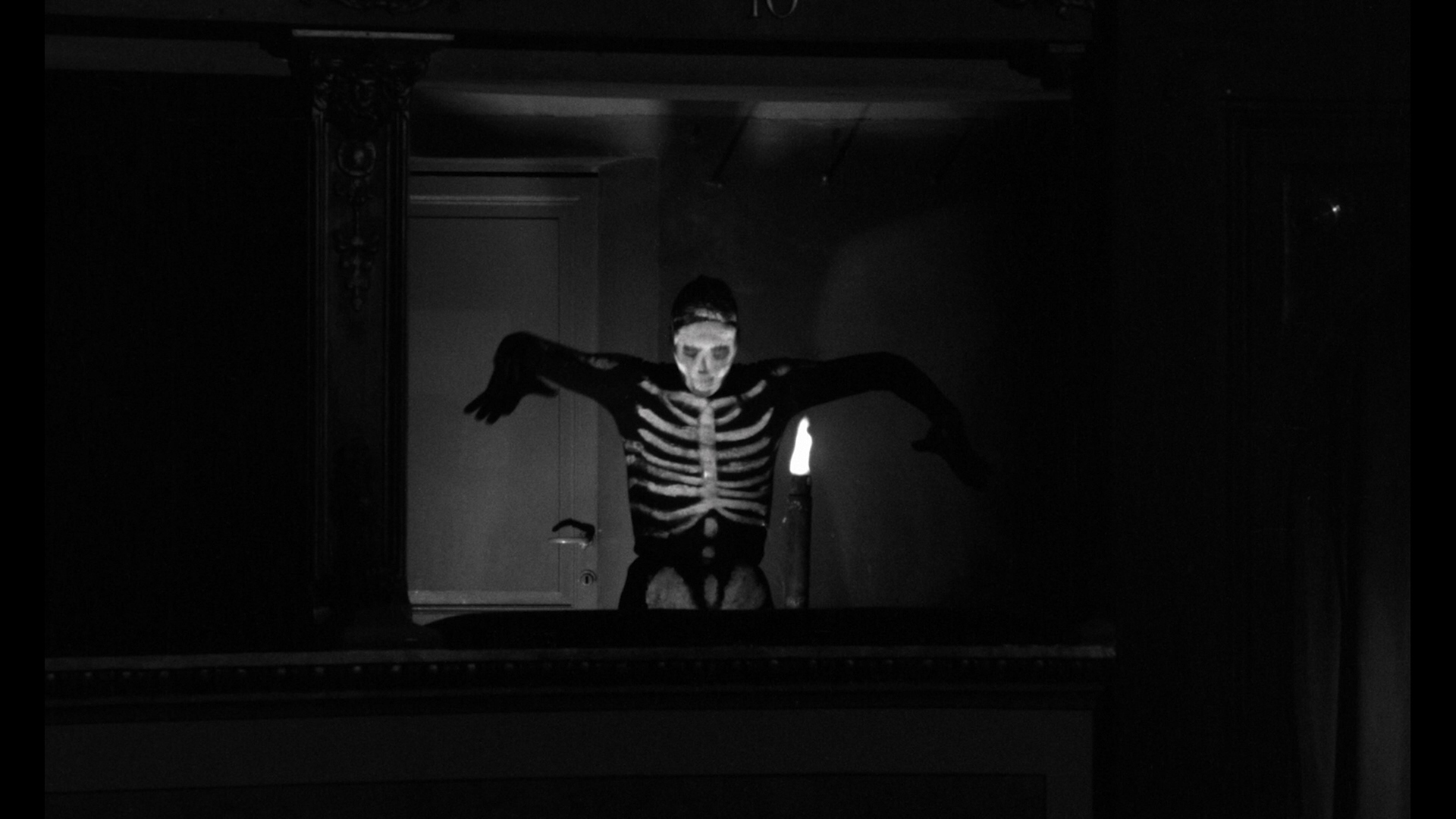 restorations shows no signs of waning with the Gothic chillers of the '60s and '70s receiving as much love in the Blu-ray era
restorations shows no signs of waning with the Gothic chillers of the '60s and '70s receiving as much love in the Blu-ray era 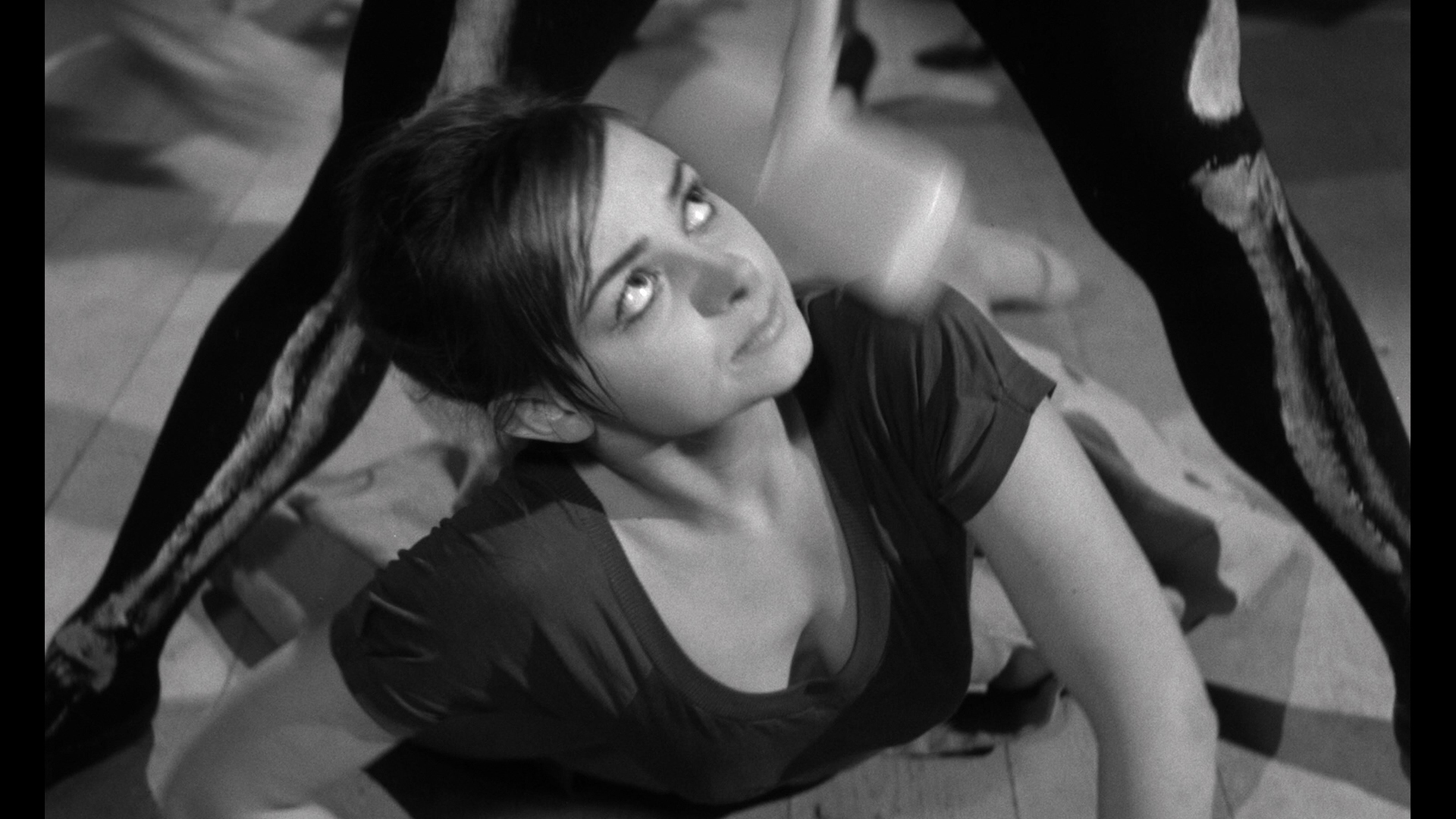 as the giallo or Euro western, to name but two examples. A four-disc Severin Films set released in 2023, Danza Macabra Volume One: The Italian Gothic Collection, is a follow-up in all but name to the prior year's Gothic Fantastico: Four Italian Tales of Terror from Arrow Video, with both sets produced by Diabolique's Kat Ellinger. Again this presents a quartet of atmospheric Italian genre films with a Gothic sensibility, half of which were given U.S. theatrical and home video releases in various forms while the other two have been completely ignored until now. You won't find the actual film Danza Macabra here (fingers crossed for volume two!), but all the ones you do get provide a solid fix of castles, screams, and baroque storylines from a bygone era.
as the giallo or Euro western, to name but two examples. A four-disc Severin Films set released in 2023, Danza Macabra Volume One: The Italian Gothic Collection, is a follow-up in all but name to the prior year's Gothic Fantastico: Four Italian Tales of Terror from Arrow Video, with both sets produced by Diabolique's Kat Ellinger. Again this presents a quartet of atmospheric Italian genre films with a Gothic sensibility, half of which were given U.S. theatrical and home video releases in various forms while the other two have been completely ignored until now. You won't find the actual film Danza Macabra here (fingers crossed for volume two!), but all the ones you do get provide a solid fix of castles, screams, and baroque storylines from a bygone era.
After scoring his first international success with 1960's The Vampire and the Ballerina, director Renato Polselli, the madman who also gave us Black Magic Rites and Delirium, returned to the world of cadaverous curtain calls with 1964's The Monster of the Opera (Il mostro dell'opera), also known as The Vampire of the Opera. Either too weird for English-language distribution or just lost in the glut of Gothics at the time, this one doesn't waste time by launching right out of the gate with vampires, pitchforks, screaming, and a frantic round of patty cake in the first couple of minutes. There's a good reason this one has built up a reputation over the years as one of the craziest Italian horror films of the 1960s, and its much-needed U.S. debut here is a cause for rejoicing.
An old theater is secured by 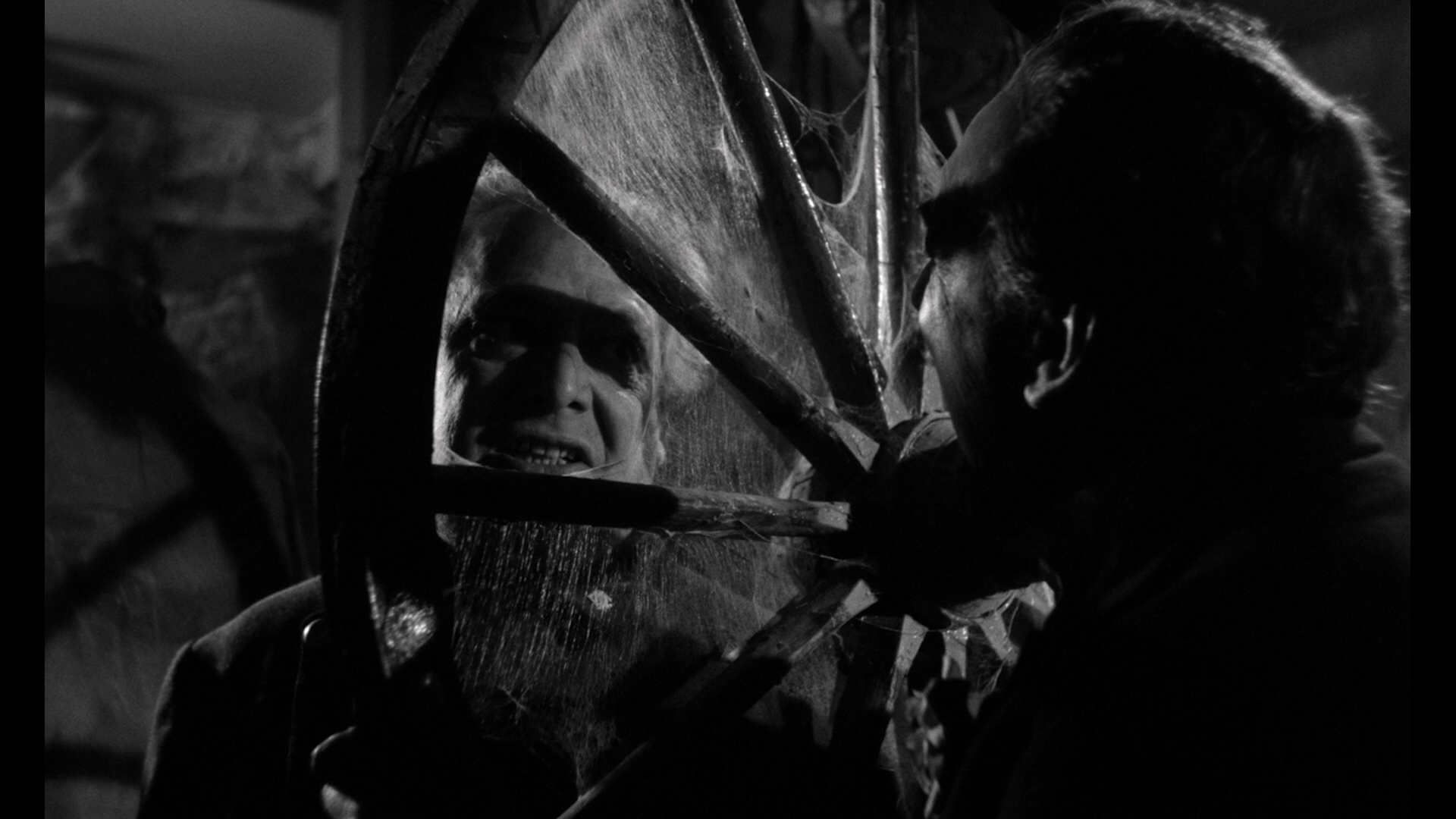 young, ambitious theater producer Sandro (Tomb of Torture's Mariani) for a frenzied new production involving dancing
young, ambitious theater producer Sandro (Tomb of Torture's Mariani) for a frenzied new production involving dancing  skeletons, torches, robes, and other macabre trappings. Among the dancers are plenty of pranksters and lesbians, not to mention leading lady Giulia (Hawards), who's having strange nightmares. On top of that, the old caretaker is alarmed by Giulia's presence and warns them all that the theater hasn't been used for years for a very good reason... and they'd better clear out if they value their lives. As it turns out, the building is the territory of a tux-wearing vampire named Stefano (Giuseppe Addobatti), who has a savage streak when he's awakened by the intruders.
skeletons, torches, robes, and other macabre trappings. Among the dancers are plenty of pranksters and lesbians, not to mention leading lady Giulia (Hawards), who's having strange nightmares. On top of that, the old caretaker is alarmed by Giulia's presence and warns them all that the theater hasn't been used for years for a very good reason... and they'd better clear out if they value their lives. As it turns out, the building is the territory of a tux-wearing vampire named Stefano (Giuseppe Addobatti), who has a savage streak when he's awakened by the intruders.
A troubled production by all accounts that took a couple of years to reach Italian screens, The Monster of the Opera delivers everything you'd want from a film like this including cobwebs, creepy props galore, swirling stage fog, flickering firelight, and a jaw-dropping climax involving diabolical interpretive dancing and tons of hungry female vampires shackled to a wall. Polselli's berserk visual style was already in full bloom by this point with his camera refusing to sit still for more than a couple of seconds, and while the plotline itself seems to hit the usual tropes (right down to that old reincarnated lost love idea), the execution here is what makes all the difference.
As mentioned above, this film was barely shown outside of Italy but did make the rounds on the gray market in various poor-looking iterations. A very rare instance of a French DVD from Artus sporting English subtitles turned up in 20212, with extras including a French appraisal by Alain Petit (25m36s), a 2m30s gallery, and the French trailer. The feature 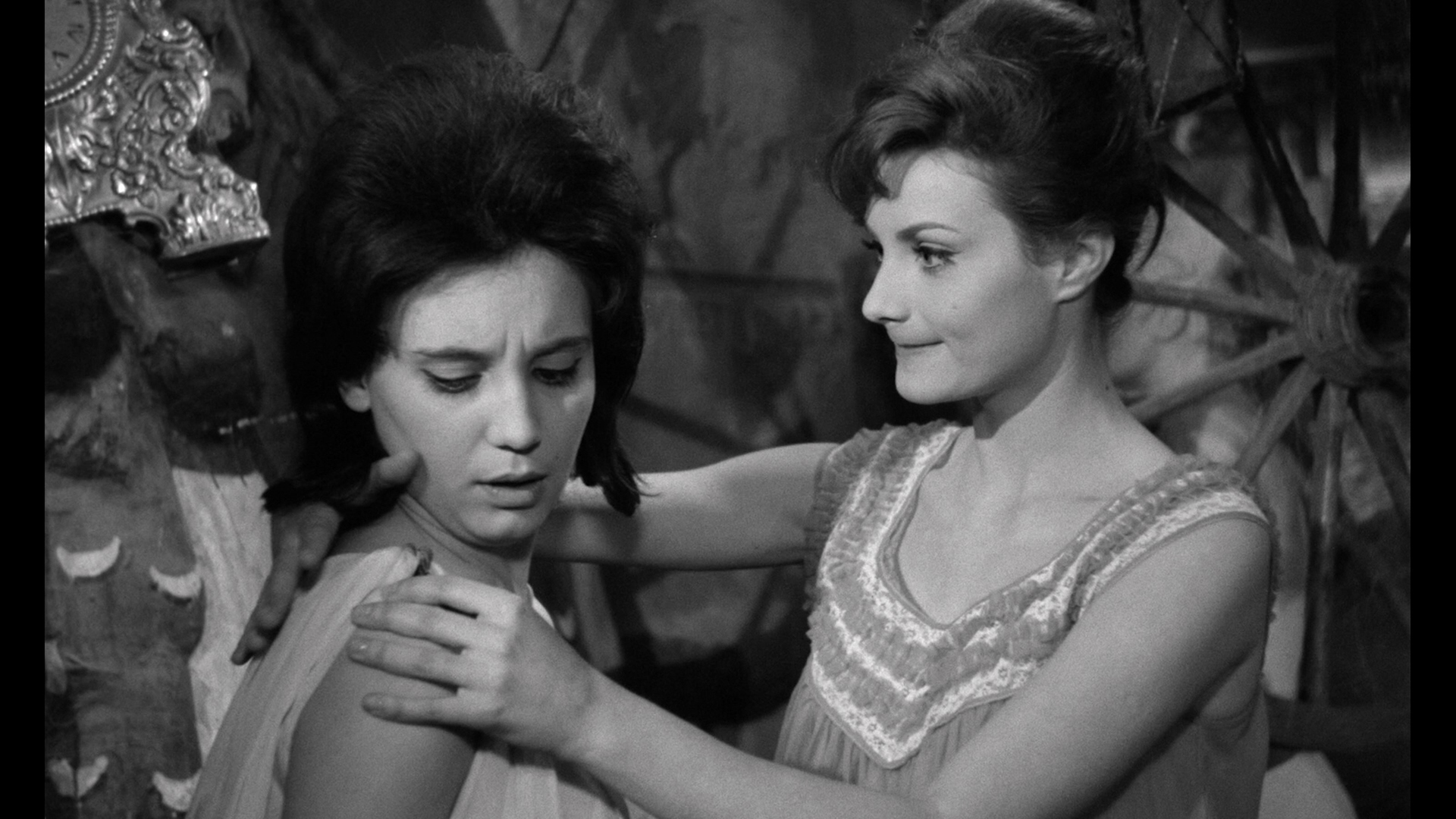 itself was taken from a dark French theatrical print (with inserts from an Italian one where needed) in fairly rough shape, with
itself was taken from a dark French theatrical print (with inserts from an Italian one where needed) in fairly rough shape, with 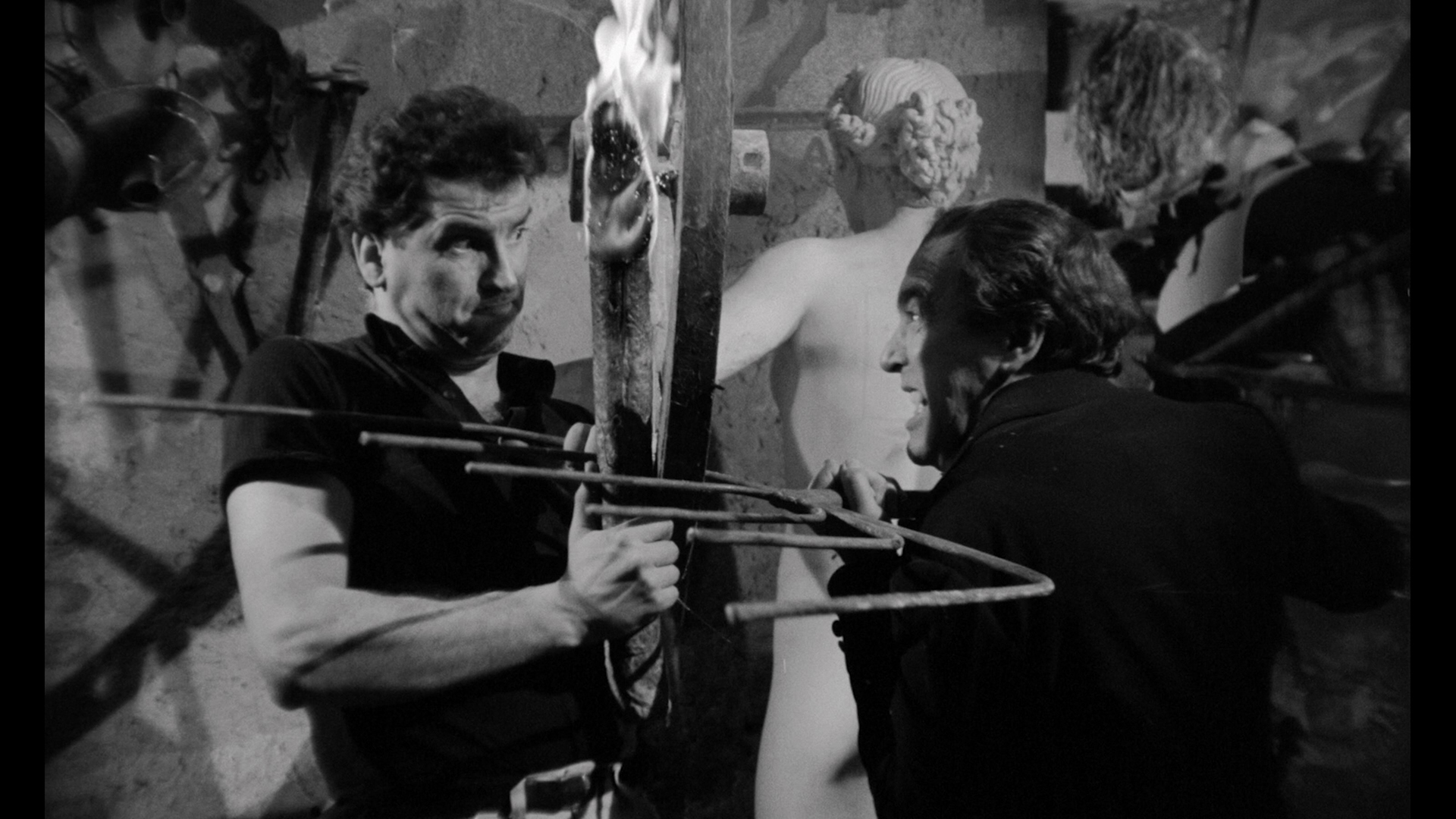 a unique main title sequence featuring a rose versus the cobweb design of the Italian version. The Severin Blu-ray marks the film's global HD debut and looks spectacular, featuring far more detail, visual info, and atmosphere than we've ever had before. It's a real treat and should do a lot to bolster the reputation of Polselli's film, which usually tends to get dismissed in genre publications. The Italian DTS-HD MA 2.0 track is also in mint condition and features optional yellow English subtitles. A new audio commentary by Ellinger is a good-humored survey of the film and its connections to Bram Stoker, Roger Vadim, and Terence Fisher, with a great deal about the director whom she dubs "the Bob Fosse of Gothic horror." The featurette "Terror At The Opera" (30m30s) has screenwriter Ernesto Gastaldi covering his writing of his Polselli films in the last stretch of a "hungry" period of his life (this one following Vampire and the Ballerina) and his previous collaborations that all had an impact on this particular production (which he doesn't feel is really his own work). In "Capodimonte Gothic" (14m22s), Mark Thompson Ashworth covers why he likes Polselli films so much and touches on other films connected to this one, while "Radio Polselli" (21m30s) is an archival radio chat with the director covering his career from the early '50s onward. The French trailer is also included, newly composited from the HD
a unique main title sequence featuring a rose versus the cobweb design of the Italian version. The Severin Blu-ray marks the film's global HD debut and looks spectacular, featuring far more detail, visual info, and atmosphere than we've ever had before. It's a real treat and should do a lot to bolster the reputation of Polselli's film, which usually tends to get dismissed in genre publications. The Italian DTS-HD MA 2.0 track is also in mint condition and features optional yellow English subtitles. A new audio commentary by Ellinger is a good-humored survey of the film and its connections to Bram Stoker, Roger Vadim, and Terence Fisher, with a great deal about the director whom she dubs "the Bob Fosse of Gothic horror." The featurette "Terror At The Opera" (30m30s) has screenwriter Ernesto Gastaldi covering his writing of his Polselli films in the last stretch of a "hungry" period of his life (this one following Vampire and the Ballerina) and his previous collaborations that all had an impact on this particular production (which he doesn't feel is really his own work). In "Capodimonte Gothic" (14m22s), Mark Thompson Ashworth covers why he likes Polselli films so much and touches on other films connected to this one, while "Radio Polselli" (21m30s) is an archival radio chat with the director covering his career from the early '50s onward. The French trailer is also included, newly composited from the HD  master.
master.
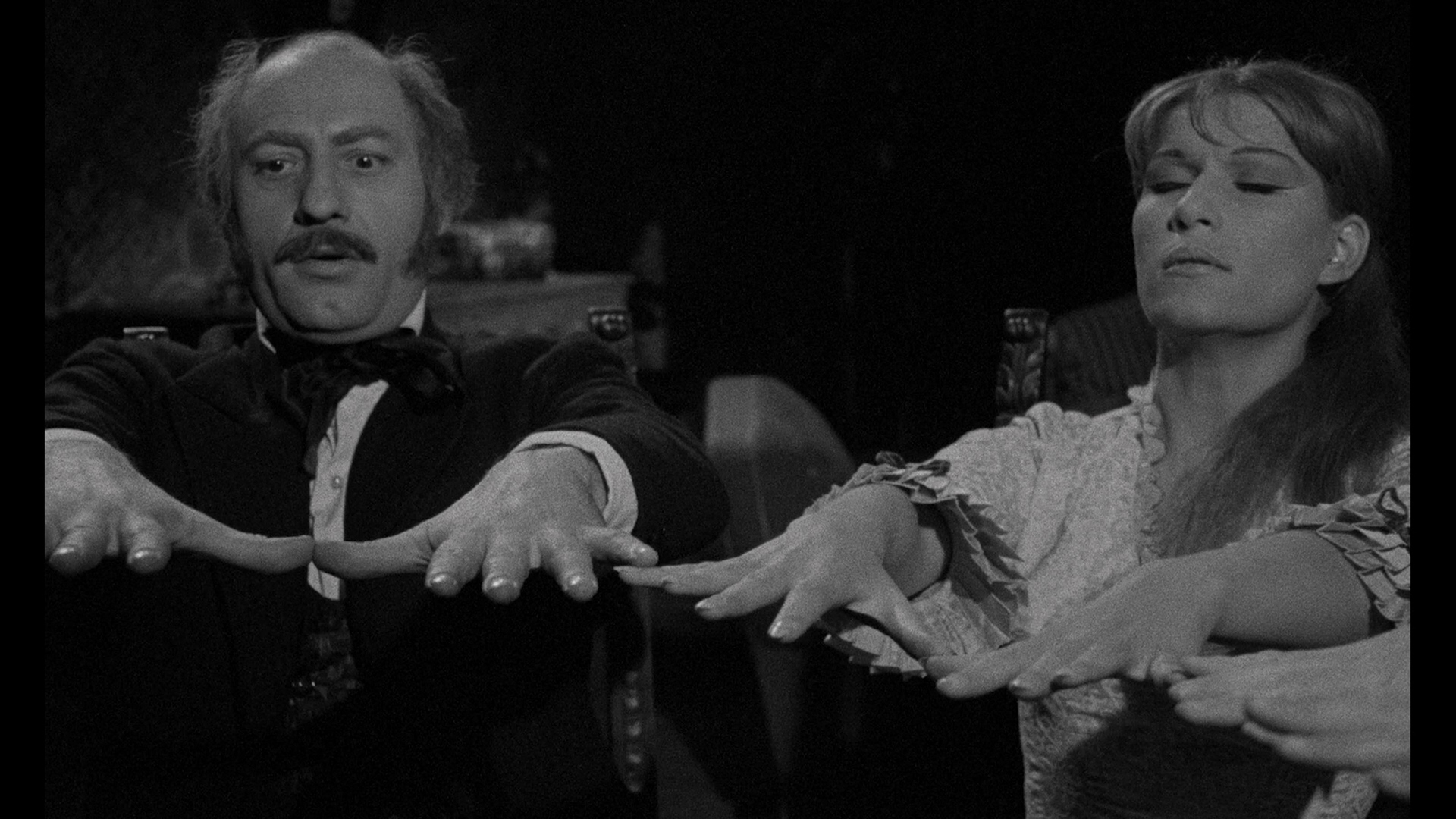 Disc two features the most obscure film in the set by far, 1966's The Seventh Grave, which was impossible to see outside of extremely dupey bootlegs before this release. Set in an amusing facsimile of 19th-century Scotland, it follows a group of travelers from America and Great Britain summoned by a notary to the desolate estate of the late Sir Reginald, a purported hiding place for the treasure of the pirate Sir Francis Drake. After stopping off at the rural Rooster Inn to chow down on some lard omelets, they reach their destination where a notary informs them about the terms of the will just in time for an escaped leper to start prowling around nearby. Following a seance in which they attempt to summon Drake's ghost to reveal the location of his treasure, the bodies start to pile up and our motley crew have to figure out who might be responsible.
Disc two features the most obscure film in the set by far, 1966's The Seventh Grave, which was impossible to see outside of extremely dupey bootlegs before this release. Set in an amusing facsimile of 19th-century Scotland, it follows a group of travelers from America and Great Britain summoned by a notary to the desolate estate of the late Sir Reginald, a purported hiding place for the treasure of the pirate Sir Francis Drake. After stopping off at the rural Rooster Inn to chow down on some lard omelets, they reach their destination where a notary informs them about the terms of the will just in time for an escaped leper to start prowling around nearby. Following a seance in which they attempt to summon Drake's ghost to reveal the location of his treasure, the bodies start to pile up and our motley crew have to figure out who might be responsible.
Obviously shot on a very low budget and more than a big technically iffy in spots, The Seventh Grave does have a kind of shaggy charm about it including a nifty killer reveal and that evocative seance sequence. 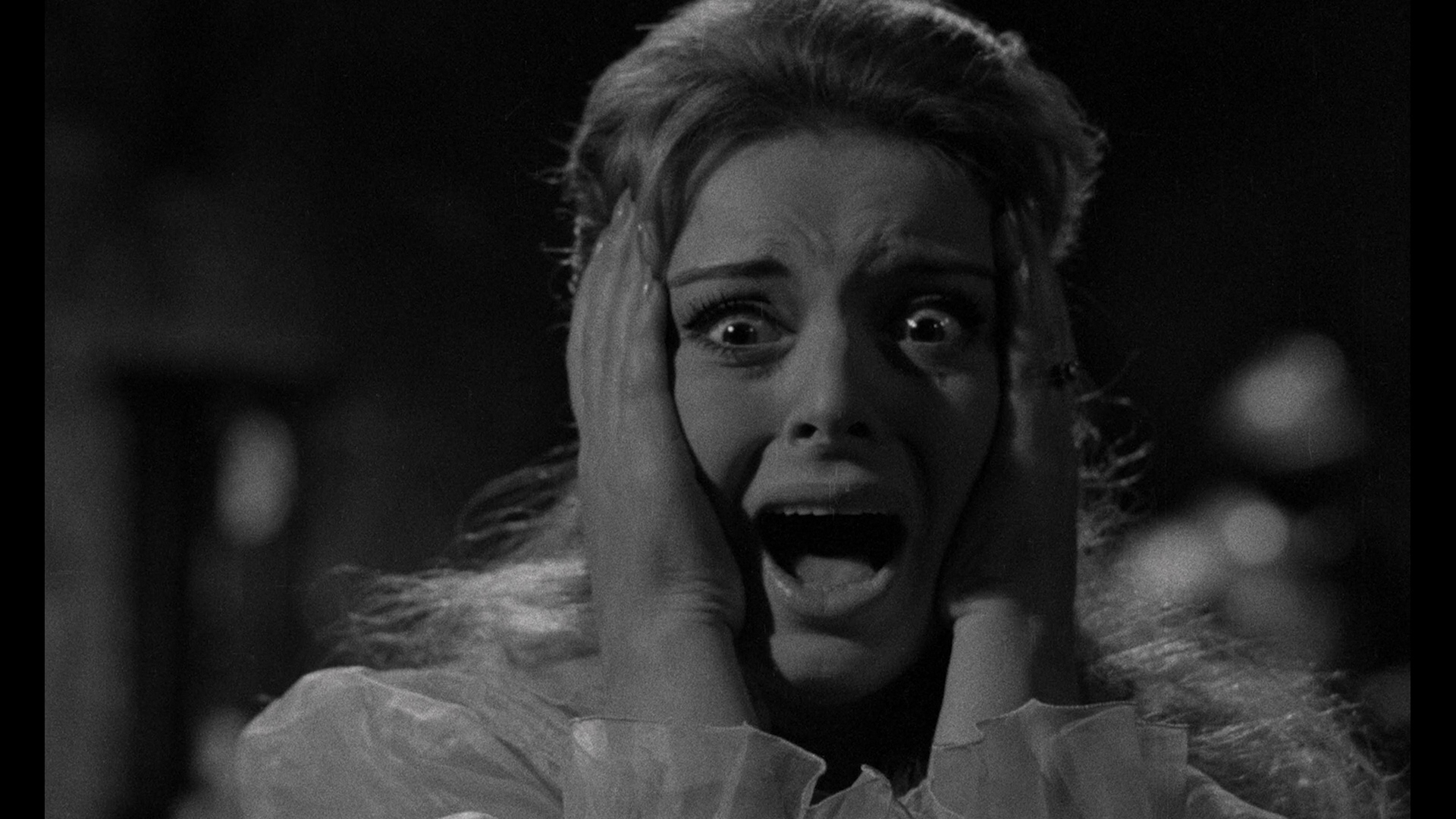 The cast is peppered with a few faces you might recognize from the lower depths of Italian genre cinema as well, most notably a very young Gianni Dei before he really wallowed around the following decade in films
The cast is peppered with a few faces you might recognize from the lower depths of Italian genre cinema as well, most notably a very young Gianni Dei before he really wallowed around the following decade in films 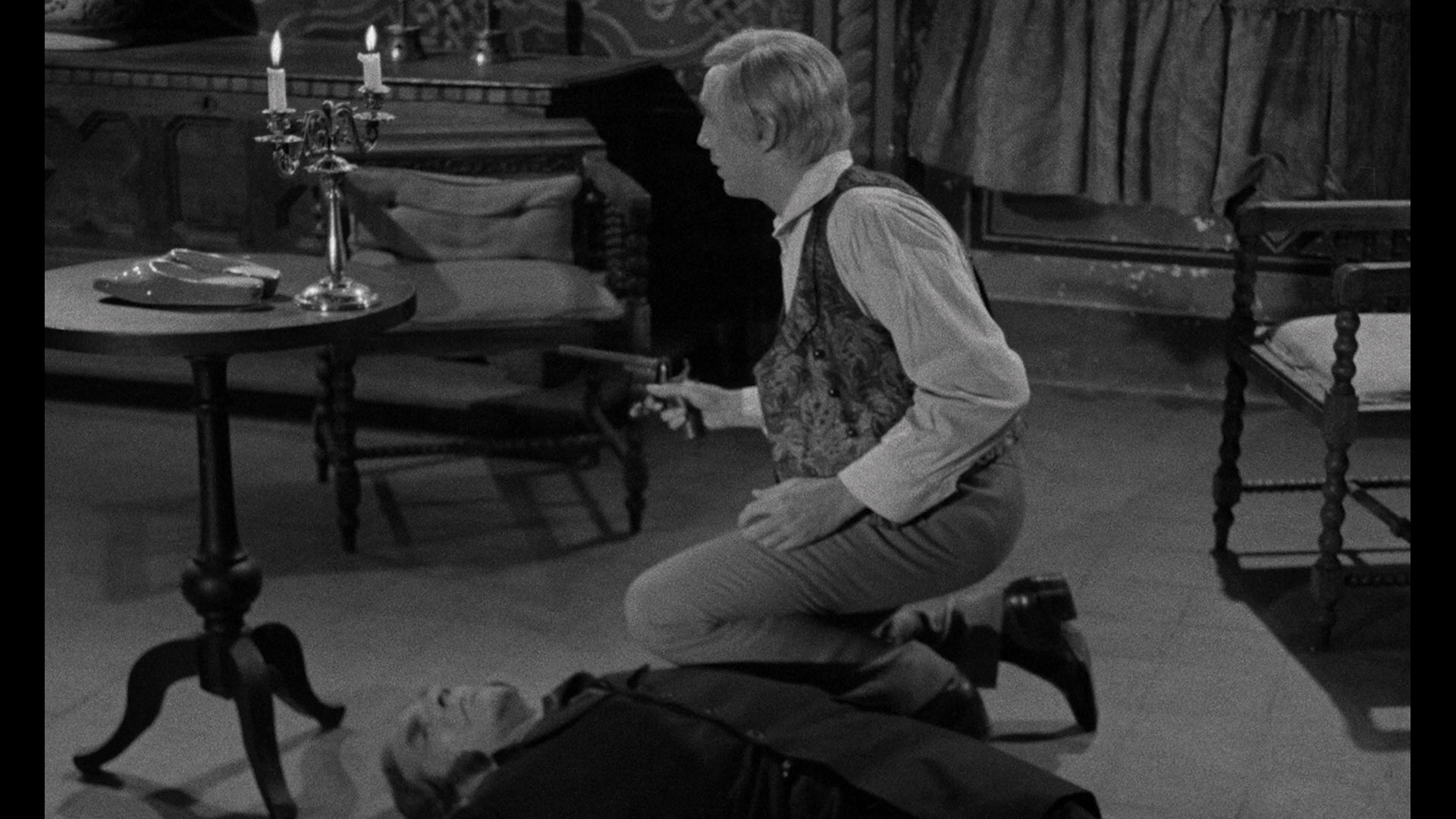 like Patrick Still Lives, Giallo in Venice, Sex of the Witch, and his undeniably memorable slo-mo role in A White Dress in Mariale. It's tempting to read this as a fusion of the Gothic and the giallo a la The Murder Clinic, though it also seems to owe quite a bit to the popular Krimi films coming out of West Germany at the time with its "treasure hunters with a body count in a castle" plotline feeling very similar to 1963's The Black Abbot. This wouldn't be the place to start if you're new to Italian horror by any means, but if you want to see a really rare curiosity that tackles the commercial demands of the time with its own skewed personality, it's certainly worthy of discovery.
like Patrick Still Lives, Giallo in Venice, Sex of the Witch, and his undeniably memorable slo-mo role in A White Dress in Mariale. It's tempting to read this as a fusion of the Gothic and the giallo a la The Murder Clinic, though it also seems to owe quite a bit to the popular Krimi films coming out of West Germany at the time with its "treasure hunters with a body count in a castle" plotline feeling very similar to 1963's The Black Abbot. This wouldn't be the place to start if you're new to Italian horror by any means, but if you want to see a really rare curiosity that tackles the commercial demands of the time with its own skewed personality, it's certainly worthy of discovery.
Details about this film and its one-shot director, Garibaldi Serra Caracciolo (credited as "Finney Cliff"), have been very scarce over the years, but the Severin Blu-ray delivers a surprising amount of substance all the same. The a/v presentation from the newly discovered negative looks perfect and makes you wonder why far more famous catalog 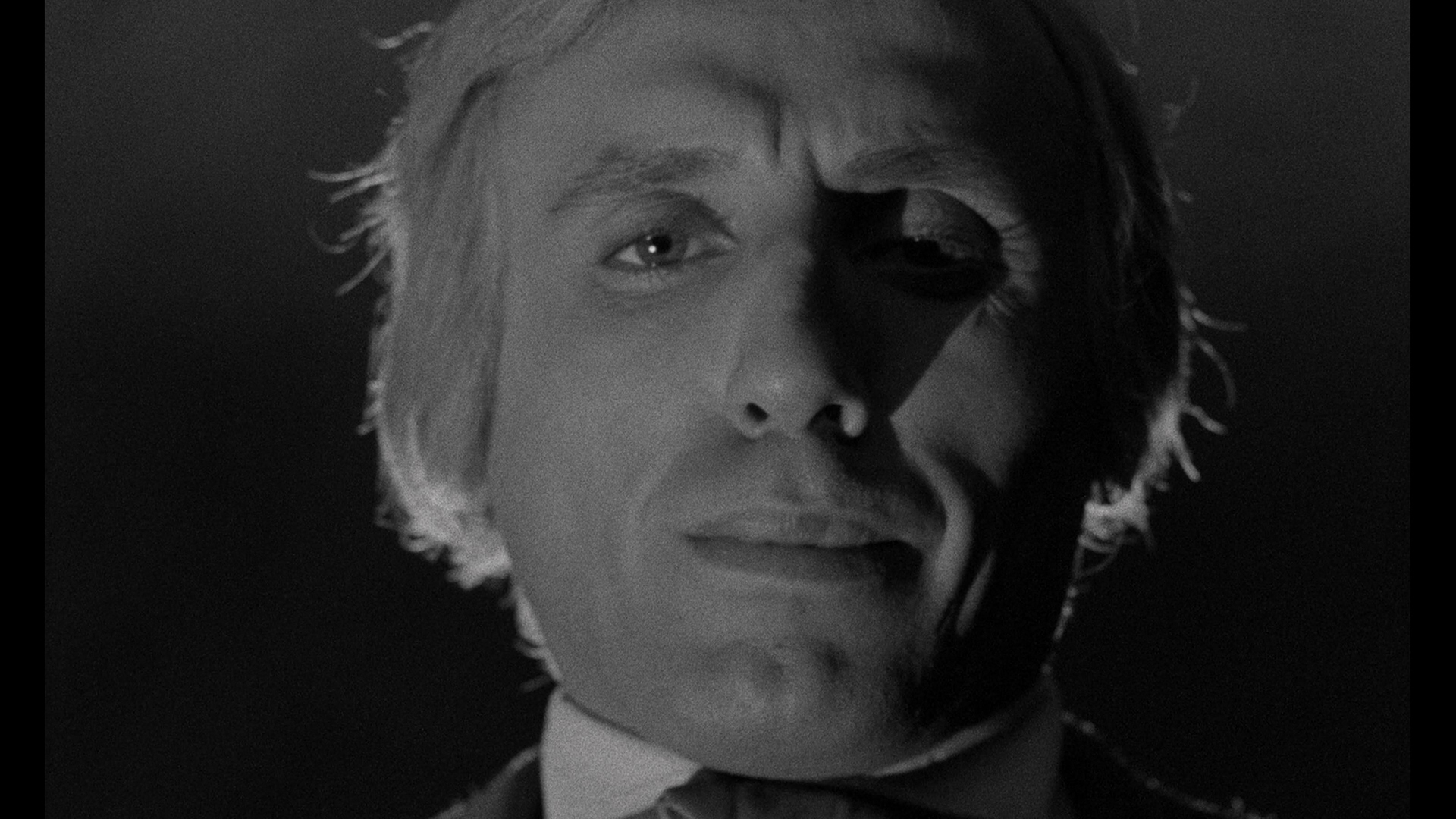 titles can't look this good, and the Italian DTS-HD MA 2.0 track is also pristine (with optional English subs provided). An
titles can't look this good, and the Italian DTS-HD MA 2.0 track is also pristine (with optional English subs provided). An 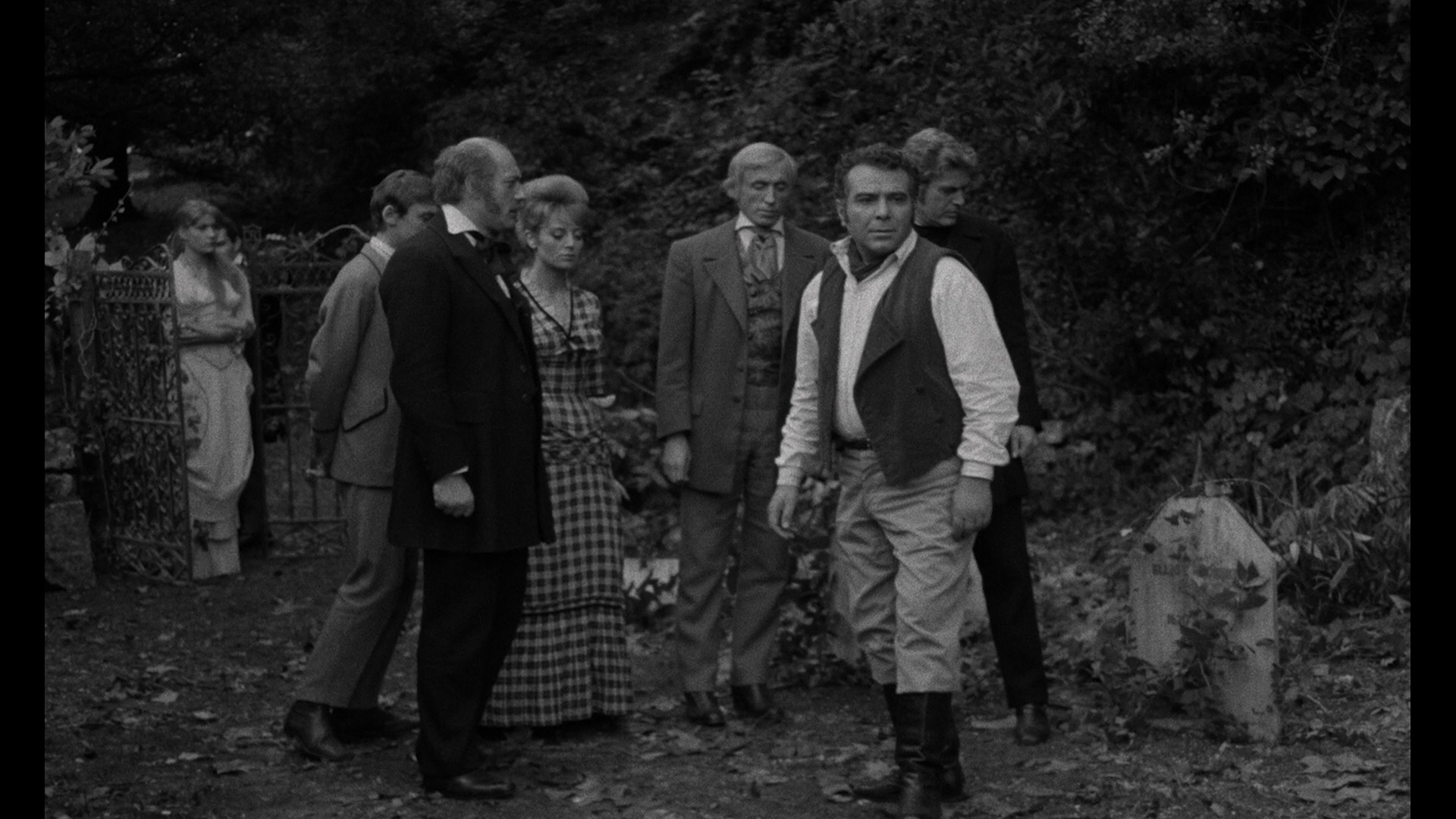 audio commentary by Rachael Nisbet is up to her usual extremely high standards, balancing useful info with perceptive insight as she makes a case for this film as worthy of study (and as an amusing depiction of Scotland you could only find in an Italian movie). Don't miss her reaction to the fearsome hamster of death prowling the halls, too. In "7 Graves and a Mystery" (12m52s), film historian Fabio Melelli tackles this film as a kind of mystery object in Italian cinema history, pulling apart various clues about its authorship and why it seemed to fall between the cracks. Finally in "English Aesthetic With Giallo Blood" (14m43s), Rachel Knightley provides a visual essay breaking down the conventions of the classic British Gothic interpolated here through the lens of Italian storytellers offering their own takes on the ideas of isolated madness and pastoral menace. She also addresses the savaging this film received by Roberto Curti in his Italian Gothic Horror Films, 1957-1969, noting how its flaws and eccentricities have something to offer as well.
audio commentary by Rachael Nisbet is up to her usual extremely high standards, balancing useful info with perceptive insight as she makes a case for this film as worthy of study (and as an amusing depiction of Scotland you could only find in an Italian movie). Don't miss her reaction to the fearsome hamster of death prowling the halls, too. In "7 Graves and a Mystery" (12m52s), film historian Fabio Melelli tackles this film as a kind of mystery object in Italian cinema history, pulling apart various clues about its authorship and why it seemed to fall between the cracks. Finally in "English Aesthetic With Giallo Blood" (14m43s), Rachel Knightley provides a visual essay breaking down the conventions of the classic British Gothic interpolated here through the lens of Italian storytellers offering their own takes on the ideas of isolated madness and pastoral menace. She also addresses the savaging this film received by Roberto Curti in his Italian Gothic Horror Films, 1957-1969, noting how its flaws and eccentricities have something to offer as well.
Next we head into the '70s with the first of two titles here 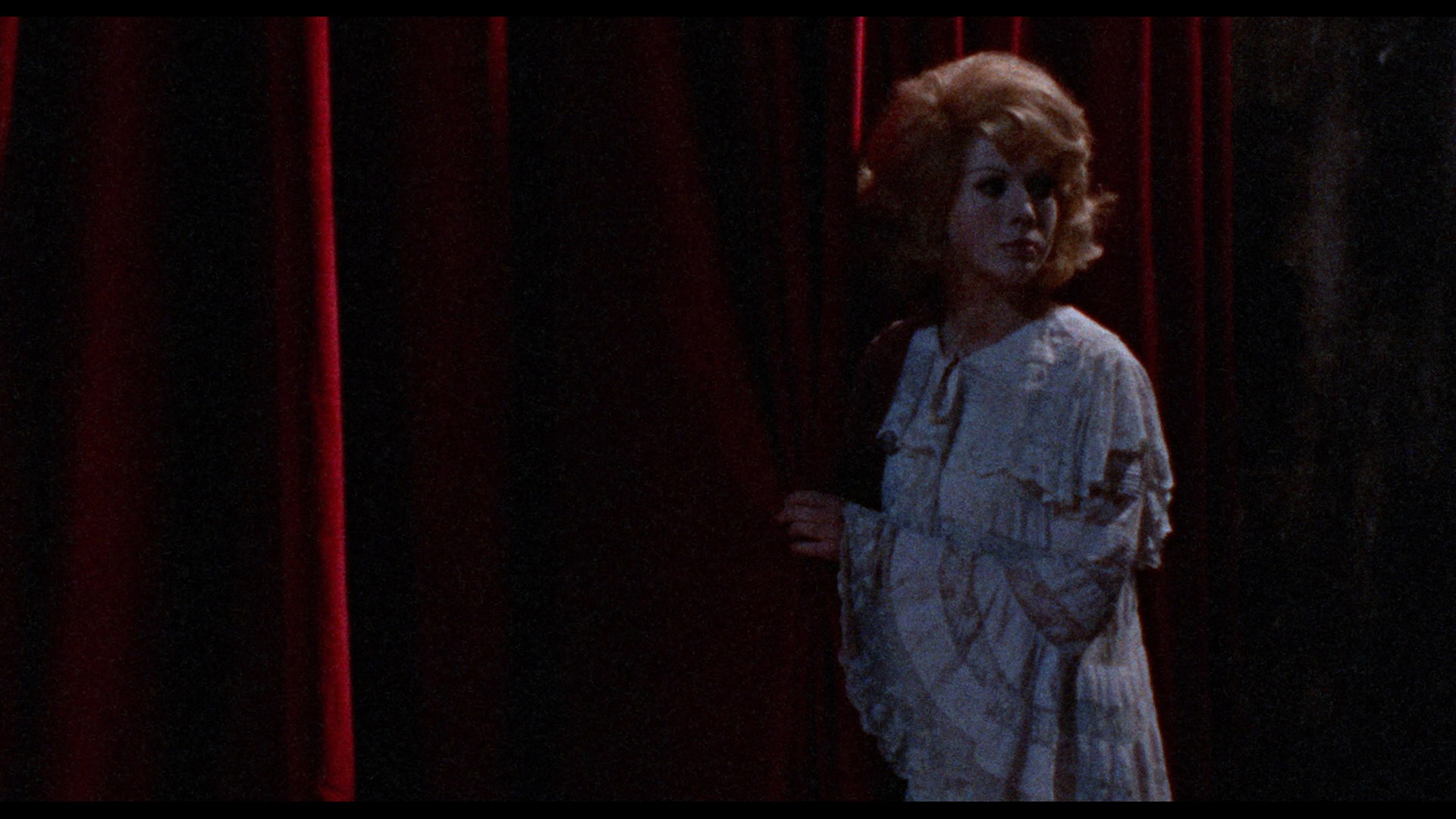 distributed by Roger Corman's New World Pictures:
distributed by Roger Corman's New World Pictures: 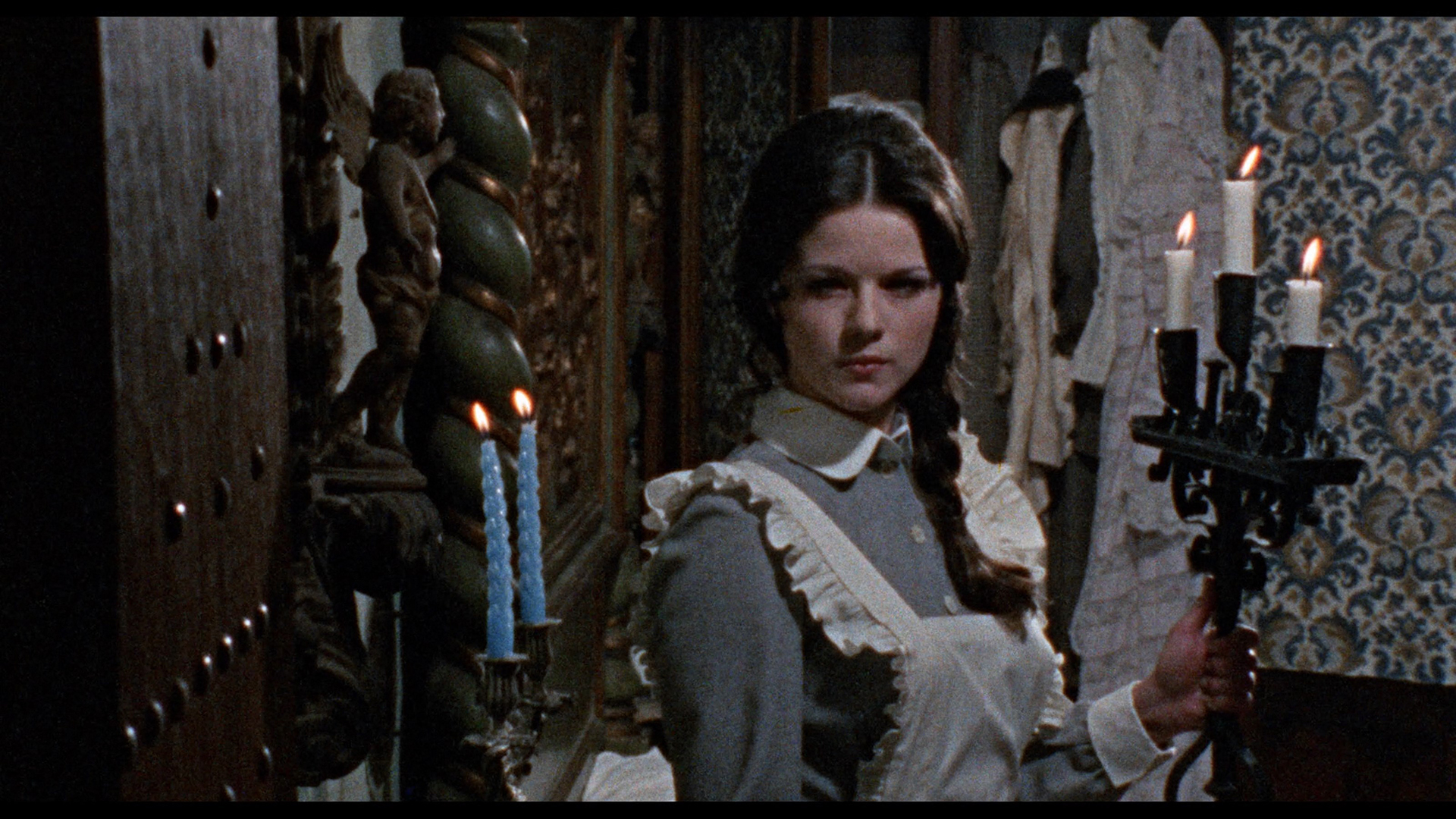 Scream of the Demon Lover, a Spanish-Italian production trimmed by over 20 minutes stateside from its rather indulgent original running time of 98 minutes. Shot on 16mm, the film has never looked all that hot on the big or small screens -- but for what it's worth, the Severin disc is probably as good as it could possibly get and marks a substantial improvement over what we've suffered through in the past.
Scream of the Demon Lover, a Spanish-Italian production trimmed by over 20 minutes stateside from its rather indulgent original running time of 98 minutes. Shot on 16mm, the film has never looked all that hot on the big or small screens -- but for what it's worth, the Severin disc is probably as good as it could possibly get and marks a substantial improvement over what we've suffered through in the past.
Hired as a biochemist, Ivanna (Strip Nude for Your Killer's Schurer, credited as "Jennifer Hartley") is trotted out to the countryside to work for the mysterious Baron Janos Dalmar (The Hanging Woman's Quiney). Something of a libertine by provincial standards, Ivanna is quick to note that the female population is being targeted by a homicidal presence that seems to be connected to the castle. In fact, something with charred and disfigured skin on its hands keeps attacking her in what seem to be nightmares, but of course we the viewers know better. Ivanna soon finds herself falling for the Baron, but it's inevitable that some dark family secrets will soon come to light with horrific results.
Though it takes a while to get moving, Scream of the Demon Lover is amusing drive- in fodder once the screaming, 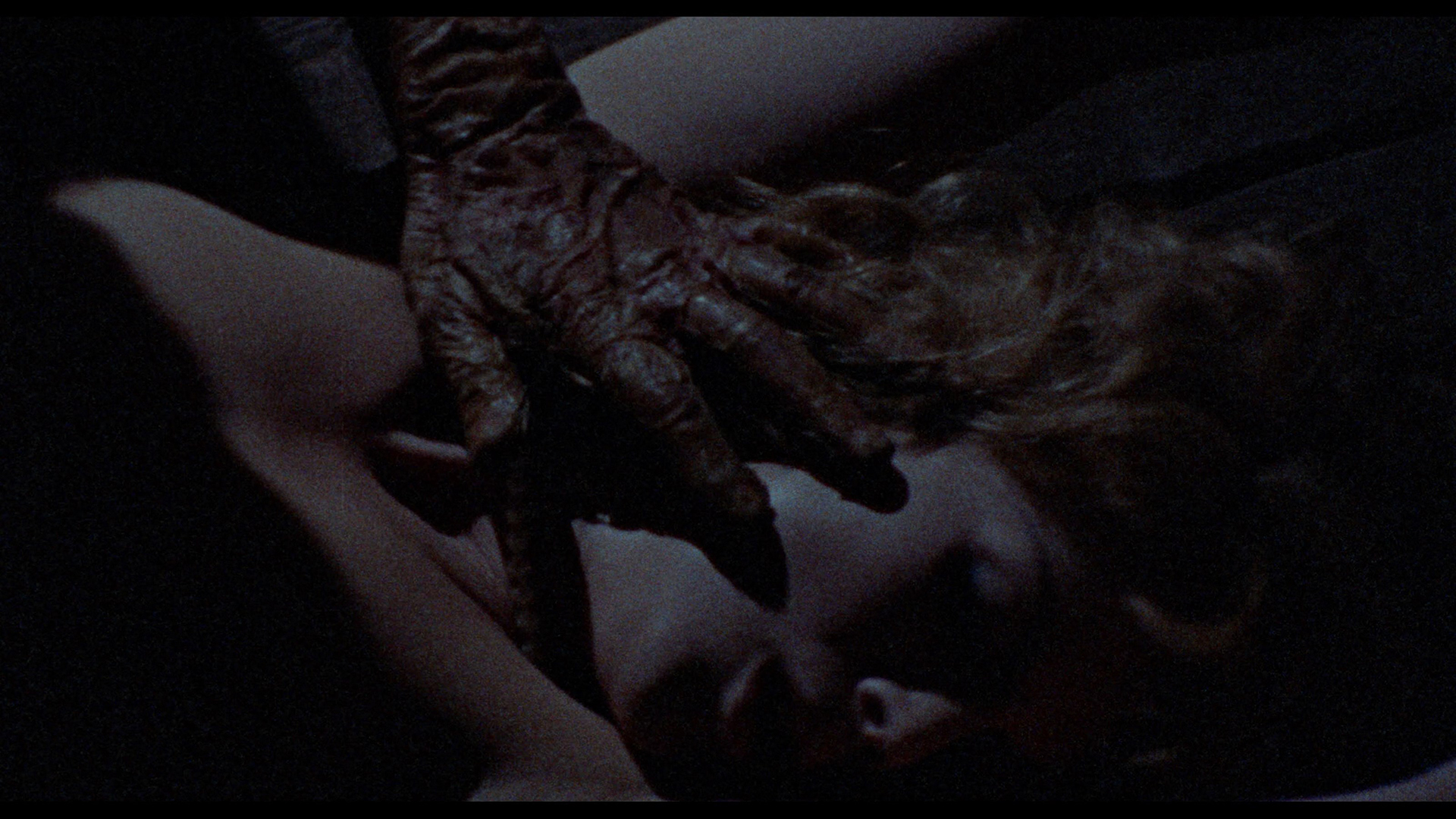 gratuitous nudity, and grotesque makeup effects finally kick in, and Schurer makes for a solid heroine who's quite a bit more proactive and resourceful than usual for the time. There's nothing here to really overhaul the formula, but the combination of Italian and Spanish horror is always a tasty one
gratuitous nudity, and grotesque makeup effects finally kick in, and Schurer makes for a solid heroine who's quite a bit more proactive and resourceful than usual for the time. There's nothing here to really overhaul the formula, but the combination of Italian and Spanish horror is always a tasty one 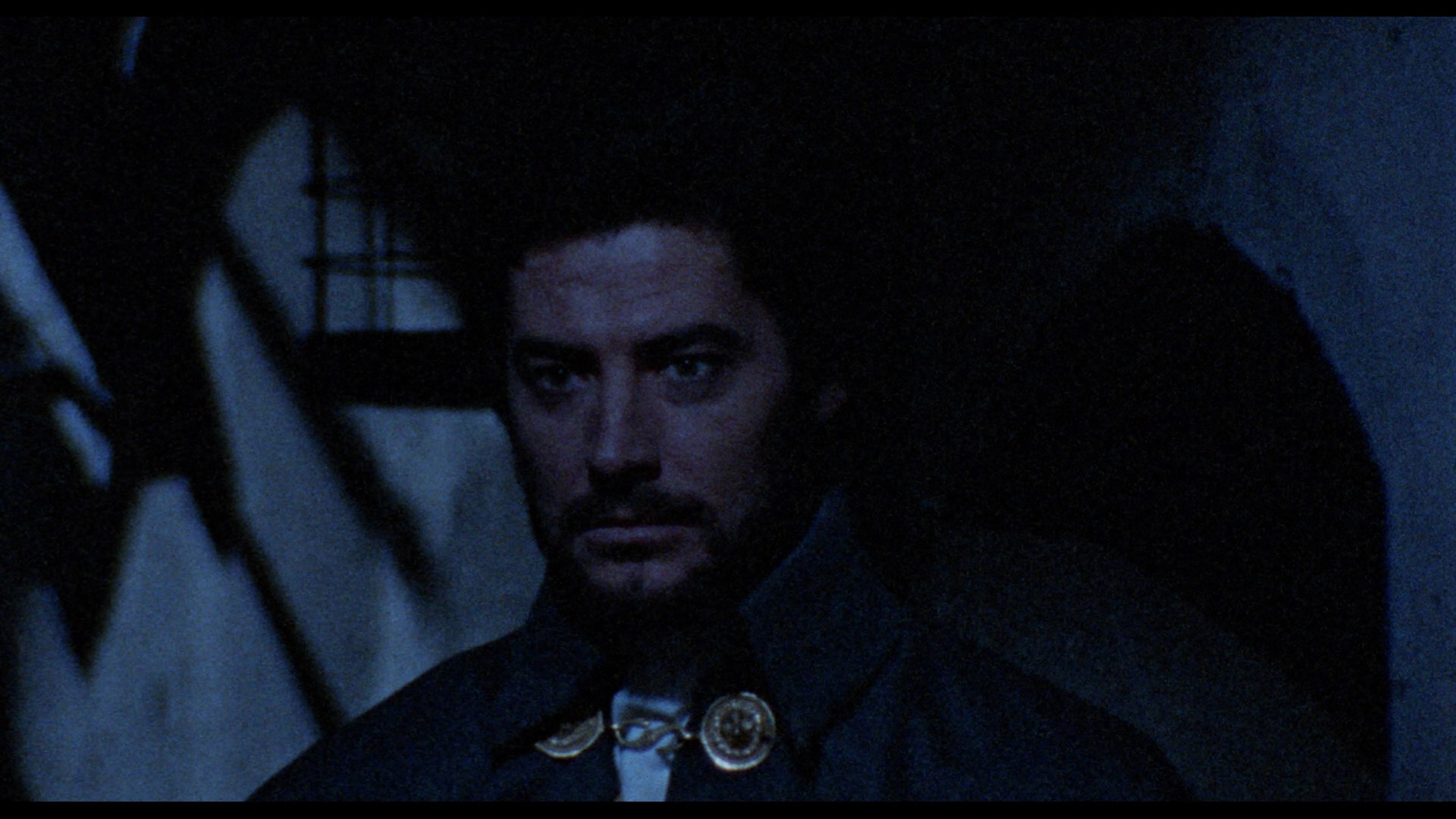 and pays off here with some colorful production design and lots of the usual candle-carrying ambiance.
and pays off here with some colorful production design and lots of the usual candle-carrying ambiance.
After its run as a drive-in staple with The Velvet Vampire, this film popped up on VHS from Wizard Video as Blood Castle and from Charter Video under its legit U.S. theatrical title, both reflecting the shorter cut. The film was later issued as a legally dubious DVD release of the full-length cut (as Blood Castle with a newly-generated title card) from Retromedia in 2003, featuring a non-anamorphic letterboxed transfer, heavy cropping, and poor detail. To make matter worse, there was correcting the day for night color timing which meant scenes intended to unfold after nightfall hilariously took place in broad, scorching daylight instead. A number of gray market versions floated around over the years from Sinister Cinema, Something Weird, etc.,; an improved anamorphic German DVD from Anolis turned up in 2007, followed by a pricey German 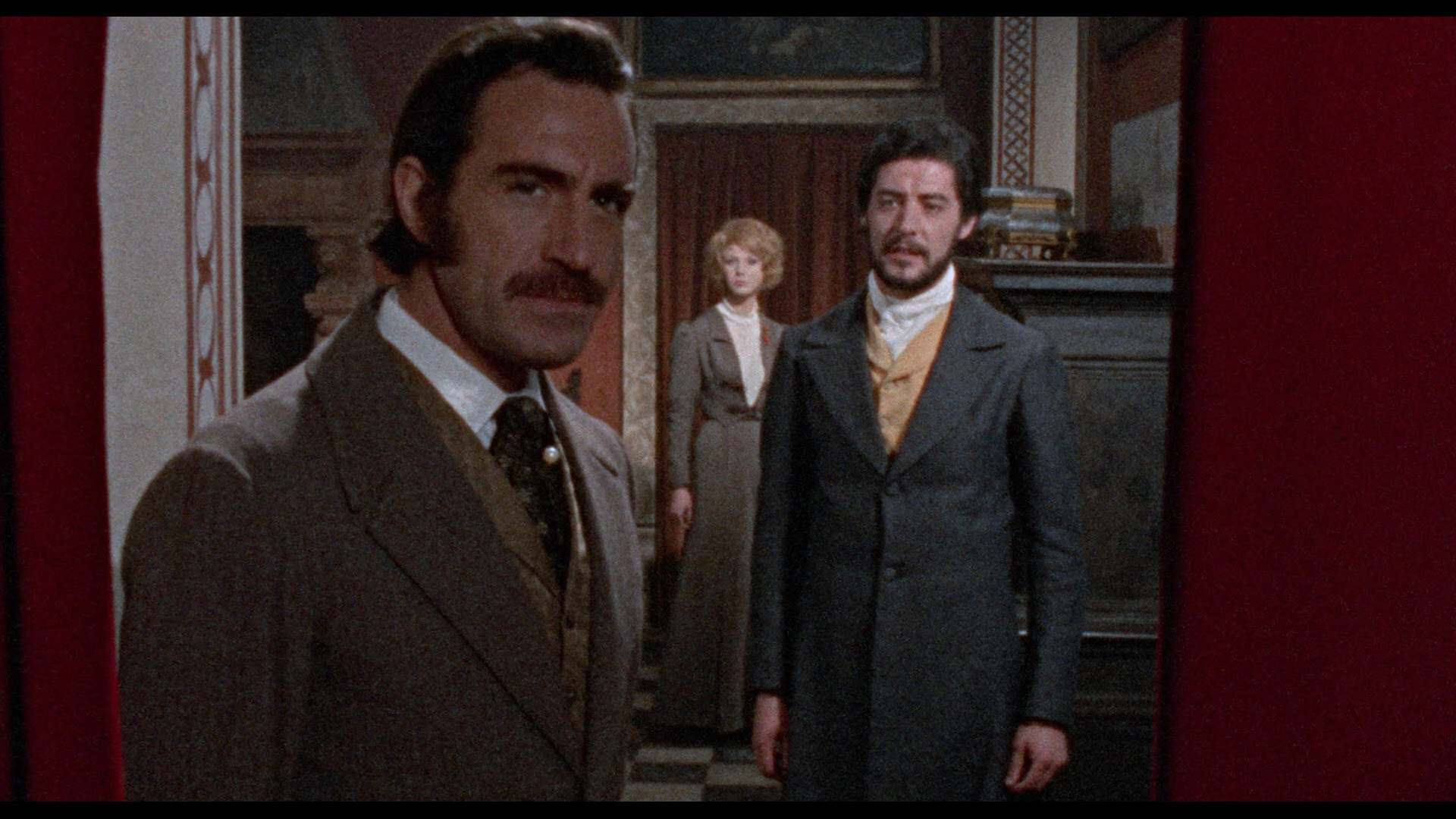 Blu-ray from X-Rated Kult in 2020. The Severin disc, as mentioned earlier, is a big improvement over any North American predecessors and comes fully uncut with more image info
Blu-ray from X-Rated Kult in 2020. The Severin disc, as mentioned earlier, is a big improvement over any North American predecessors and comes fully uncut with more image info 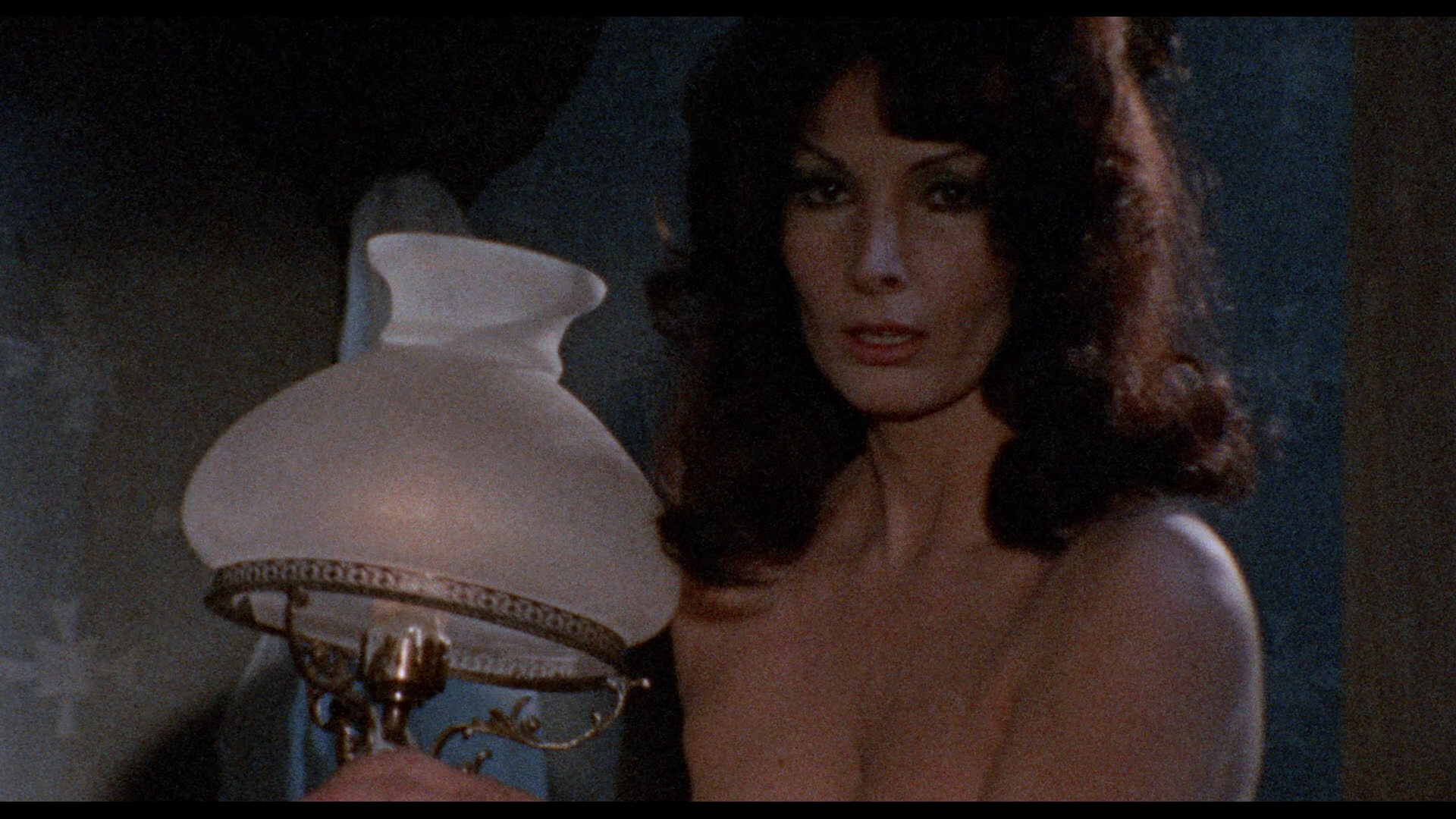 and better detail than before.
An opening disclaimer notes that the original 16mm single strand negative had suffered some deterioration, though there isn't much damage on display here. It's still a very grungy, grainy film though, so keep your expectations in check. The Italian and English tracks are provided (DTS-HD MA 2.0 mono) with optional English subtitles, and given that the film was shot without live sound, you might as well stick with the familiar English version at least on your first viewing.
and better detail than before.
An opening disclaimer notes that the original 16mm single strand negative had suffered some deterioration, though there isn't much damage on display here. It's still a very grungy, grainy film though, so keep your expectations in check. The Italian and English tracks are provided (DTS-HD MA 2.0 mono) with optional English subtitles, and given that the film was shot without live sound, you might as well stick with the familiar English version at least on your first viewing.
A thorough audio commentary by Rod Barnett and Robert Monell approaches this as akin to proto-feminist Gothic literature while also touching on the cast and crew, the editing of the U.S. version, their preference for the slower pacing of Gothic Spanish and Italian horror, and more. In "Scream Erna Scream!" (19m18s), Schurer looks back at the making of the film (her second with seance-obsessed director José Luis Merino, who also made The Hanging Woman) during a boom in Euro horror films, noting how she has a positive impression of it after a rewatch and sharing some stories from the set. "In the Castle of Blood" (38m59s) features Stephen Thrower delivering an engaging dissection of the film and its director including the genre-hopping at the time, the nature of Spanish filmmaking at a transitional period, and ties to other latter day color Gothics as well as plot elements related to earlier ones by Antonio Margheriti and Riccardo Freda. Also included is an English-language trailer as The Killers of the Castle of Blood, the title seen on the main feature itself.
Finally on disc four is the most familiar title in the set, Lady Frankenstein, an 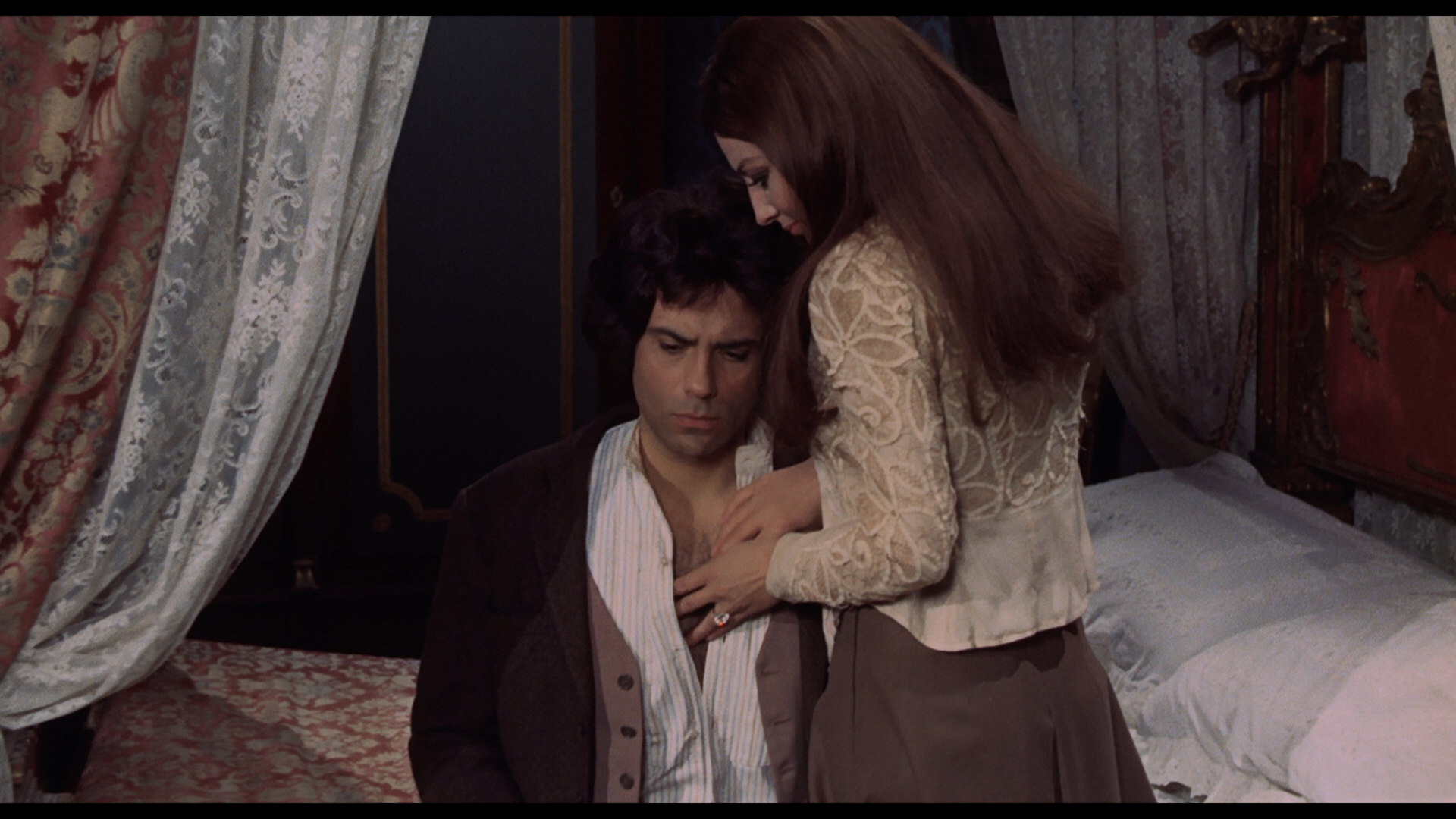 Italian acquisition by New World
Italian acquisition by New World 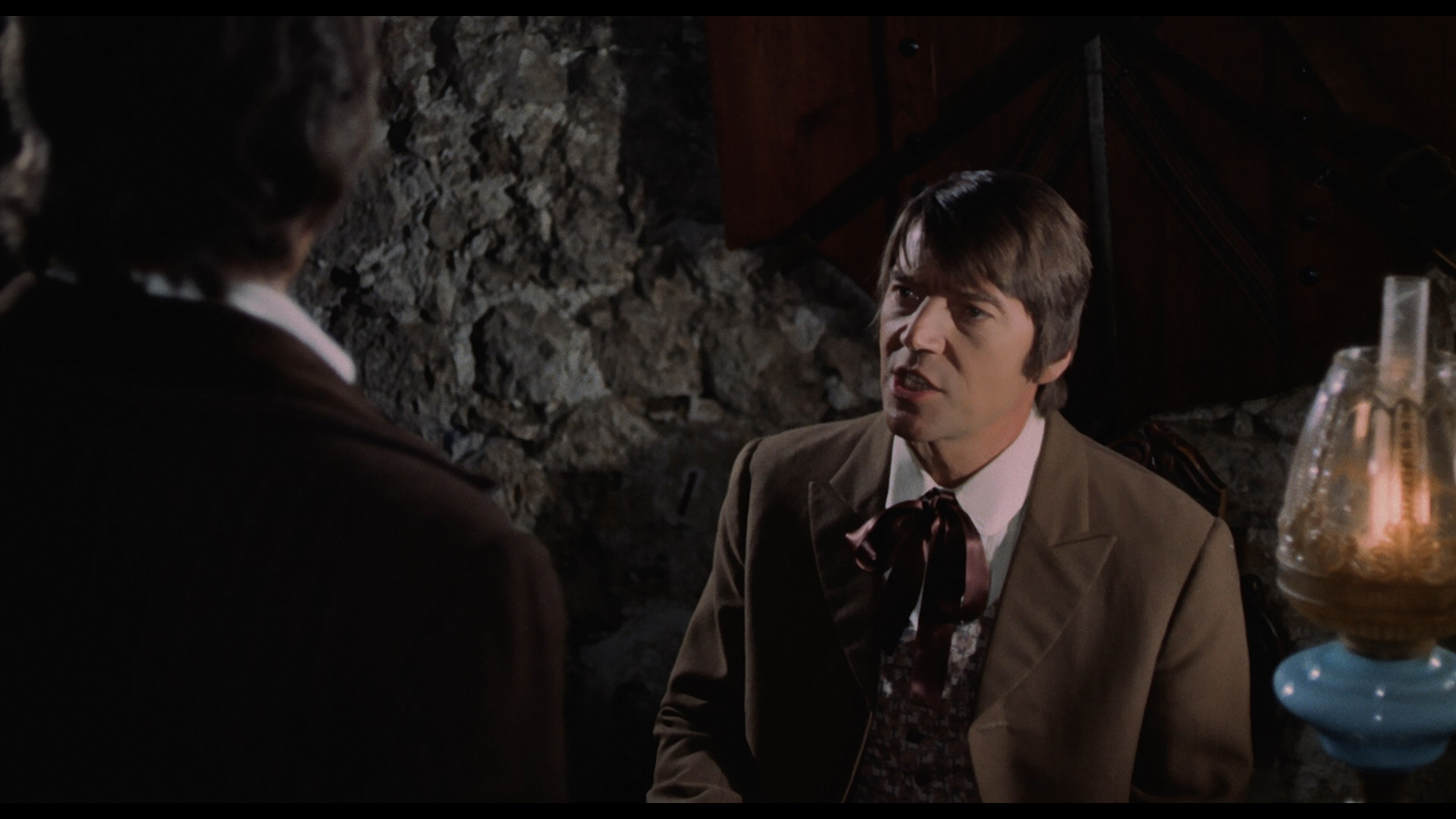 that’s been shuffled around on countless video labels in some absolutely miserable-looking editions until recent years. The much-loved and sometimes jaw-dropping slice of Gothic horror hokum stars '70s Euro horror icon Rosalba Neri (The Devil’s Wedding Night) as Tania, a surgeon who returns home to the castle of her father, Baron Frankenstein (Cotten). As anyone who’s seen more than one Frankenstein-themed film could already guess, dad has been up to no good doing unholy experiments on the dead with the help of his medical assistant, Charles (Jess Franco mascot Muller). When one fateful experiment trying to revive a dead body with a new brain goes awry, Tania decides to continue her father’s work despite the suspicions of a local police inspector (Hargitay). However, the misbegotten result of that first experiment is now running loose and threatening to blow the lid off the family’s dark scientific secrets.
that’s been shuffled around on countless video labels in some absolutely miserable-looking editions until recent years. The much-loved and sometimes jaw-dropping slice of Gothic horror hokum stars '70s Euro horror icon Rosalba Neri (The Devil’s Wedding Night) as Tania, a surgeon who returns home to the castle of her father, Baron Frankenstein (Cotten). As anyone who’s seen more than one Frankenstein-themed film could already guess, dad has been up to no good doing unholy experiments on the dead with the help of his medical assistant, Charles (Jess Franco mascot Muller). When one fateful experiment trying to revive a dead body with a new brain goes awry, Tania decides to continue her father’s work despite the suspicions of a local police inspector (Hargitay). However, the misbegotten result of that first experiment is now running loose and threatening to blow the lid off the family’s dark scientific secrets.
Lady Frankenstein belongs to the peculiar subgenre of monster movies made in countries like Italy and Spain in the wake of Hammer’s successful run in the ‘60s with Dracula and Frankenstein. Paul Naschy was the most prolific practitioner here, of course, with other oddball titles like Frankenstein’s Castle of Freaks and Saga of the Draculas offering 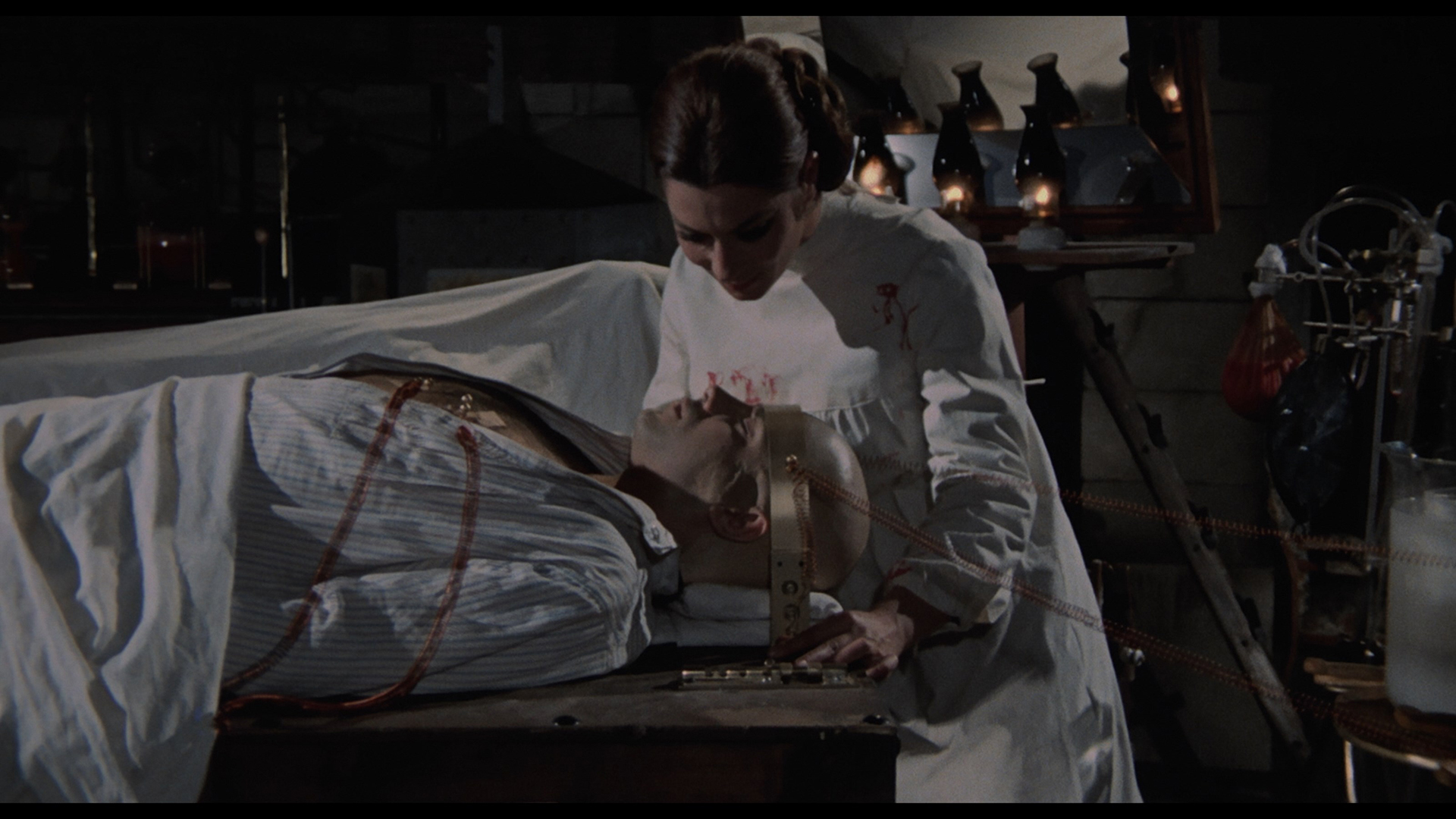 their own takes on shopworn material. This one proved to be more marketable than most thanks to its ingenious central gimmick of focusing on the
their own takes on shopworn material. This one proved to be more marketable than most thanks to its ingenious central gimmick of focusing on the 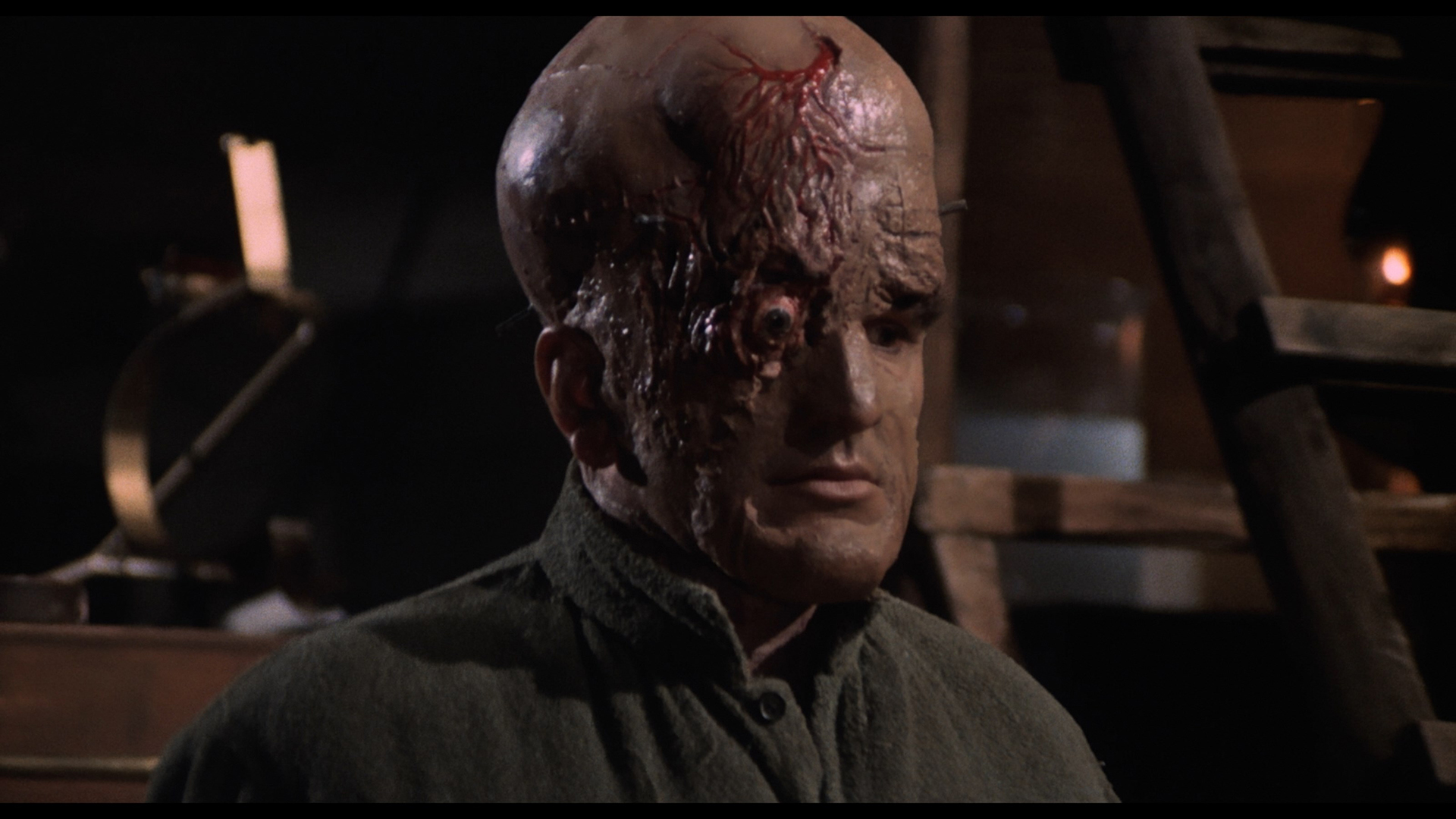 Baron’s buxom daughter as one of its mad scientists, providing a story justification for dollops of ‘70s-style nudity and gore. The film gets off to a bit of a pokey start, but once the mayhem kicks in, it’s pure drive-in bliss for horror buffs with a surprising cast of characters both in front of and behind the camera. For example, would you believe this was directed by Mel Welles, best remembered as Mr. Mushnick in the original The Little Shop of Horrors? On top of that the film is downright kinky at times, including some sequences that predate the even more depraved antics of Flesh of Frankenstein a couple of years later.
Baron’s buxom daughter as one of its mad scientists, providing a story justification for dollops of ‘70s-style nudity and gore. The film gets off to a bit of a pokey start, but once the mayhem kicks in, it’s pure drive-in bliss for horror buffs with a surprising cast of characters both in front of and behind the camera. For example, would you believe this was directed by Mel Welles, best remembered as Mr. Mushnick in the original The Little Shop of Horrors? On top of that the film is downright kinky at times, including some sequences that predate the even more depraved antics of Flesh of Frankenstein a couple of years later.
As mentioned before, this film has made the rounds in countless DVD editions with terrible image quality including a heavily censored version hosted by Elvira and a special edition DVD release from DVD Drive-In sanctioned by Welles, severely matted down from an already cropped 4x3 master; that said, it does include interviews with Welles and Neri, so die-hards might want it all the same. Nothing from the actual New World vaults was used for home video 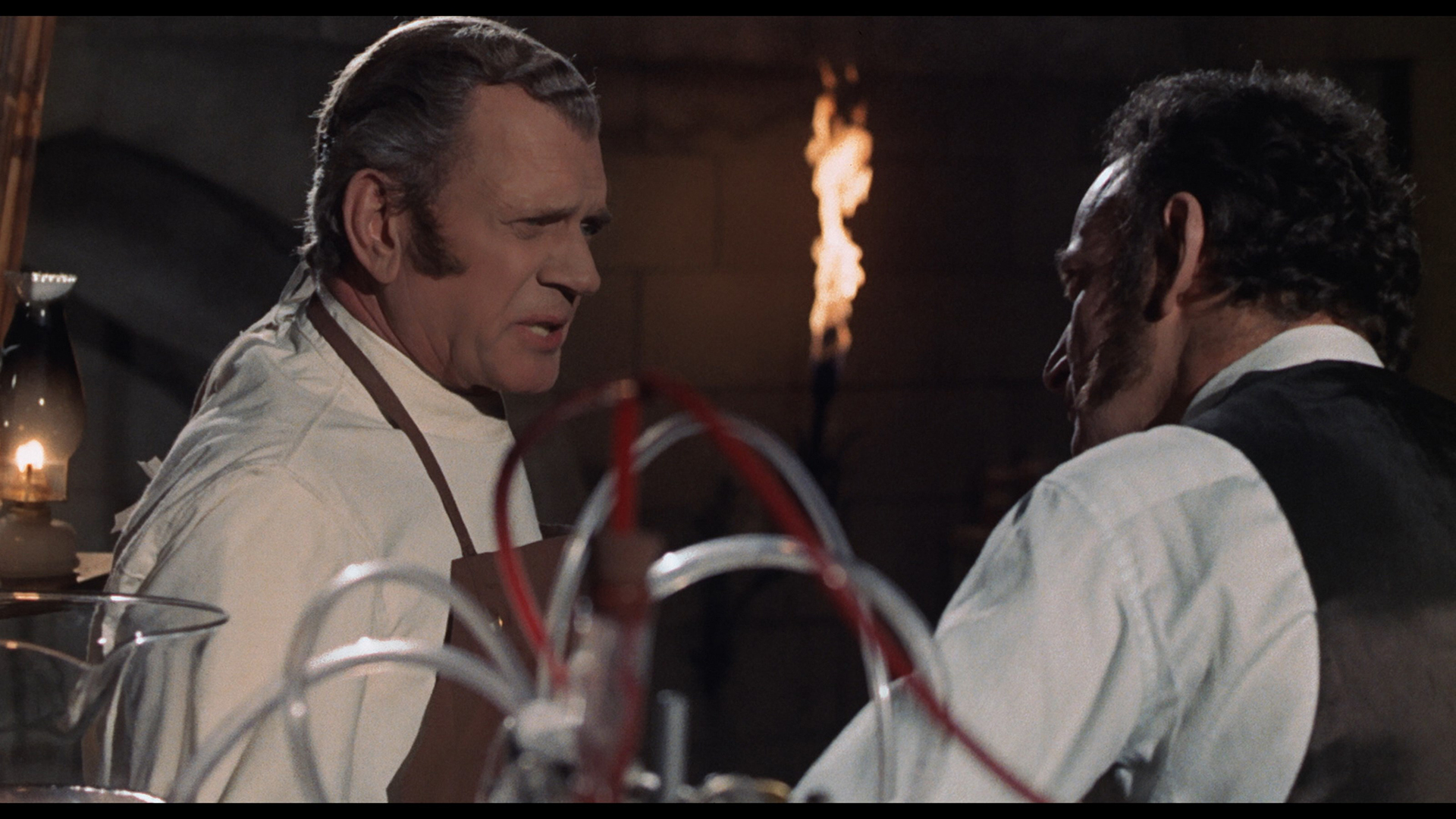 until the 2011 four-film Vampires, Mummies & Monsters DVD set from Shout Factory (along with The Velvet Vampire, Time Walker, and Grotesque), whose American cut
until the 2011 four-film Vampires, Mummies & Monsters DVD set from Shout Factory (along with The Velvet Vampire, Time Walker, and Grotesque), whose American cut 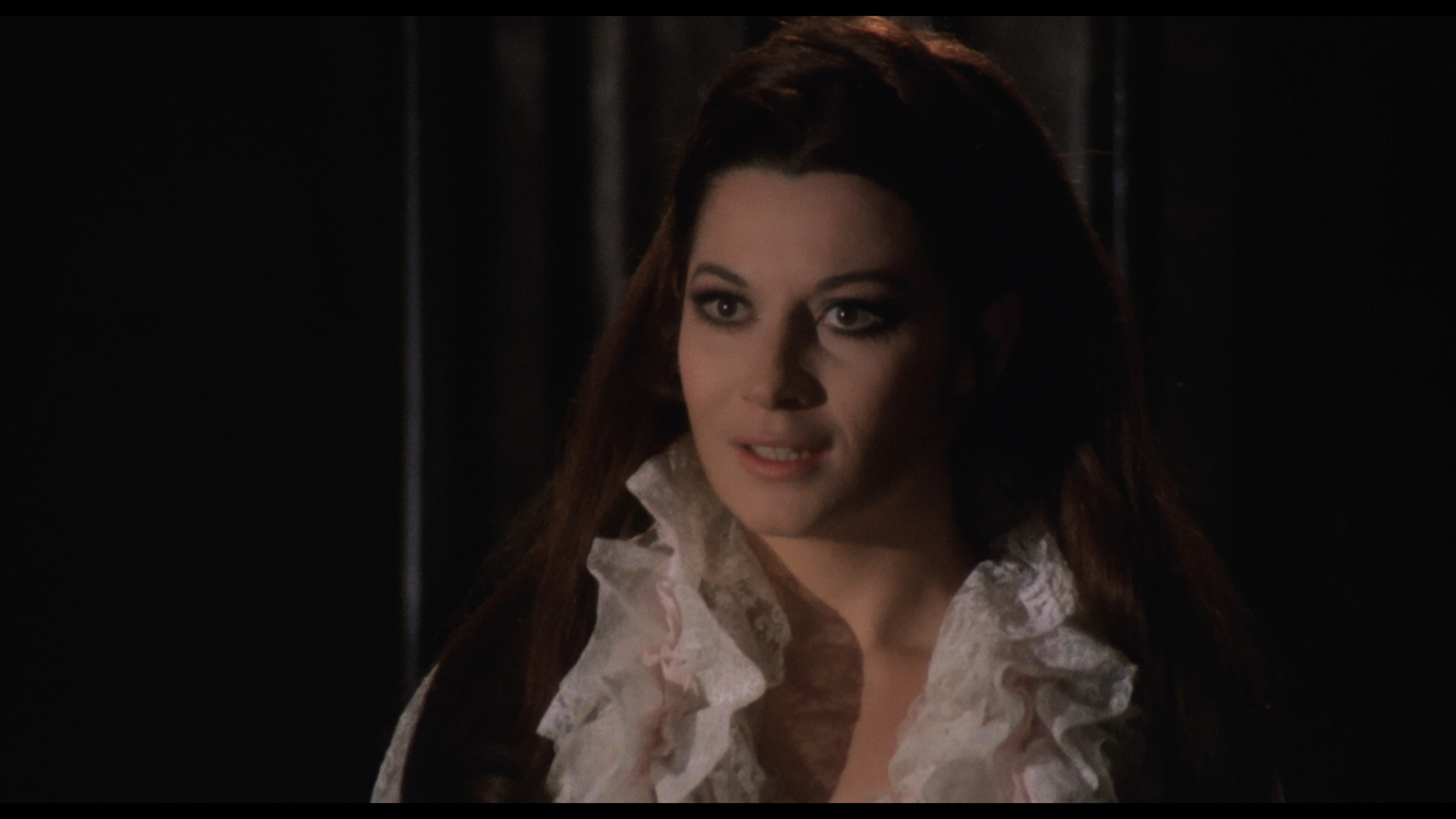 looks much better than before. The rarely seen (at the time) extended European version of the film is included using seamless branching to tie together the longest version to that time. The additional material contains some filler (extra pauses coming in and out of rooms in particular), but some of the added plot and character bits are nice to have and make far more sense out of a crucial decision during the film's climax. Extras include a dupey-looking theatrical trailer, TV spots, and a stills gallery.
looks much better than before. The rarely seen (at the time) extended European version of the film is included using seamless branching to tie together the longest version to that time. The additional material contains some filler (extra pauses coming in and out of rooms in particular), but some of the added plot and character bits are nice to have and make far more sense out of a crucial decision during the film's climax. Extras include a dupey-looking theatrical trailer, TV spots, and a stills gallery.
In 2018, U.K. label Nucleus Films released its own Blu-ray edition of Lady Frankenstein that easily obliterated all predecessors. Offering full-scale restorations of both the uncut and New World versions, it looks terrific with a far more consistently detailed and visually rich presentation that really brings out the full, sumptuous flavor of the art direction. It definitely doesn't look like a grubby drive-in movie anymore. The release was crowdfunded along with Death Laid an Egg in an ambitious effort to bring both films uncut in prime quality to audiences for the first time, and the results are laudable to say the least. (It was initially available as both a standard retail version and a limited slipcase one with five postcard lobby card prints.) The LPCM mono options include the English and Italian tracks (though largely dubbed, the English will probably be the go-to choice for many viewers) with optional, properly translated English subtitles. That crazy score by Alessandro Alessandroni sounds great, too. An audio commentary on the uncut version with the stalwart pairing of Alan Jones and Kim Newman is right up their alley as they have great fun chatting about Frankenstein movie conventions, the mysterious similarity to a story by Bill Warren, the material cut for the U.S., the increase in gore demanded in monster movies at 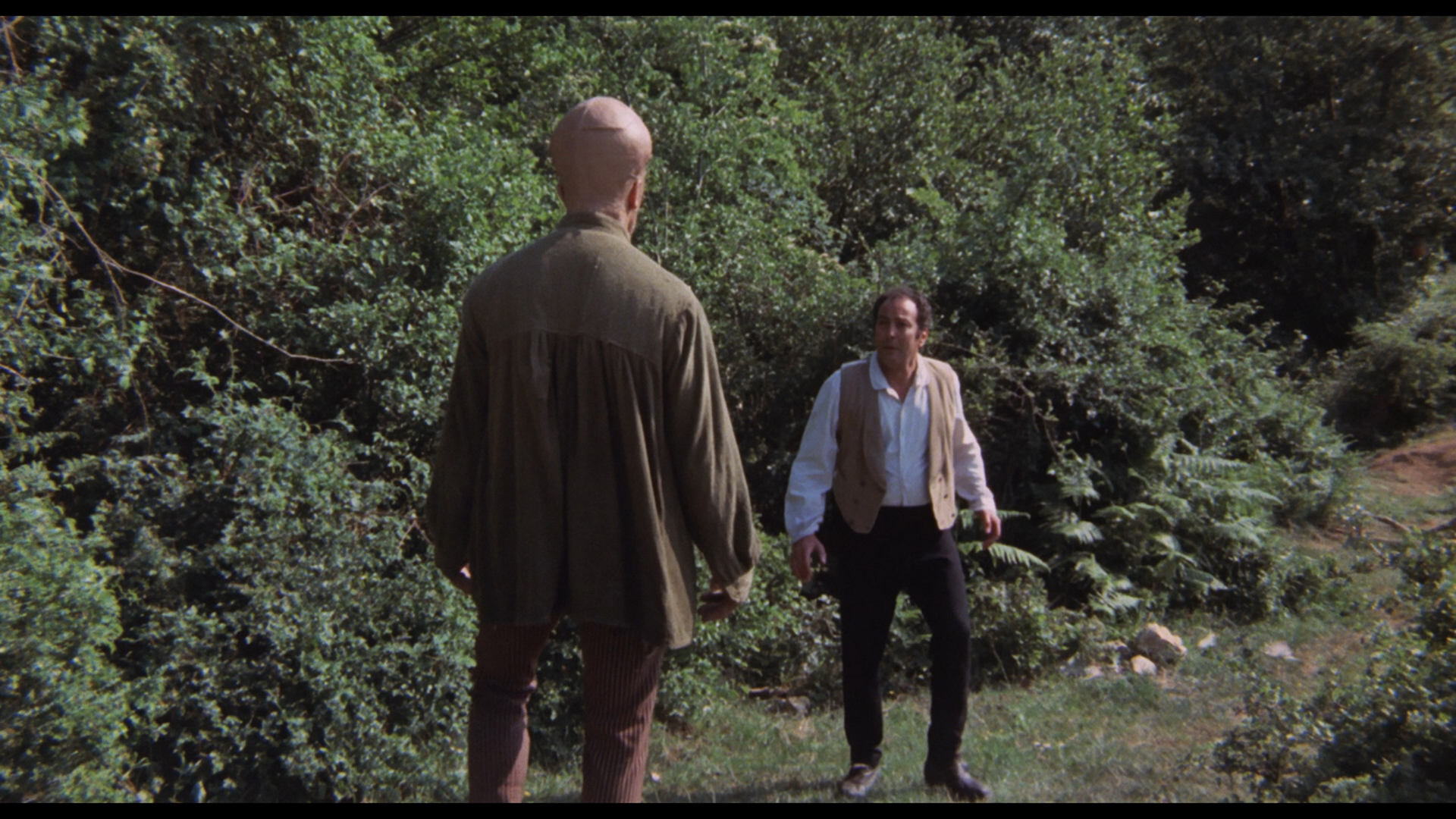 the time (as Hammer demonstrated), the backgrounds of all the key players, and the identities of the dubbing artists, among a flood of other
the time (as Hammer demonstrated), the backgrounds of all the key players, and the identities of the dubbing artists, among a flood of other 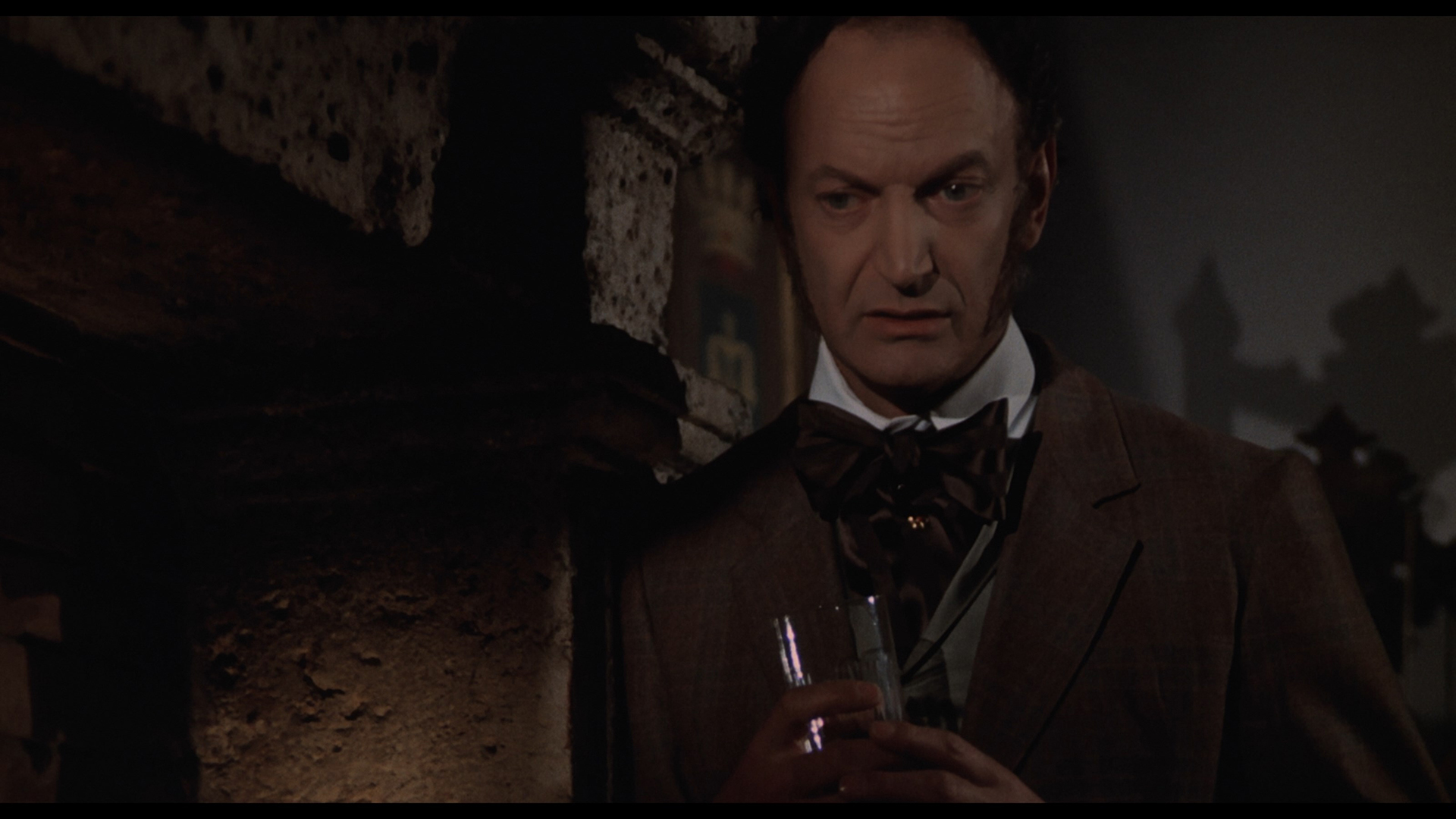 topics.
topics.
A retrospective 2007 German TV special, "The Truth About Lady Frankenstein" (43m58s), is structured around an interview with Welles explaining his love of monster movies, with contributions from Neri and actor Herbert Fux sprinkled throughout for a look at how the film came about and reflected such themes as feminism and capital punishment, with a discussion of how the credits were heavily anglicized to disguise its origins (with Neri becoming "Sarah Bay"). The new "Piecing Together Lady Frankenstein" (35m18s) features author Julian Grainger taking a fascinating in-depth look at the financial genesis of the film (it's crazy) and excerpts from different, multiple Welles interviews giving another angle on aspects like the casting of Cotten and having to bail out a German fraud arrest during the ramp up to the aborted Hotheads project in Europe. In "The Lady and The Orgy" (8m8s), you get a deeper look at one of the crazier corners of Welles' career courtesy of his temporary relocation to Australia in the early '70s, where his attempt to modernize the spook-show approach Down Under with a Grand Guignol spin, "Orgy of Evil," with some fairly heavy hitters involved in getting it off the ground with Lady Frankenstein integrated as part of the experience. Other goodies include an extensive international gallery (5m39s) of international (and frequently gorgeous) promotional material, a home video art gallery, a Bigfilm Magazine Italian photo novel (2m39s), a recap of the scenes that ran afoul 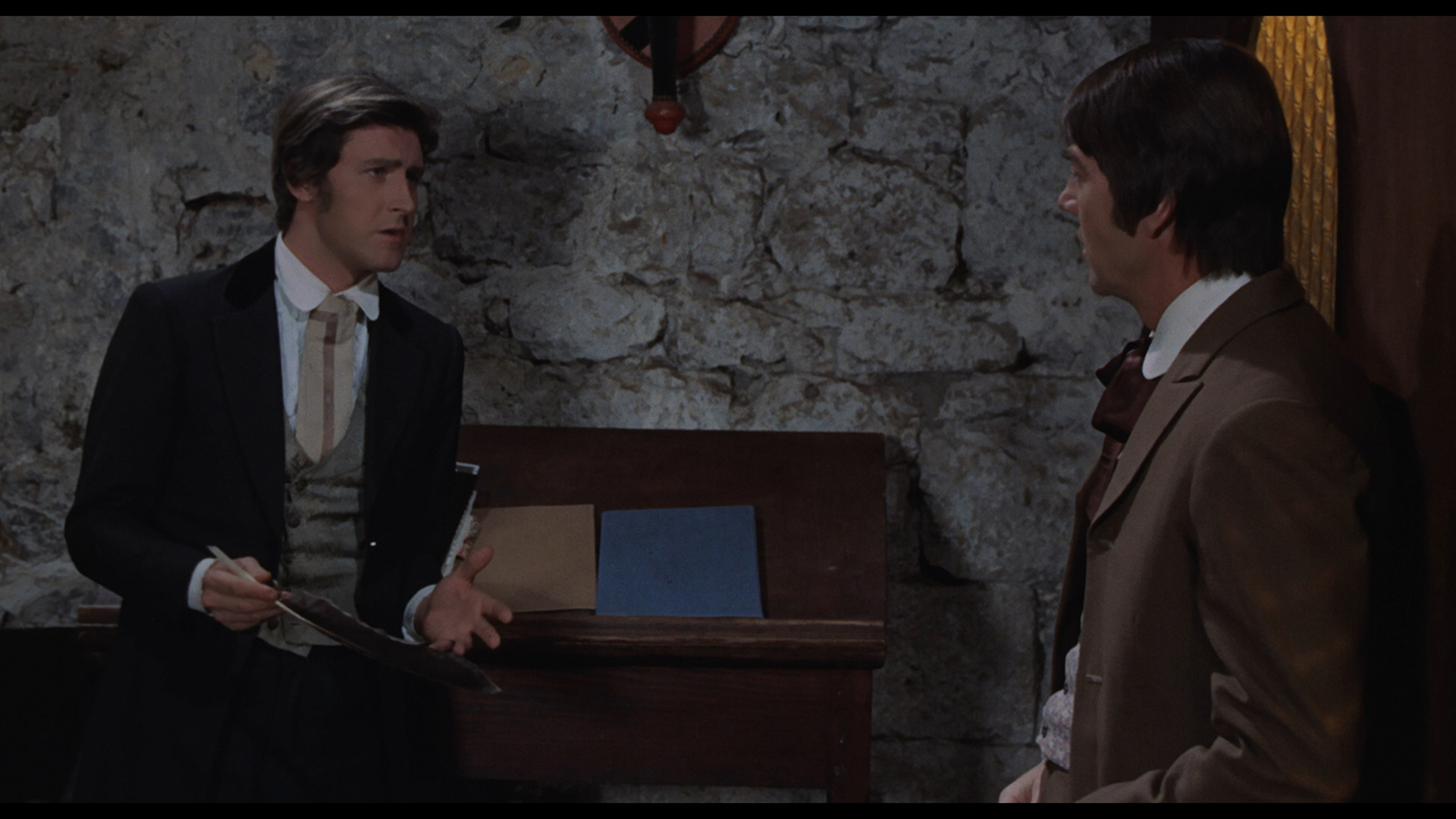 of the BBFC (2m52s), some alternate clothed scenes (2m55s), New World TV and radio spots, the U.S. trailer,
of the BBFC (2m52s), some alternate clothed scenes (2m55s), New World TV and radio spots, the U.S. trailer, 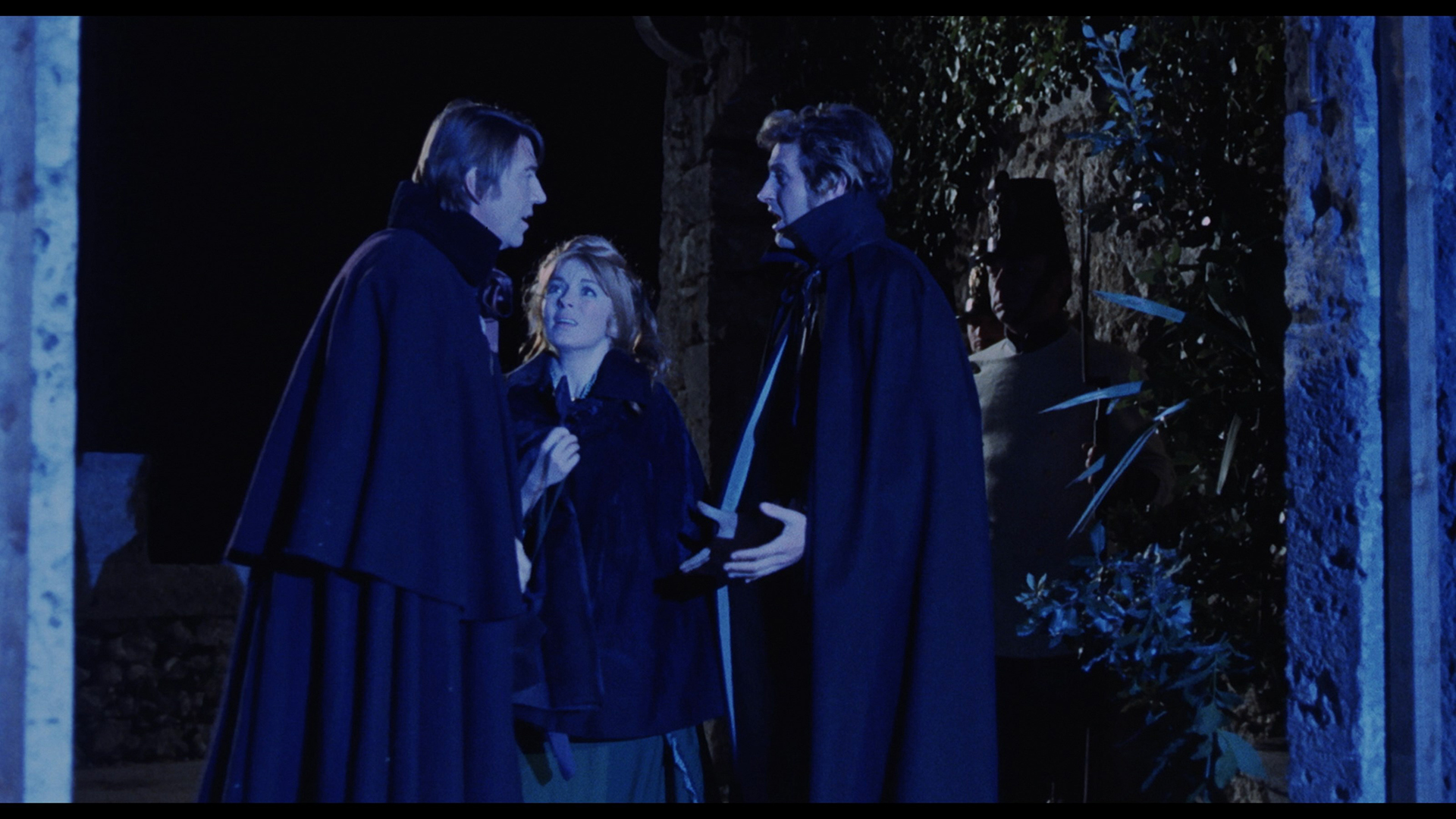 and European trailers in their English, Italian and German variants. A subsequent French release from Le Chat Qui Fume featured the full-length version (English, French, or Italian with French subs), the alternate clothed scenes, and the "Truth" featurette; that release is primarily notable for also including a bonus CD (in the first 1,000 units) with the sole complete release anywhere of the Alessandroni score.
and European trailers in their English, Italian and German variants. A subsequent French release from Le Chat Qui Fume featured the full-length version (English, French, or Italian with French subs), the alternate clothed scenes, and the "Truth" featurette; that release is primarily notable for also including a bonus CD (in the first 1,000 units) with the sole complete release anywhere of the Alessandroni score.
The Severin disc comes from the same scan and looks very similar for the most part, though there are some variations in color timing (see below) with the outdoor night scenes, especially the opening, having a cooler, less orange push. Both the English and Italian tracks are included in DTS-HD MA 2.0 mono and still sound very nice, with optional English subtitles provided. The commentary and all of the video extras are ported over from the Nucleus disc -- "Truth" and "Piecing" featurettes, "The Lady and the Orgy," clothed inserts, BBFC rundown, image galleries, photo novel, trailers, and TV and radio spots, plus some nice new bonuses here as well. Ellinger returns for a new commentary with podcaster Annie Rose Malamet which focuses on the larger canvas of Gothic traditions in fiction and Italian cinema, female-centric horror including the concurrent lesbian vampire wave, comparisons to Hammer's Frankenstein cycle, the advent of cocaine cinema in Europe, and the heyday of Neri's output. "Meet the Baroness" (21m48s) features Neri looking back at her distant memories of this film among her horror output and her positive time spent with Mel Welles, with film historian Fabio Melelli providing some extra info and context about Welles, the skillful technique of Neri's performance, and pertinent members of the Italian crew who were largely responsible for the film's impressive appearance. Also included is the Italian main title sequence in equally excellent condition.
THE MONSTER OF THE OPERA: Severin Films (Blu-ray)
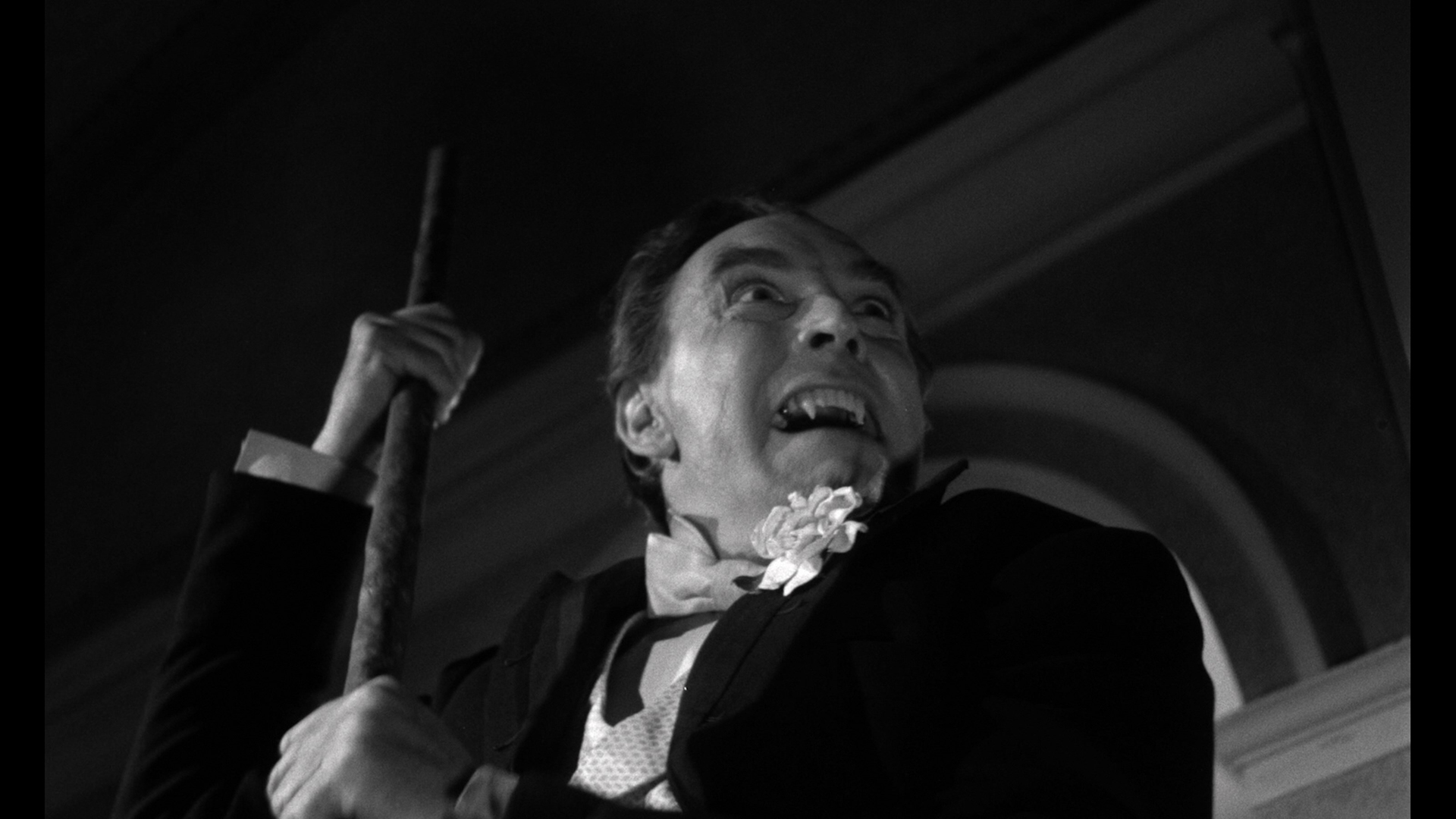
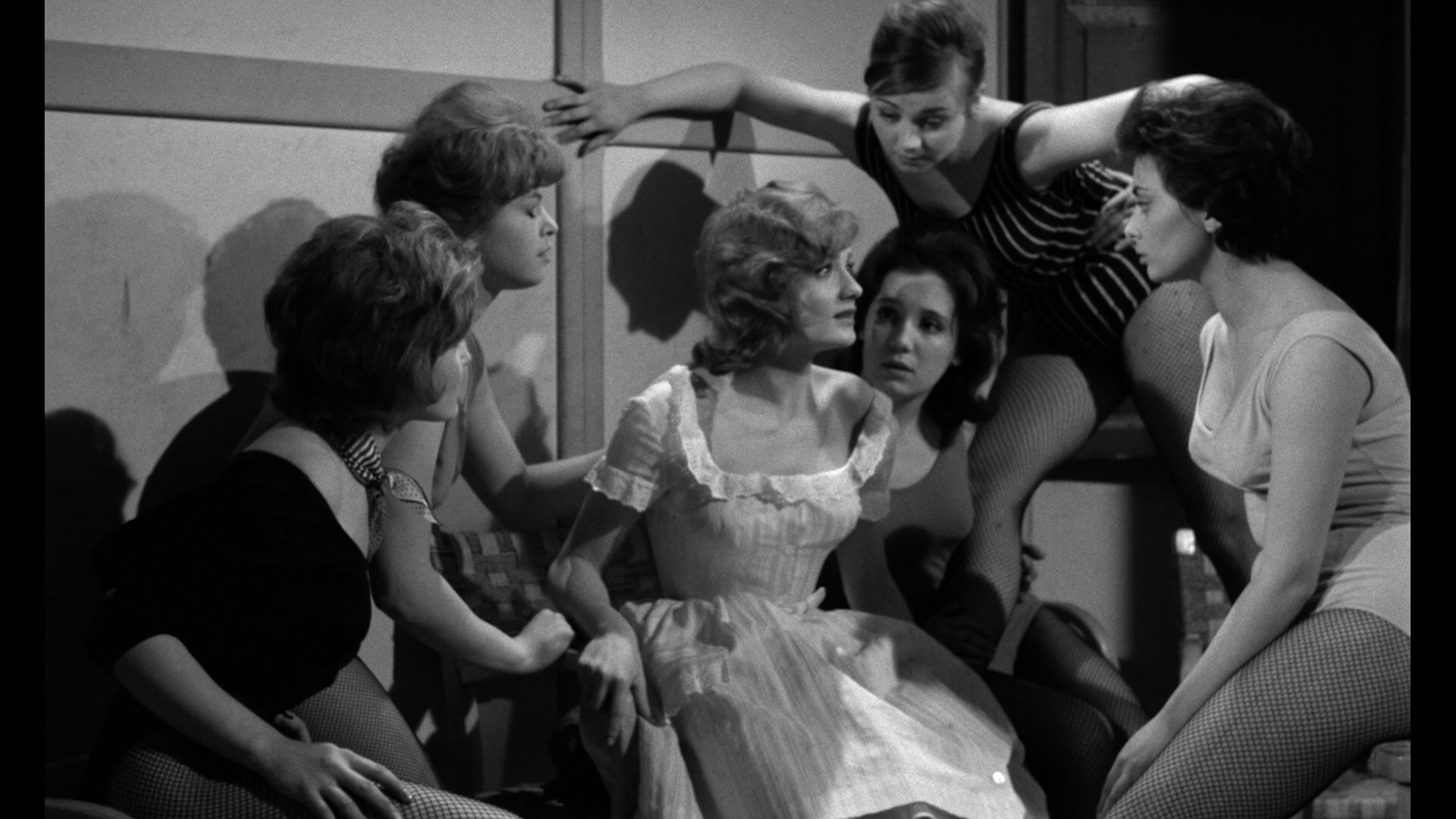
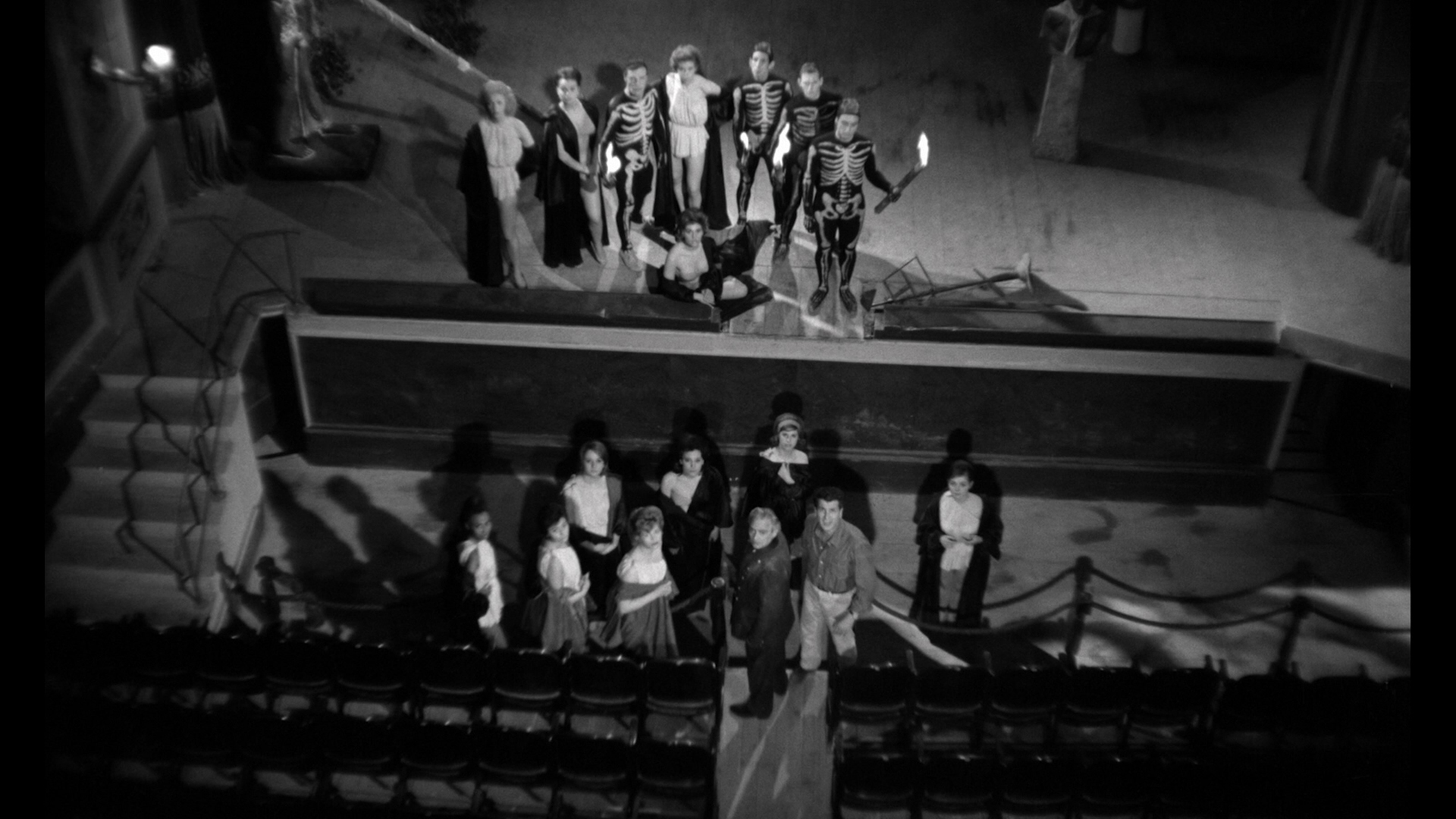

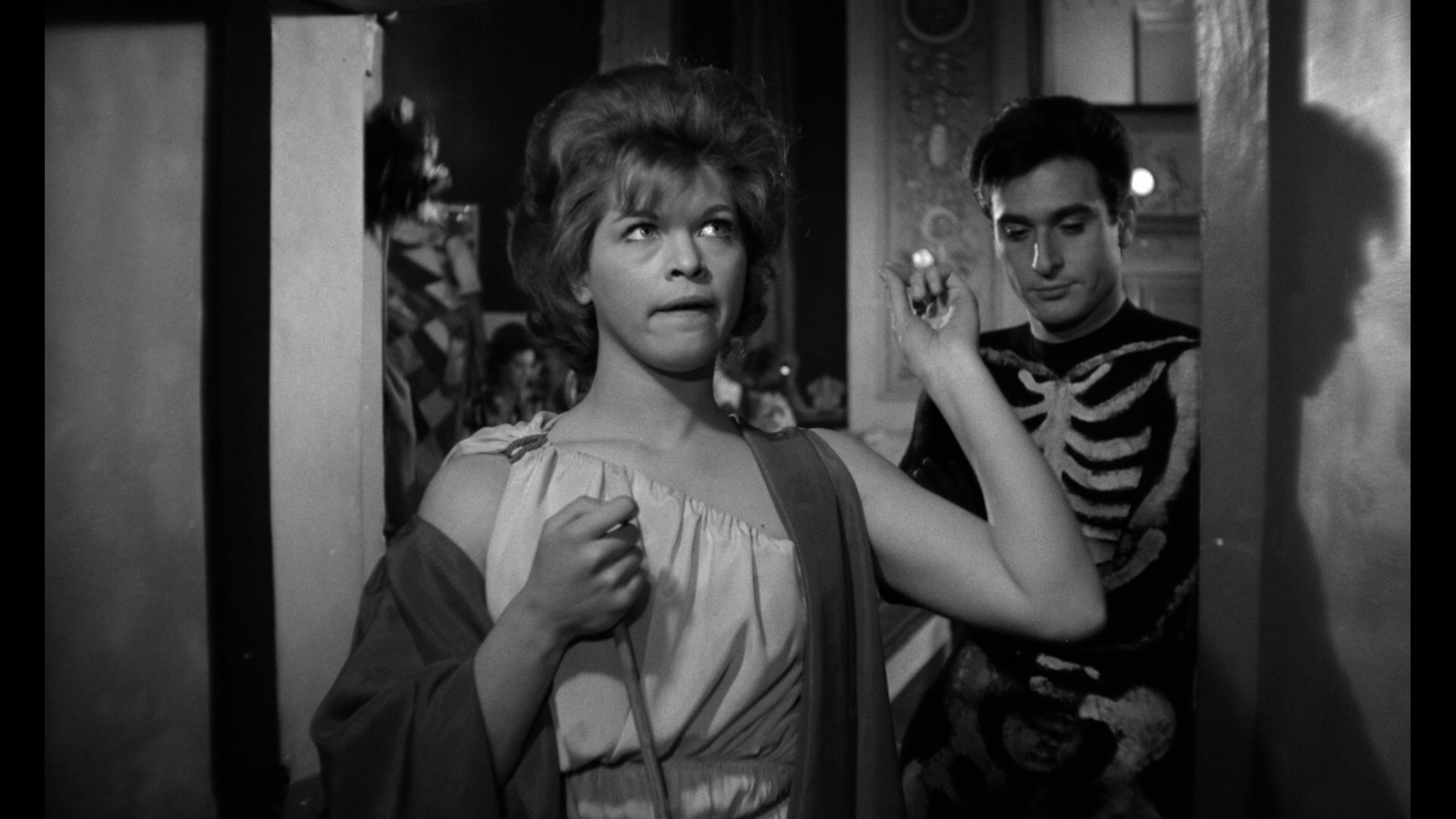
THE MONSTER OF THE OPERA: Artus (DVD)
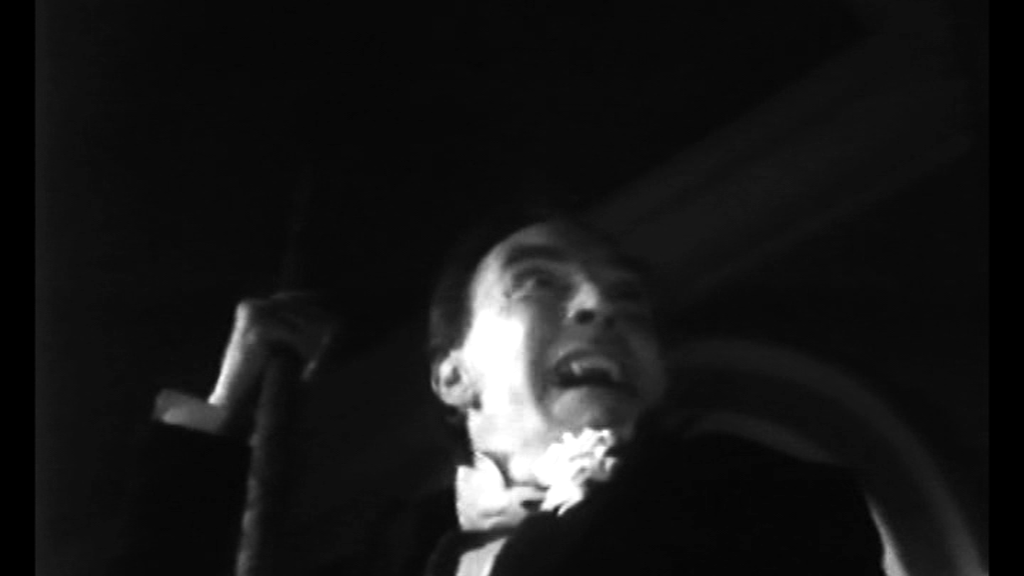
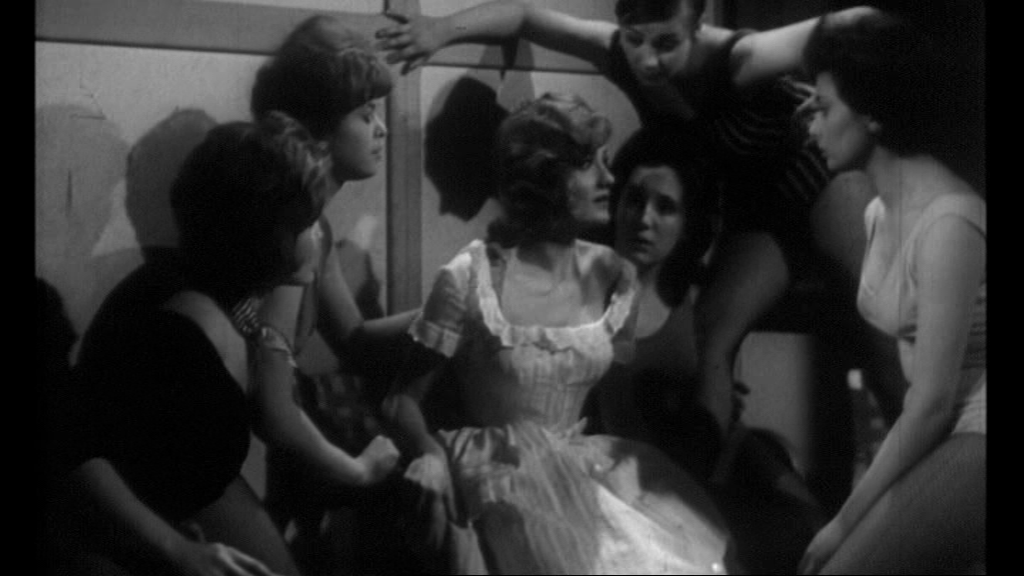
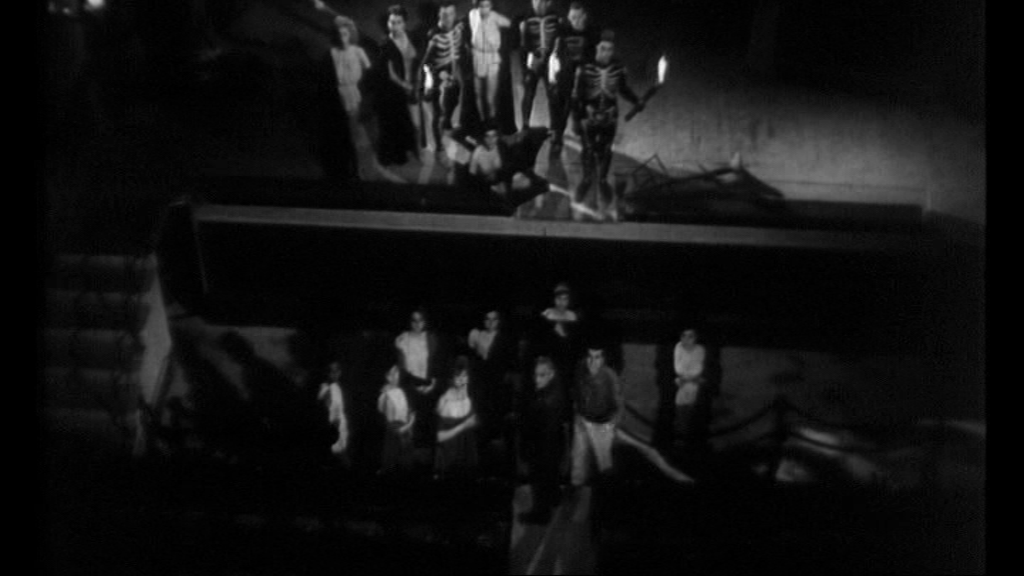
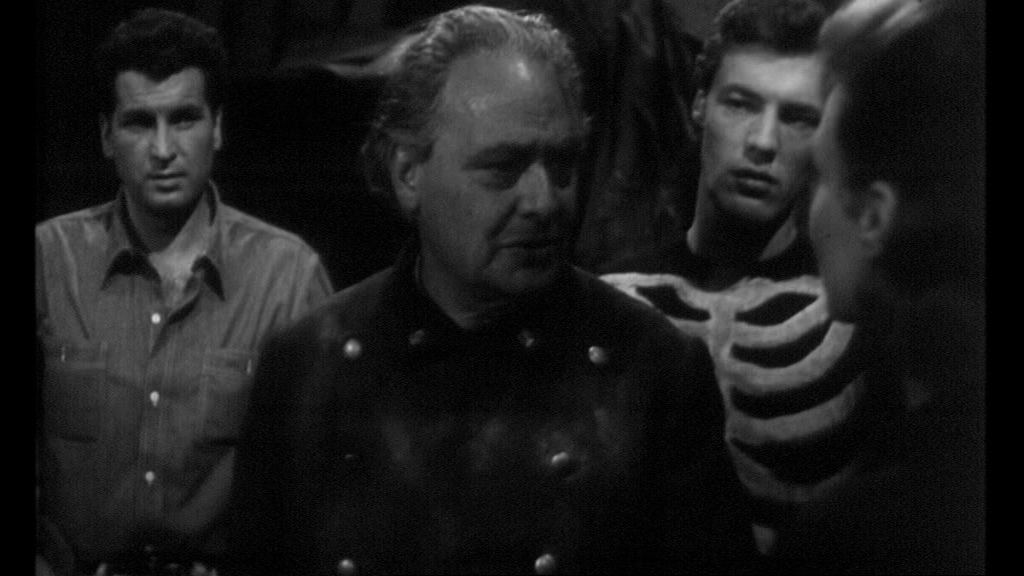
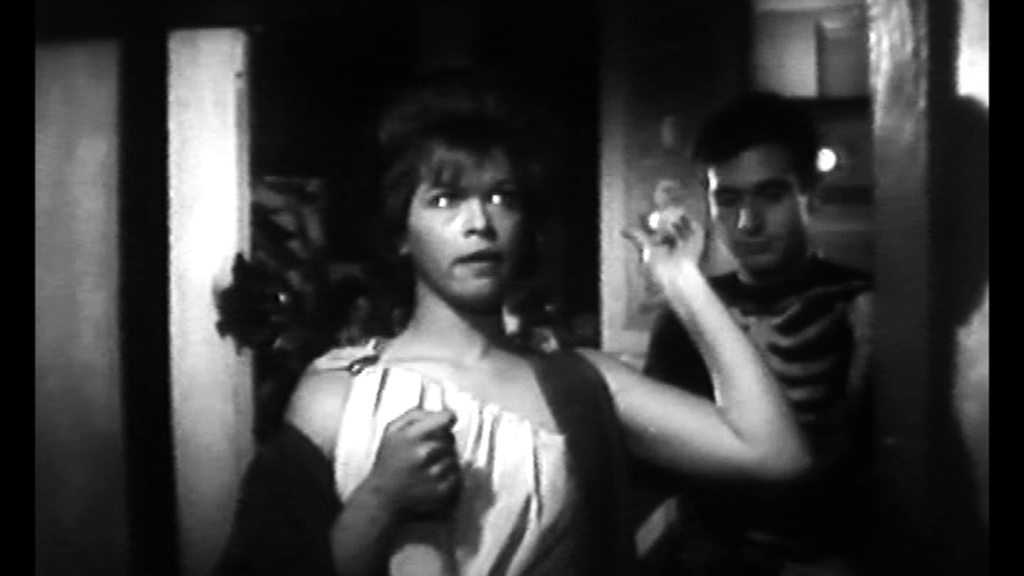
SCREAM OF THE DEMON LOVER: Severin Films (Blu-ray)
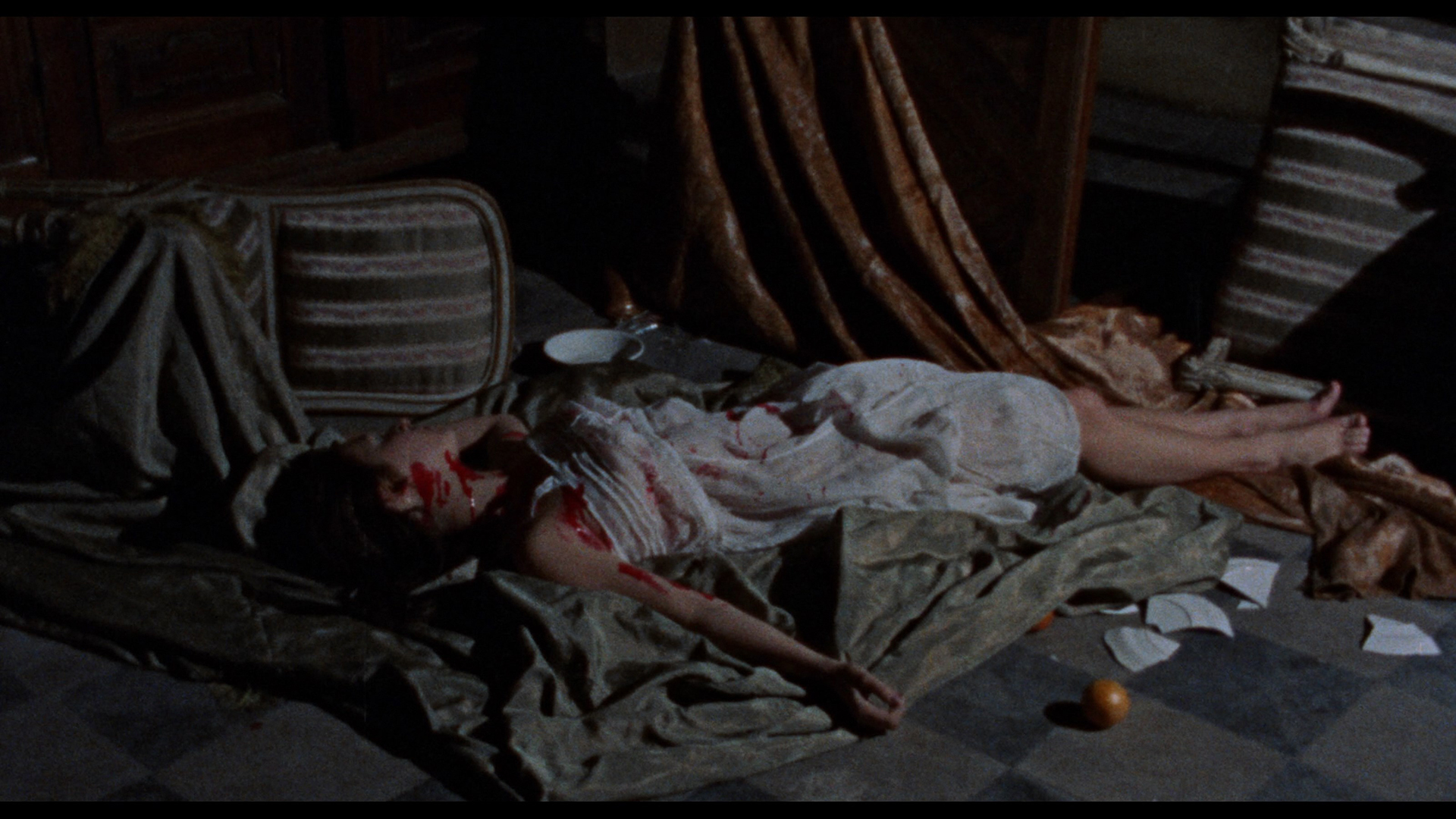
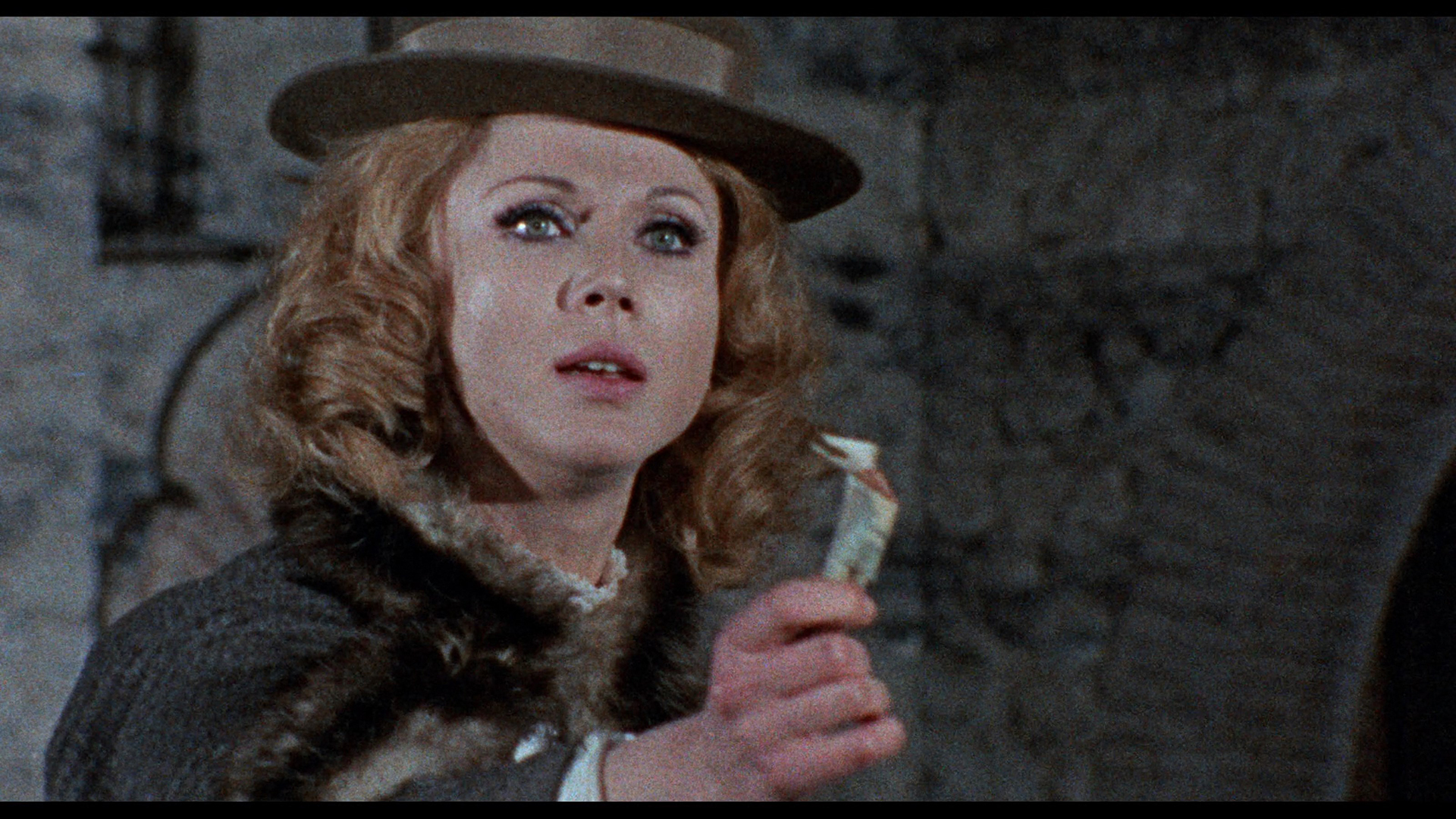
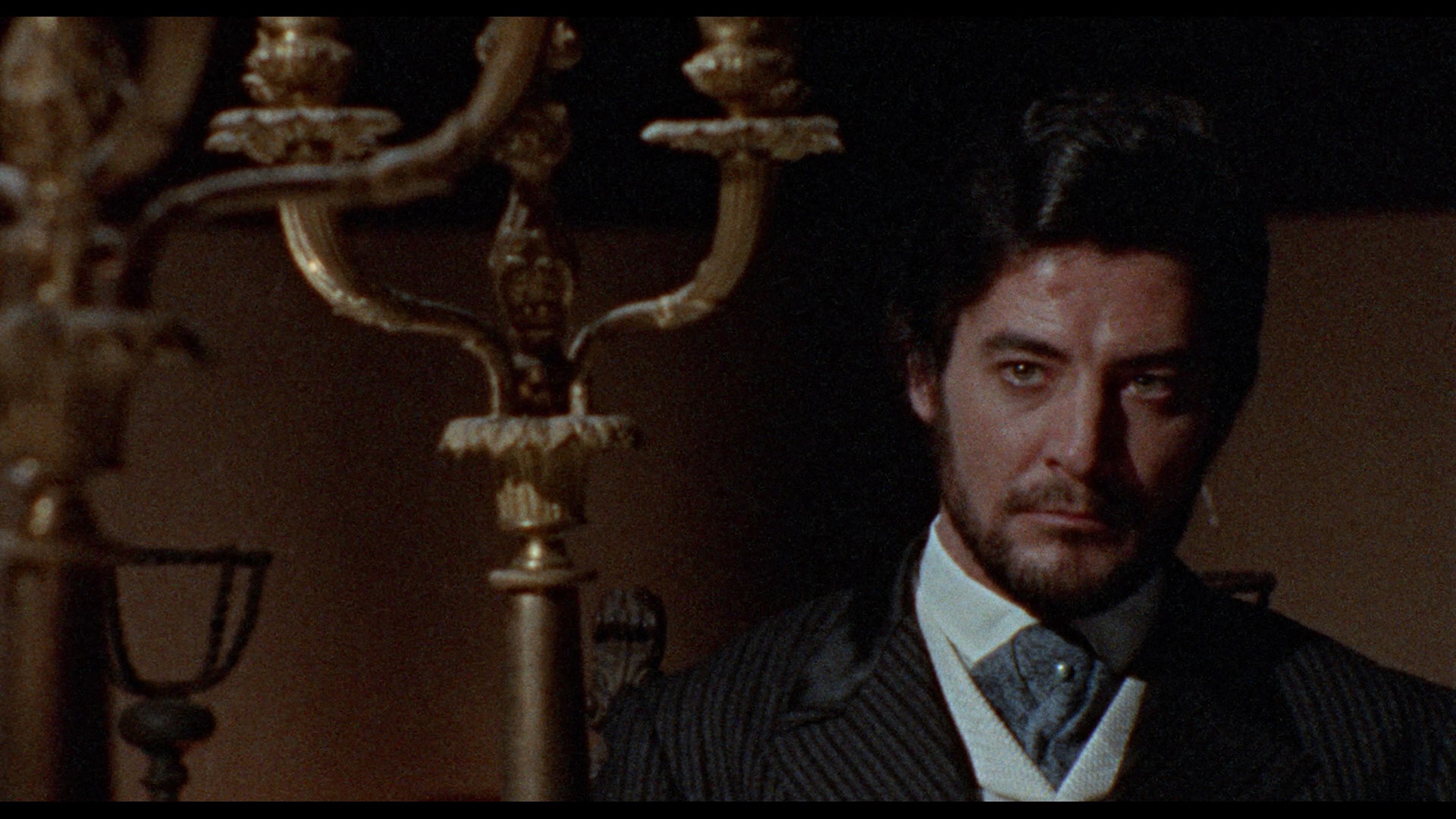
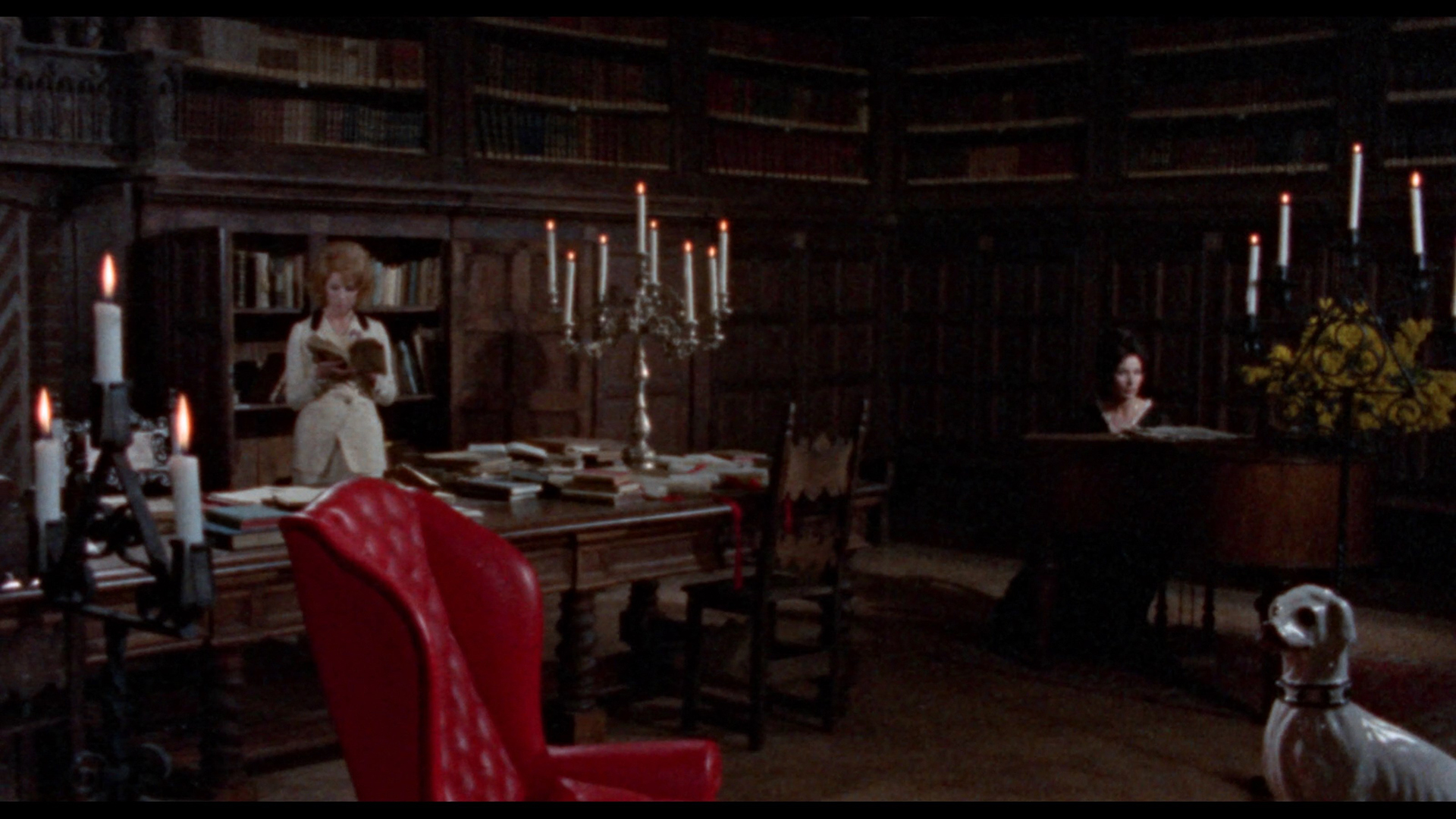
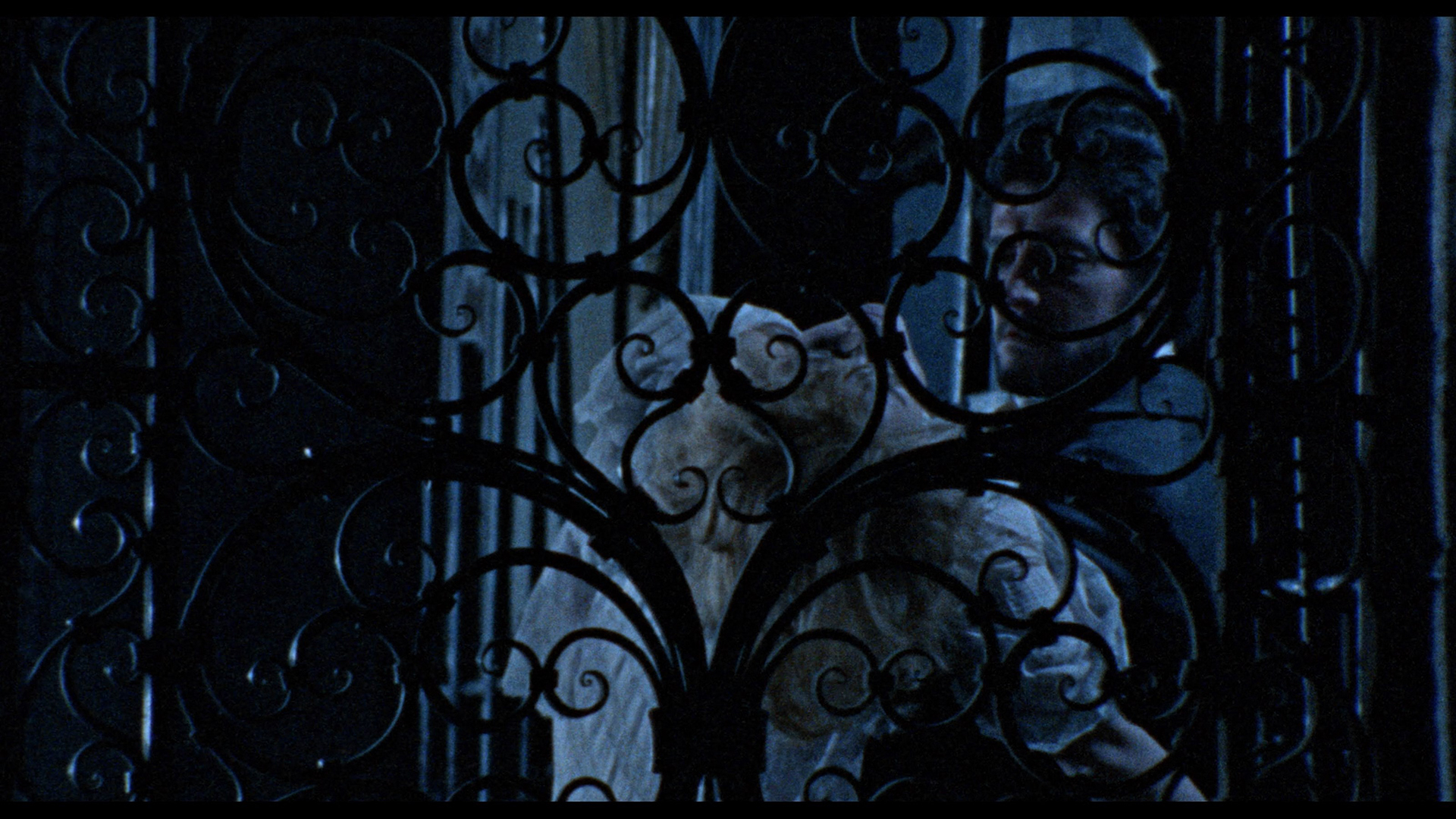
SCREAM OF THE DEMON LOVER: Retromedia (DVD)
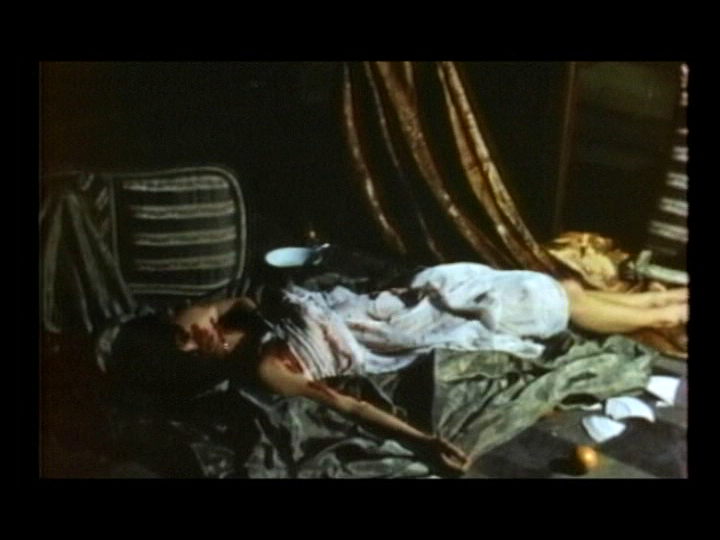
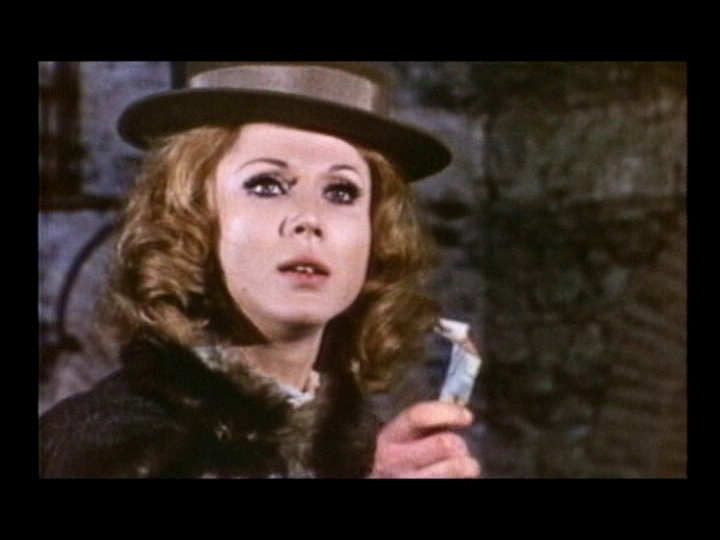
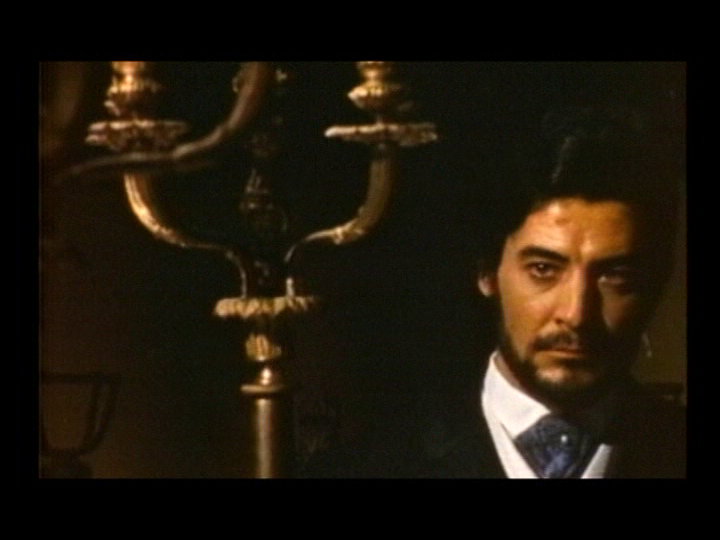
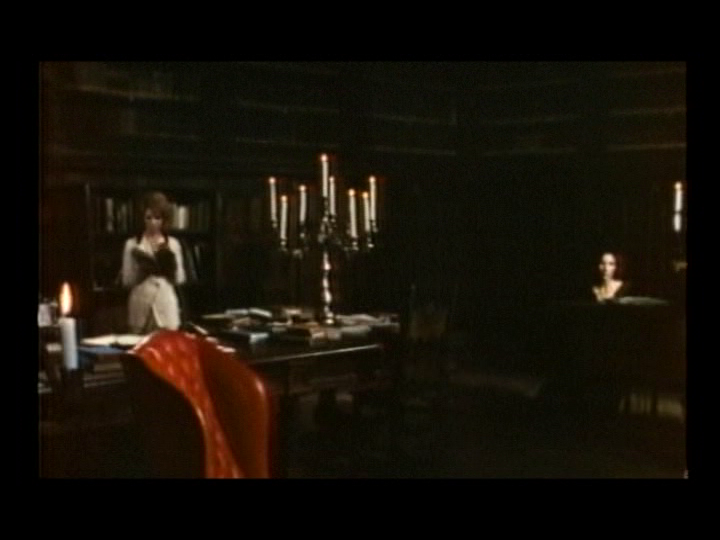
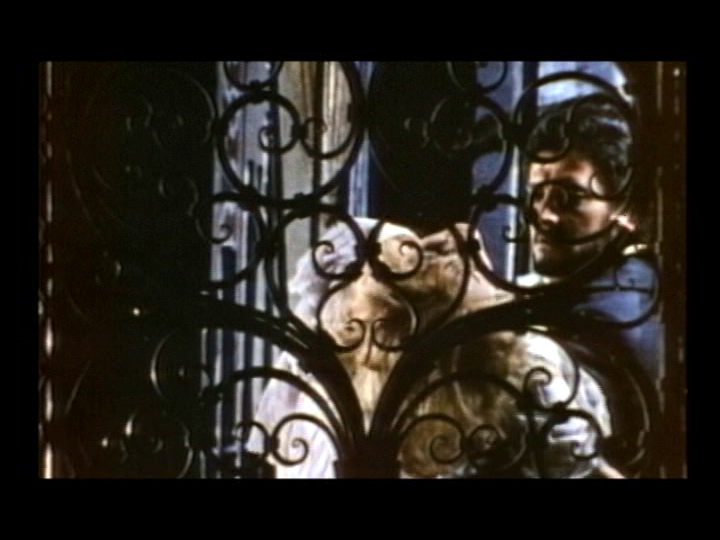
LADY FRANKENSTEIN: Severin Films (Blu-ray)
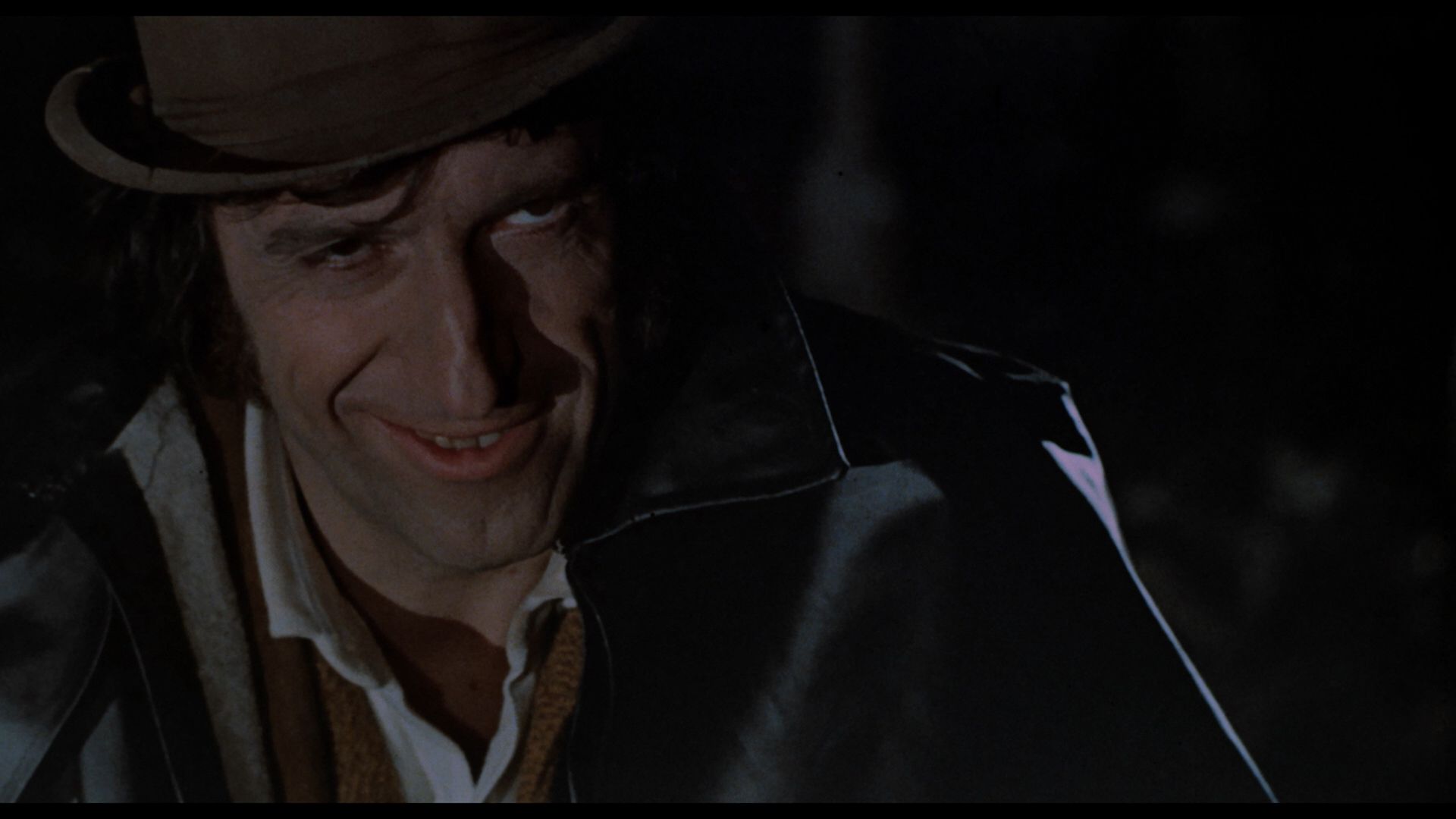
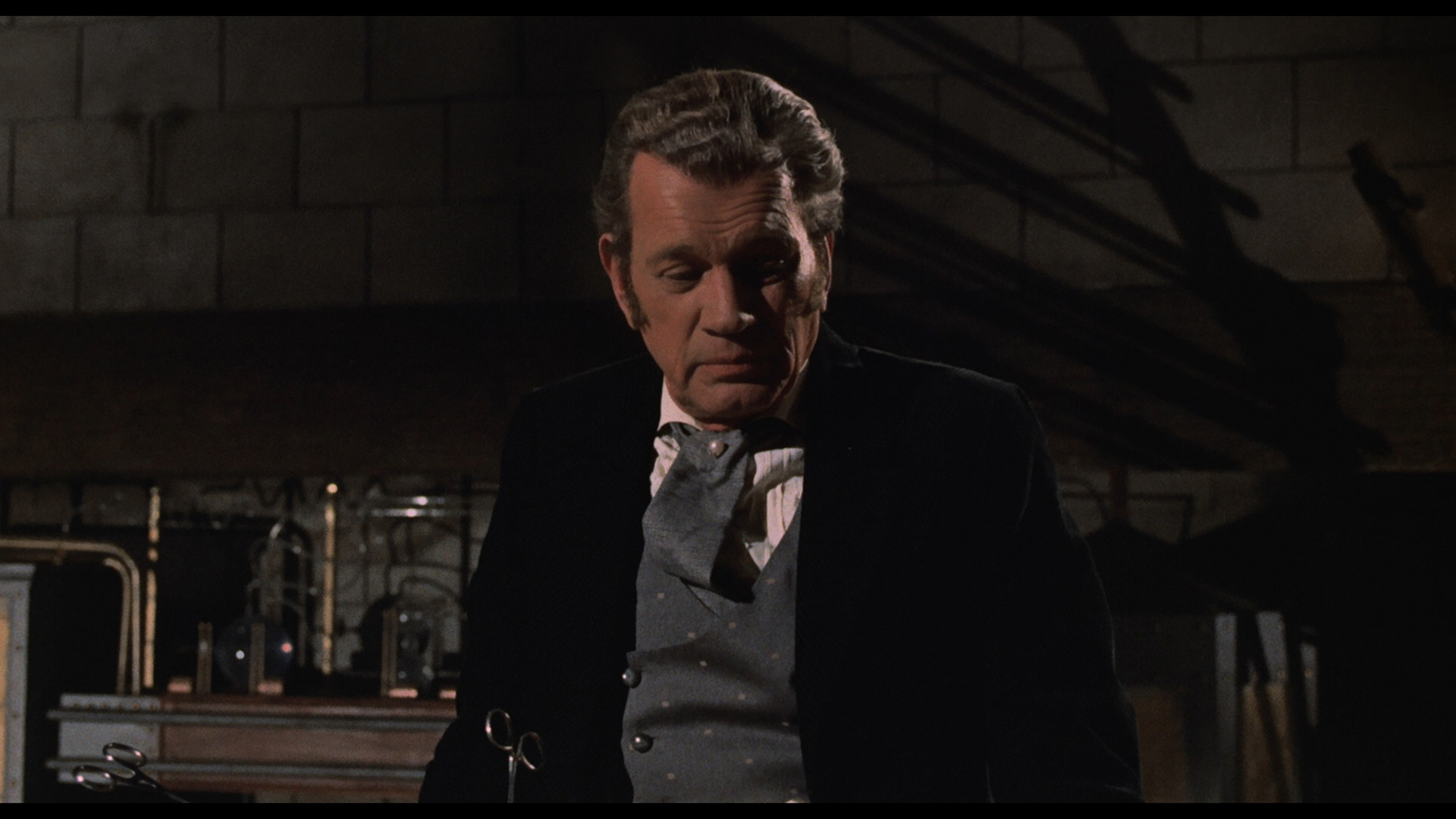
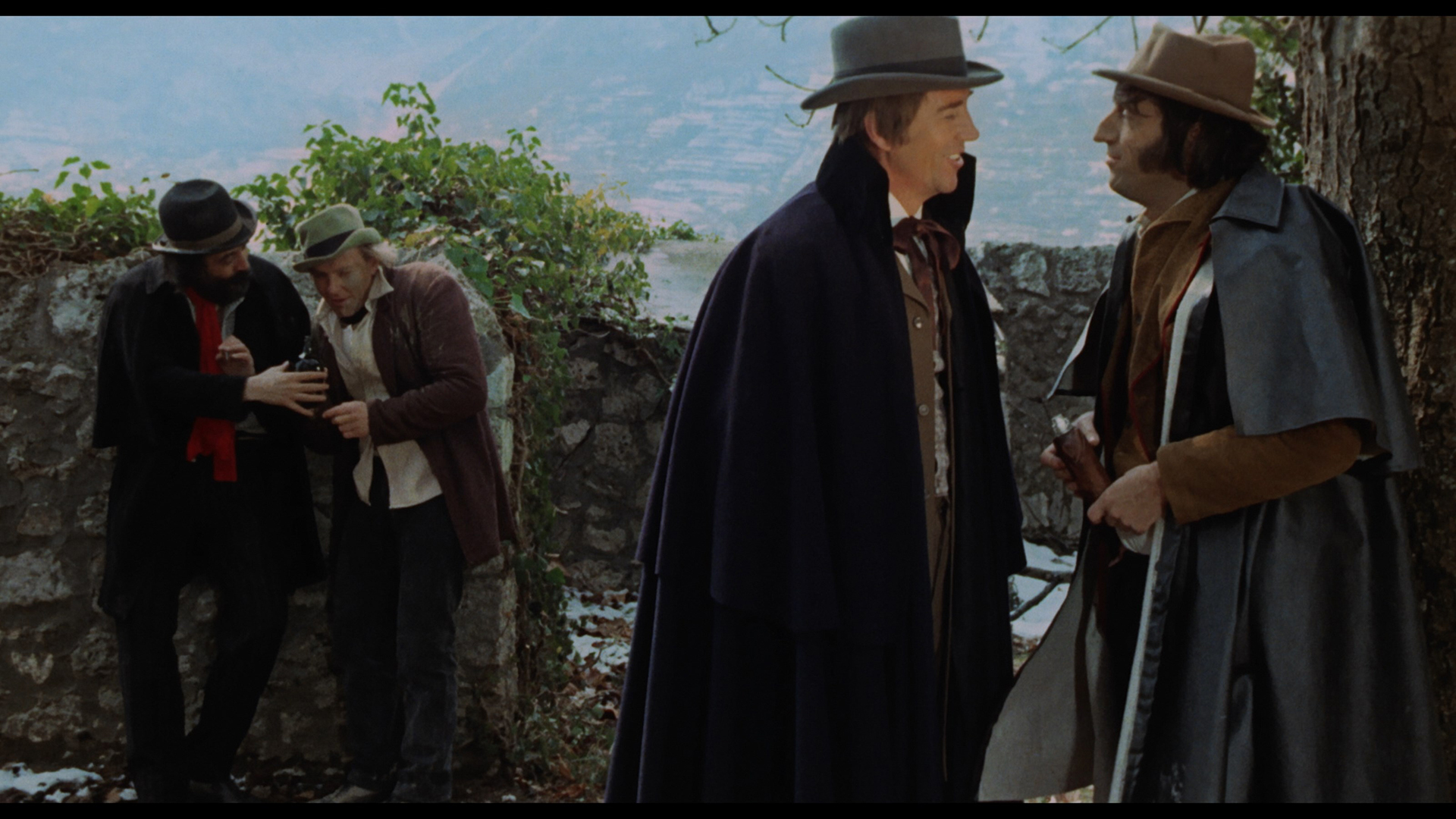
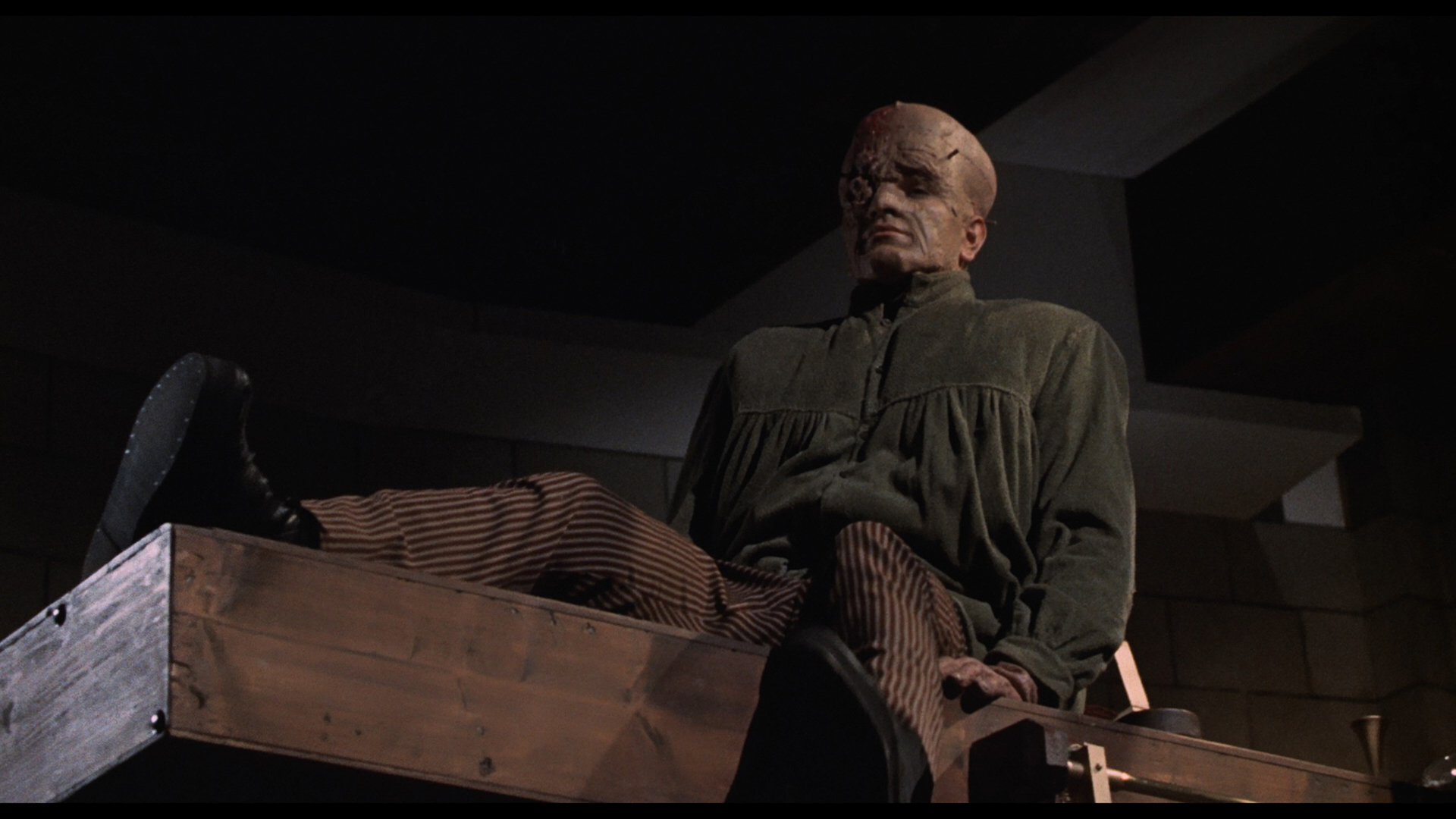

LADY FRANKENSTEIN: Nucleus Films (Blu-ray)
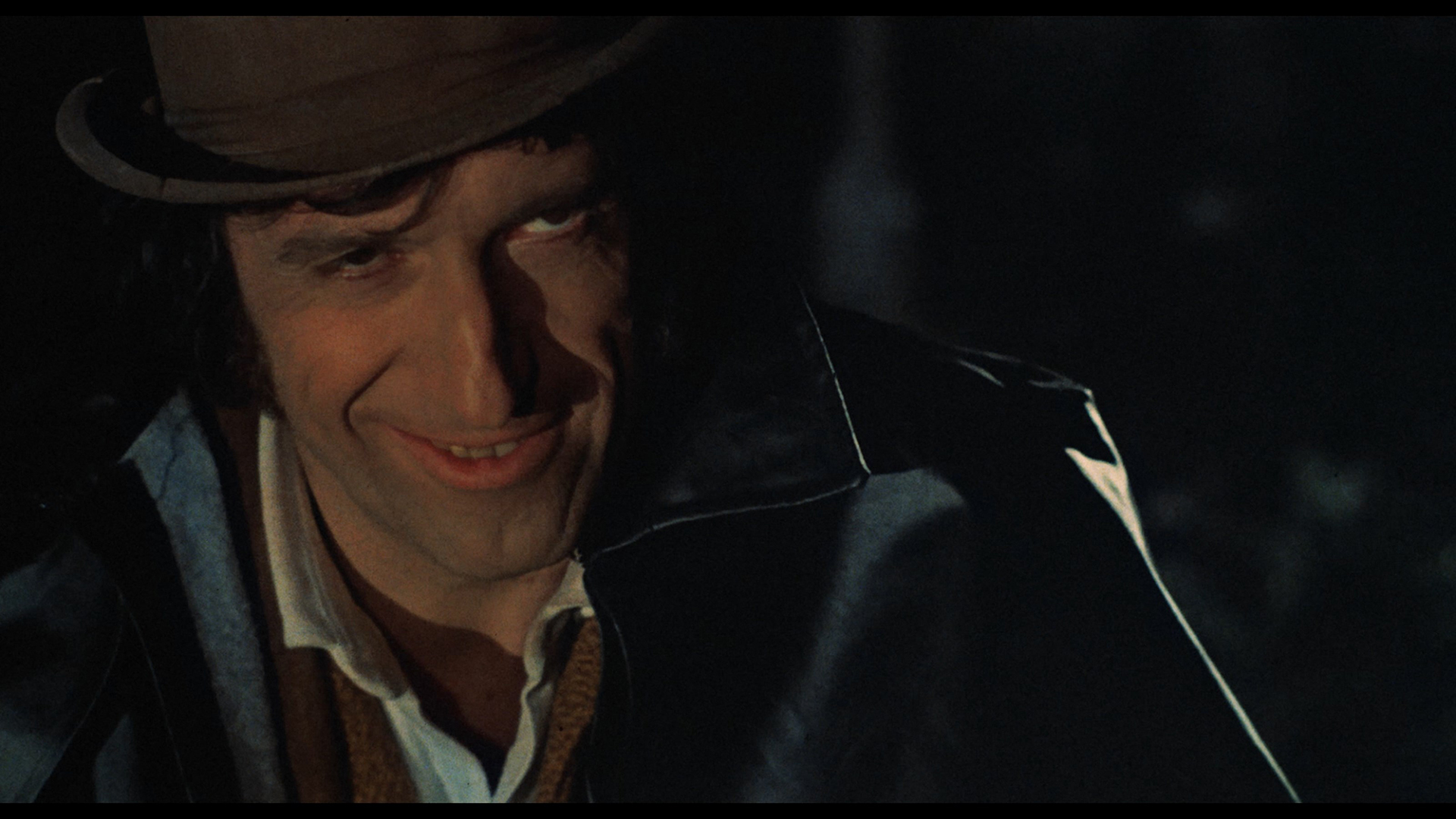
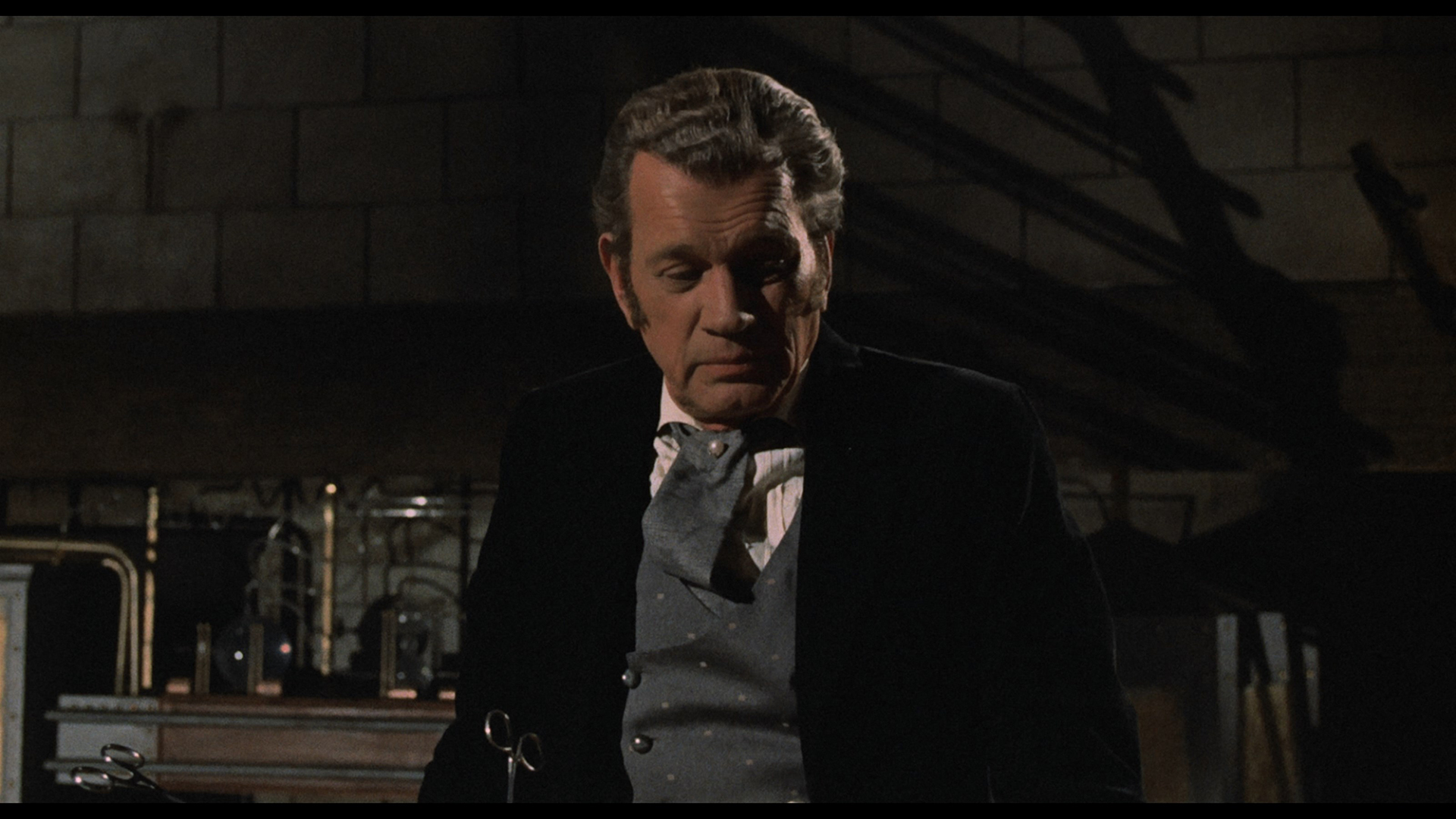
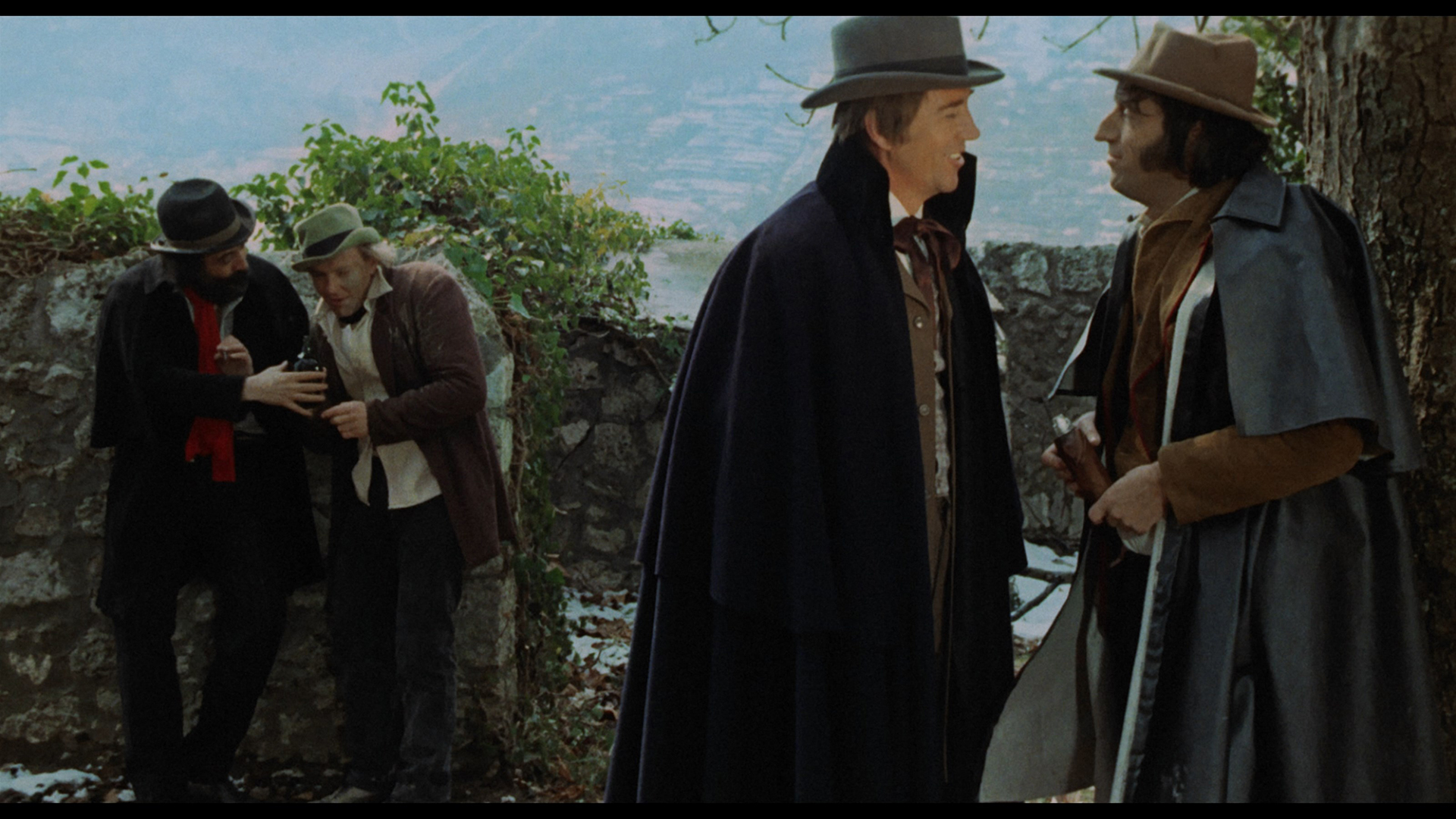
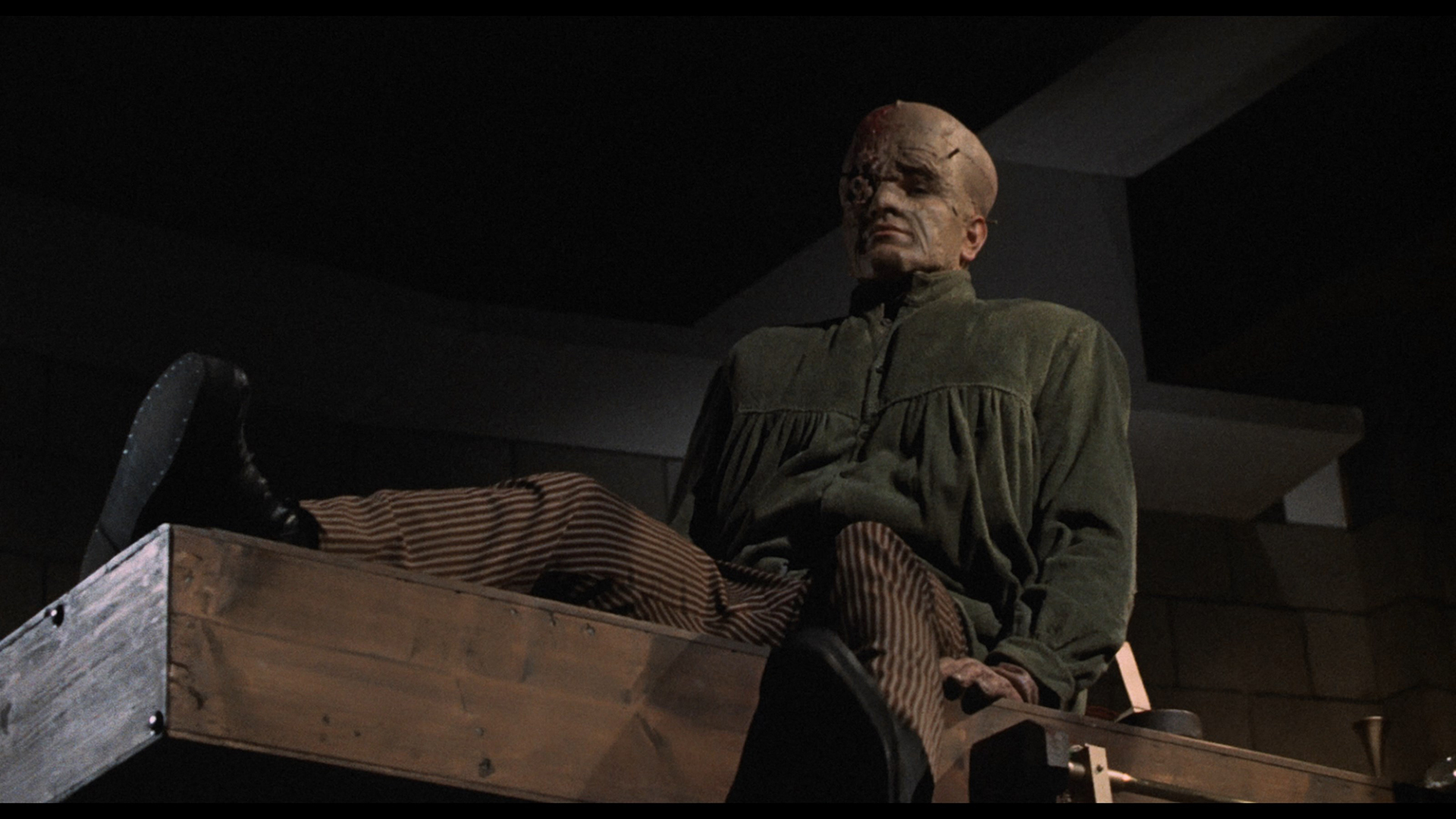
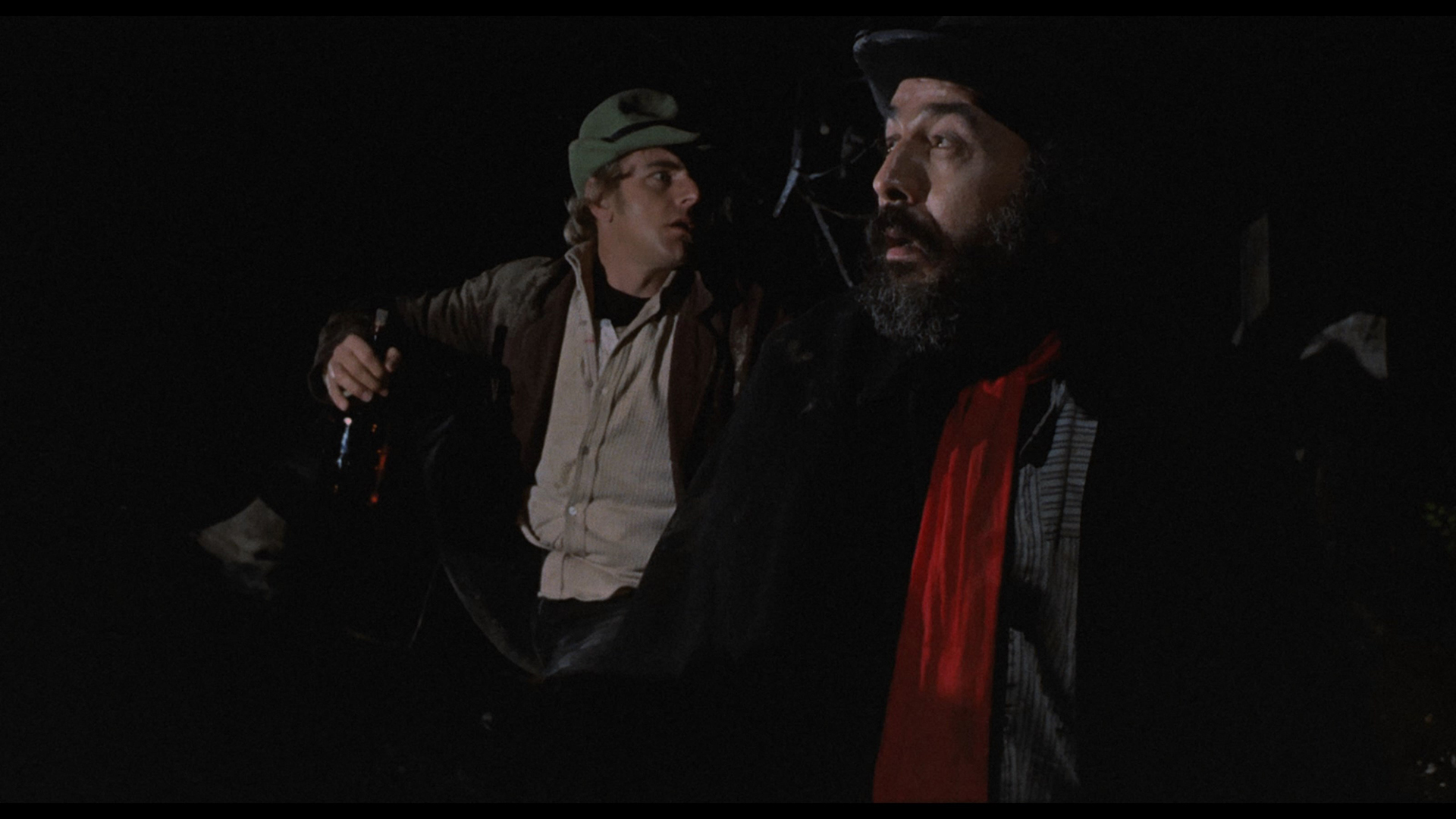
Reviewed on April 14, 2023.





 restorations shows no signs of waning with the Gothic chillers of the '60s and '70s receiving as much love in the Blu-ray era
restorations shows no signs of waning with the Gothic chillers of the '60s and '70s receiving as much love in the Blu-ray era  as the giallo or Euro western, to name but two examples. A four-disc Severin Films set released in 2023, Danza Macabra Volume One: The Italian Gothic Collection, is a follow-up in all but name to the prior year's Gothic Fantastico: Four Italian Tales of Terror from Arrow Video, with both sets produced by Diabolique's Kat Ellinger. Again this presents a quartet of atmospheric Italian genre films with a Gothic sensibility, half of which were given U.S. theatrical and home video releases in various forms while the other two have been completely ignored until now. You won't find the actual film Danza Macabra here (fingers crossed for volume two!), but all the ones you do get provide a solid fix of castles, screams, and baroque storylines from a bygone era.
as the giallo or Euro western, to name but two examples. A four-disc Severin Films set released in 2023, Danza Macabra Volume One: The Italian Gothic Collection, is a follow-up in all but name to the prior year's Gothic Fantastico: Four Italian Tales of Terror from Arrow Video, with both sets produced by Diabolique's Kat Ellinger. Again this presents a quartet of atmospheric Italian genre films with a Gothic sensibility, half of which were given U.S. theatrical and home video releases in various forms while the other two have been completely ignored until now. You won't find the actual film Danza Macabra here (fingers crossed for volume two!), but all the ones you do get provide a solid fix of castles, screams, and baroque storylines from a bygone era.  young, ambitious theater producer Sandro (Tomb of Torture's Mariani) for a frenzied new production involving dancing
young, ambitious theater producer Sandro (Tomb of Torture's Mariani) for a frenzied new production involving dancing  skeletons, torches, robes, and other macabre trappings. Among the dancers are plenty of pranksters and lesbians, not to mention leading lady Giulia (Hawards), who's having strange nightmares. On top of that, the old caretaker is alarmed by Giulia's presence and warns them all that the theater hasn't been used for years for a very good reason... and they'd better clear out if they value their lives. As it turns out, the building is the territory of a tux-wearing vampire named Stefano (Giuseppe Addobatti), who has a savage streak when he's awakened by the intruders.
skeletons, torches, robes, and other macabre trappings. Among the dancers are plenty of pranksters and lesbians, not to mention leading lady Giulia (Hawards), who's having strange nightmares. On top of that, the old caretaker is alarmed by Giulia's presence and warns them all that the theater hasn't been used for years for a very good reason... and they'd better clear out if they value their lives. As it turns out, the building is the territory of a tux-wearing vampire named Stefano (Giuseppe Addobatti), who has a savage streak when he's awakened by the intruders.  itself was taken from a dark French theatrical print (with inserts from an Italian one where needed) in fairly rough shape, with
itself was taken from a dark French theatrical print (with inserts from an Italian one where needed) in fairly rough shape, with  a unique main title sequence featuring a rose versus the cobweb design of the Italian version. The Severin Blu-ray marks the film's global HD debut and looks spectacular, featuring far more detail, visual info, and atmosphere than we've ever had before. It's a real treat and should do a lot to bolster the reputation of Polselli's film, which usually tends to get dismissed in genre publications. The Italian DTS-HD MA 2.0 track is also in mint condition and features optional yellow English subtitles. A new audio commentary by Ellinger is a good-humored survey of the film and its connections to Bram Stoker, Roger Vadim, and Terence Fisher, with a great deal about the director whom she dubs "the Bob Fosse of Gothic horror." The featurette "Terror At The Opera" (30m30s) has screenwriter Ernesto Gastaldi covering his writing of his Polselli films in the last stretch of a "hungry" period of his life (this one following Vampire and the Ballerina) and his previous collaborations that all had an impact on this particular production (which he doesn't feel is really his own work). In "Capodimonte Gothic" (14m22s), Mark Thompson Ashworth covers why he likes Polselli films so much and touches on other films connected to this one, while "Radio Polselli" (21m30s) is an archival radio chat with the director covering his career from the early '50s onward. The French trailer is also included, newly composited from the HD
a unique main title sequence featuring a rose versus the cobweb design of the Italian version. The Severin Blu-ray marks the film's global HD debut and looks spectacular, featuring far more detail, visual info, and atmosphere than we've ever had before. It's a real treat and should do a lot to bolster the reputation of Polselli's film, which usually tends to get dismissed in genre publications. The Italian DTS-HD MA 2.0 track is also in mint condition and features optional yellow English subtitles. A new audio commentary by Ellinger is a good-humored survey of the film and its connections to Bram Stoker, Roger Vadim, and Terence Fisher, with a great deal about the director whom she dubs "the Bob Fosse of Gothic horror." The featurette "Terror At The Opera" (30m30s) has screenwriter Ernesto Gastaldi covering his writing of his Polselli films in the last stretch of a "hungry" period of his life (this one following Vampire and the Ballerina) and his previous collaborations that all had an impact on this particular production (which he doesn't feel is really his own work). In "Capodimonte Gothic" (14m22s), Mark Thompson Ashworth covers why he likes Polselli films so much and touches on other films connected to this one, while "Radio Polselli" (21m30s) is an archival radio chat with the director covering his career from the early '50s onward. The French trailer is also included, newly composited from the HD  master.
master. Disc two features the most obscure film in the set by far, 1966's The Seventh Grave, which was impossible to see outside of extremely dupey bootlegs before this release. Set in an amusing facsimile of 19th-century Scotland, it follows a group of travelers from America and Great Britain summoned by a notary to the desolate estate of the late Sir Reginald, a purported hiding place for the treasure of the pirate Sir Francis Drake. After stopping off at the rural Rooster Inn to chow down on some lard omelets, they reach their destination where a notary informs them about the terms of the will just in time for an escaped leper to start prowling around nearby. Following a seance in which they attempt to summon Drake's ghost to reveal the location of his treasure, the bodies start to pile up and our motley crew have to figure out who might be responsible.
Disc two features the most obscure film in the set by far, 1966's The Seventh Grave, which was impossible to see outside of extremely dupey bootlegs before this release. Set in an amusing facsimile of 19th-century Scotland, it follows a group of travelers from America and Great Britain summoned by a notary to the desolate estate of the late Sir Reginald, a purported hiding place for the treasure of the pirate Sir Francis Drake. After stopping off at the rural Rooster Inn to chow down on some lard omelets, they reach their destination where a notary informs them about the terms of the will just in time for an escaped leper to start prowling around nearby. Following a seance in which they attempt to summon Drake's ghost to reveal the location of his treasure, the bodies start to pile up and our motley crew have to figure out who might be responsible.  The cast is peppered with a few faces you might recognize from the lower depths of Italian genre cinema as well, most notably a very young Gianni Dei before he really wallowed around the following decade in films
The cast is peppered with a few faces you might recognize from the lower depths of Italian genre cinema as well, most notably a very young Gianni Dei before he really wallowed around the following decade in films  like Patrick Still Lives, Giallo in Venice, Sex of the Witch, and his undeniably memorable slo-mo role in A White Dress in Mariale. It's tempting to read this as a fusion of the Gothic and the giallo a la The Murder Clinic, though it also seems to owe quite a bit to the popular Krimi films coming out of West Germany at the time with its "treasure hunters with a body count in a castle" plotline feeling very similar to 1963's The Black Abbot. This wouldn't be the place to start if you're new to Italian horror by any means, but if you want to see a really rare curiosity that tackles the commercial demands of the time with its own skewed personality, it's certainly worthy of discovery.
like Patrick Still Lives, Giallo in Venice, Sex of the Witch, and his undeniably memorable slo-mo role in A White Dress in Mariale. It's tempting to read this as a fusion of the Gothic and the giallo a la The Murder Clinic, though it also seems to owe quite a bit to the popular Krimi films coming out of West Germany at the time with its "treasure hunters with a body count in a castle" plotline feeling very similar to 1963's The Black Abbot. This wouldn't be the place to start if you're new to Italian horror by any means, but if you want to see a really rare curiosity that tackles the commercial demands of the time with its own skewed personality, it's certainly worthy of discovery. titles can't look this good, and the Italian DTS-HD MA 2.0 track is also pristine (with optional English subs provided). An
titles can't look this good, and the Italian DTS-HD MA 2.0 track is also pristine (with optional English subs provided). An  audio commentary by Rachael Nisbet is up to her usual extremely high standards, balancing useful info with perceptive insight as she makes a case for this film as worthy of study (and as an amusing depiction of Scotland you could only find in an Italian movie). Don't miss her reaction to the fearsome hamster of death prowling the halls, too. In "7 Graves and a Mystery" (12m52s), film historian Fabio Melelli tackles this film as a kind of mystery object in Italian cinema history, pulling apart various clues about its authorship and why it seemed to fall between the cracks. Finally in "English Aesthetic With Giallo Blood" (14m43s), Rachel Knightley provides a visual essay breaking down the conventions of the classic British Gothic interpolated here through the lens of Italian storytellers offering their own takes on the ideas of isolated madness and pastoral menace. She also addresses the savaging this film received by Roberto Curti in his Italian Gothic Horror Films, 1957-1969, noting how its flaws and eccentricities have something to offer as well.
audio commentary by Rachael Nisbet is up to her usual extremely high standards, balancing useful info with perceptive insight as she makes a case for this film as worthy of study (and as an amusing depiction of Scotland you could only find in an Italian movie). Don't miss her reaction to the fearsome hamster of death prowling the halls, too. In "7 Graves and a Mystery" (12m52s), film historian Fabio Melelli tackles this film as a kind of mystery object in Italian cinema history, pulling apart various clues about its authorship and why it seemed to fall between the cracks. Finally in "English Aesthetic With Giallo Blood" (14m43s), Rachel Knightley provides a visual essay breaking down the conventions of the classic British Gothic interpolated here through the lens of Italian storytellers offering their own takes on the ideas of isolated madness and pastoral menace. She also addresses the savaging this film received by Roberto Curti in his Italian Gothic Horror Films, 1957-1969, noting how its flaws and eccentricities have something to offer as well.  distributed by Roger Corman's New World Pictures:
distributed by Roger Corman's New World Pictures:  Scream of the Demon Lover, a Spanish-Italian production trimmed by over 20 minutes stateside from its rather indulgent original running time of 98 minutes. Shot on 16mm, the film has never looked all that hot on the big or small screens -- but for what it's worth, the Severin disc is probably as good as it could possibly get and marks a substantial improvement over what we've suffered through in the past.
Scream of the Demon Lover, a Spanish-Italian production trimmed by over 20 minutes stateside from its rather indulgent original running time of 98 minutes. Shot on 16mm, the film has never looked all that hot on the big or small screens -- but for what it's worth, the Severin disc is probably as good as it could possibly get and marks a substantial improvement over what we've suffered through in the past.  gratuitous nudity, and grotesque makeup effects finally kick in, and Schurer makes for a solid heroine who's quite a bit more proactive and resourceful than usual for the time. There's nothing here to really overhaul the formula, but the combination of Italian and Spanish horror is always a tasty one
gratuitous nudity, and grotesque makeup effects finally kick in, and Schurer makes for a solid heroine who's quite a bit more proactive and resourceful than usual for the time. There's nothing here to really overhaul the formula, but the combination of Italian and Spanish horror is always a tasty one  and pays off here with some colorful production design and lots of the usual candle-carrying ambiance.
and pays off here with some colorful production design and lots of the usual candle-carrying ambiance.  Blu-ray from X-Rated Kult in 2020. The Severin disc, as mentioned earlier, is a big improvement over any North American predecessors and comes fully uncut with more image info
Blu-ray from X-Rated Kult in 2020. The Severin disc, as mentioned earlier, is a big improvement over any North American predecessors and comes fully uncut with more image info  and better detail than before.
An opening disclaimer notes that the original 16mm single strand negative had suffered some deterioration, though there isn't much damage on display here. It's still a very grungy, grainy film though, so keep your expectations in check. The Italian and English tracks are provided (DTS-HD MA 2.0 mono) with optional English subtitles, and given that the film was shot without live sound, you might as well stick with the familiar English version at least on your first viewing.
and better detail than before.
An opening disclaimer notes that the original 16mm single strand negative had suffered some deterioration, though there isn't much damage on display here. It's still a very grungy, grainy film though, so keep your expectations in check. The Italian and English tracks are provided (DTS-HD MA 2.0 mono) with optional English subtitles, and given that the film was shot without live sound, you might as well stick with the familiar English version at least on your first viewing.  Italian acquisition by New World
Italian acquisition by New World  that’s been shuffled around on countless video labels in some absolutely miserable-looking editions until recent years. The much-loved and sometimes jaw-dropping slice of Gothic horror hokum stars '70s Euro horror icon Rosalba Neri (The Devil’s Wedding Night) as Tania, a surgeon who returns home to the castle of her father, Baron Frankenstein (Cotten). As anyone who’s seen more than one Frankenstein-themed film could already guess, dad has been up to no good doing unholy experiments on the dead with the help of his medical assistant, Charles (Jess Franco mascot Muller). When one fateful experiment trying to revive a dead body with a new brain goes awry, Tania decides to continue her father’s work despite the suspicions of a local police inspector (Hargitay). However, the misbegotten result of that first experiment is now running loose and threatening to blow the lid off the family’s dark scientific secrets.
that’s been shuffled around on countless video labels in some absolutely miserable-looking editions until recent years. The much-loved and sometimes jaw-dropping slice of Gothic horror hokum stars '70s Euro horror icon Rosalba Neri (The Devil’s Wedding Night) as Tania, a surgeon who returns home to the castle of her father, Baron Frankenstein (Cotten). As anyone who’s seen more than one Frankenstein-themed film could already guess, dad has been up to no good doing unholy experiments on the dead with the help of his medical assistant, Charles (Jess Franco mascot Muller). When one fateful experiment trying to revive a dead body with a new brain goes awry, Tania decides to continue her father’s work despite the suspicions of a local police inspector (Hargitay). However, the misbegotten result of that first experiment is now running loose and threatening to blow the lid off the family’s dark scientific secrets. their own takes on shopworn material. This one proved to be more marketable than most thanks to its ingenious central gimmick of focusing on the
their own takes on shopworn material. This one proved to be more marketable than most thanks to its ingenious central gimmick of focusing on the  Baron’s buxom daughter as one of its mad scientists, providing a story justification for dollops of ‘70s-style nudity and gore. The film gets off to a bit of a pokey start, but once the mayhem kicks in, it’s pure drive-in bliss for horror buffs with a surprising cast of characters both in front of and behind the camera. For example, would you believe this was directed by Mel Welles, best remembered as Mr. Mushnick in the original The Little Shop of Horrors? On top of that the film is downright kinky at times, including some sequences that predate the even more depraved antics of Flesh of Frankenstein a couple of years later.
Baron’s buxom daughter as one of its mad scientists, providing a story justification for dollops of ‘70s-style nudity and gore. The film gets off to a bit of a pokey start, but once the mayhem kicks in, it’s pure drive-in bliss for horror buffs with a surprising cast of characters both in front of and behind the camera. For example, would you believe this was directed by Mel Welles, best remembered as Mr. Mushnick in the original The Little Shop of Horrors? On top of that the film is downright kinky at times, including some sequences that predate the even more depraved antics of Flesh of Frankenstein a couple of years later. until the 2011 four-film Vampires, Mummies & Monsters DVD set from Shout Factory (along with The Velvet Vampire, Time Walker, and Grotesque), whose American cut
until the 2011 four-film Vampires, Mummies & Monsters DVD set from Shout Factory (along with The Velvet Vampire, Time Walker, and Grotesque), whose American cut  looks much better than before. The rarely seen (at the time) extended European version of the film is included using seamless branching to tie together the longest version to that time. The additional material contains some filler (extra pauses coming in and out of rooms in particular), but some of the added plot and character bits are nice to have and make far more sense out of a crucial decision during the film's climax. Extras include a dupey-looking theatrical trailer, TV spots, and a stills gallery.
looks much better than before. The rarely seen (at the time) extended European version of the film is included using seamless branching to tie together the longest version to that time. The additional material contains some filler (extra pauses coming in and out of rooms in particular), but some of the added plot and character bits are nice to have and make far more sense out of a crucial decision during the film's climax. Extras include a dupey-looking theatrical trailer, TV spots, and a stills gallery. the time (as Hammer demonstrated), the backgrounds of all the key players, and the identities of the dubbing artists, among a flood of other
the time (as Hammer demonstrated), the backgrounds of all the key players, and the identities of the dubbing artists, among a flood of other  topics.
topics. of the BBFC (2m52s), some alternate clothed scenes (2m55s), New World TV and radio spots, the U.S. trailer,
of the BBFC (2m52s), some alternate clothed scenes (2m55s), New World TV and radio spots, the U.S. trailer,  and European trailers in their English, Italian and German variants. A subsequent French release from Le Chat Qui Fume featured the full-length version (English, French, or Italian with French subs), the alternate clothed scenes, and the "Truth" featurette; that release is primarily notable for also including a bonus CD (in the first 1,000 units) with the sole complete release anywhere of the Alessandroni score.
and European trailers in their English, Italian and German variants. A subsequent French release from Le Chat Qui Fume featured the full-length version (English, French, or Italian with French subs), the alternate clothed scenes, and the "Truth" featurette; that release is primarily notable for also including a bonus CD (in the first 1,000 units) with the sole complete release anywhere of the Alessandroni score.![]()